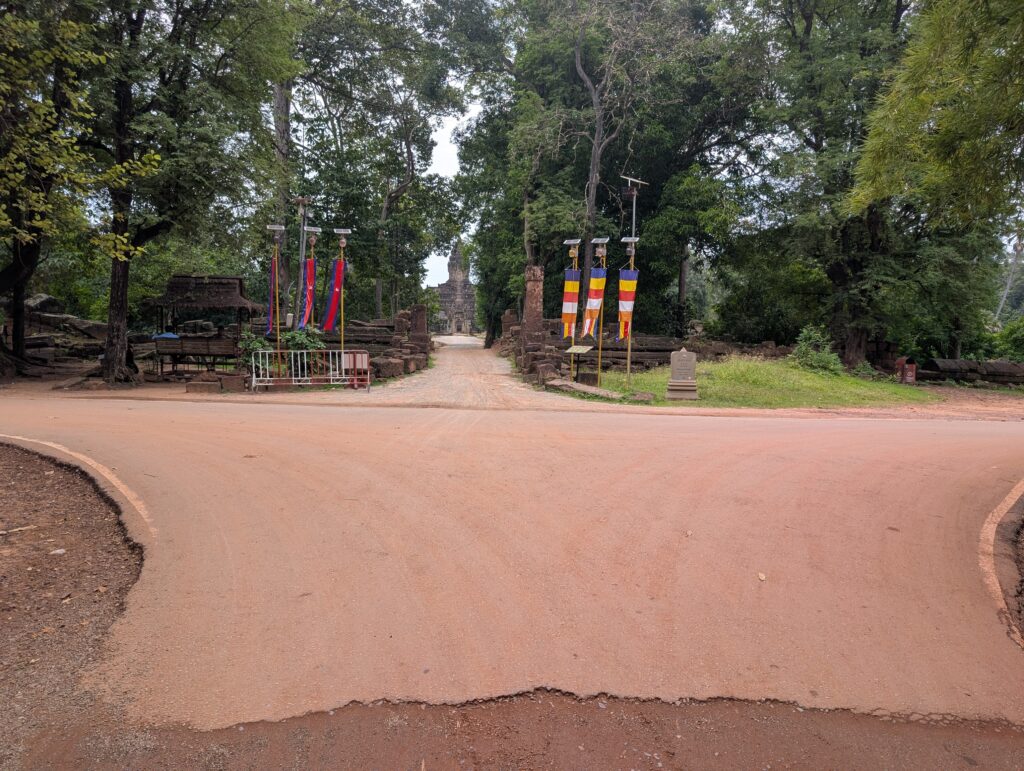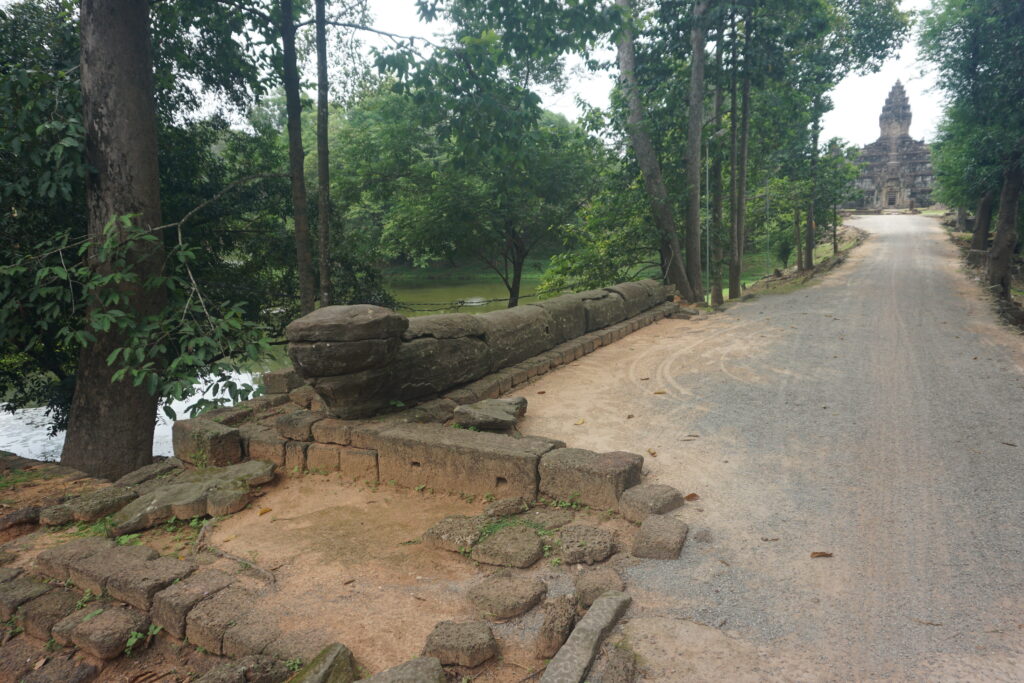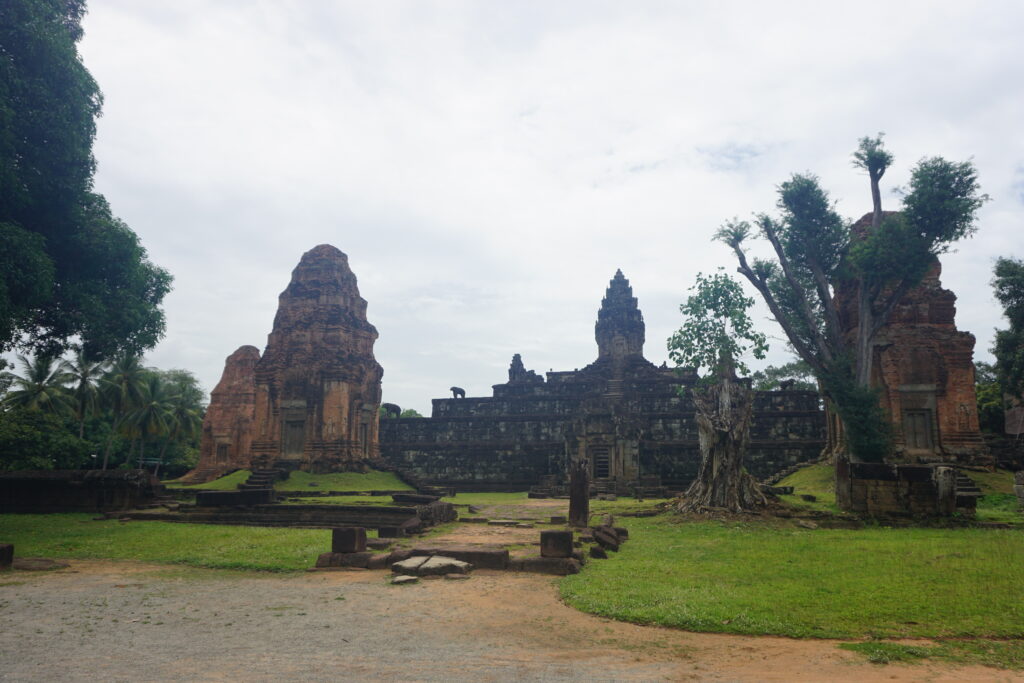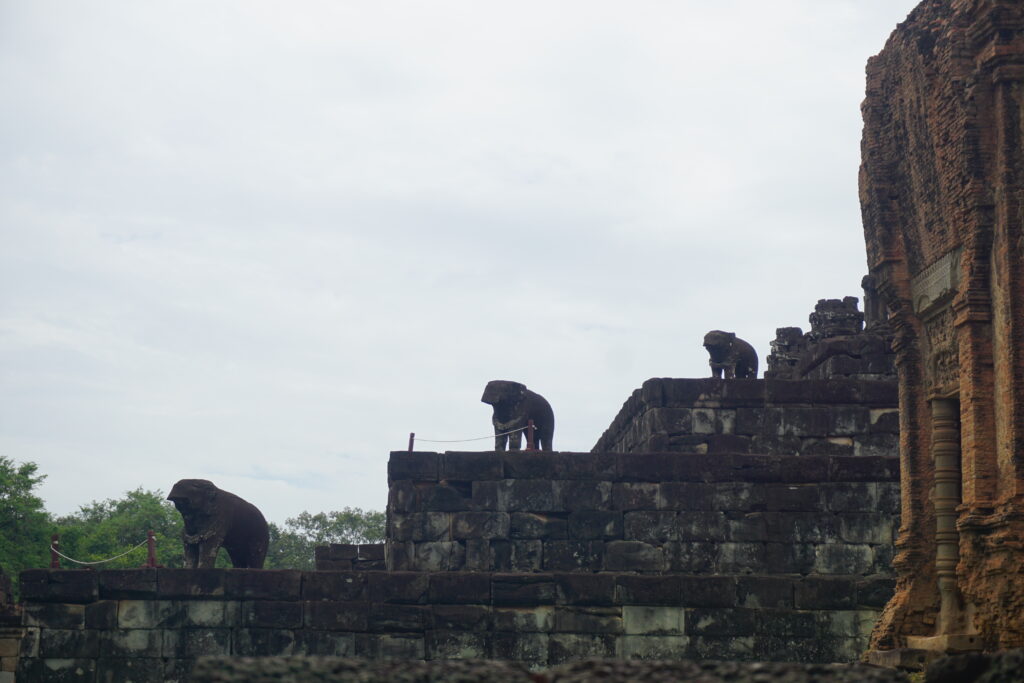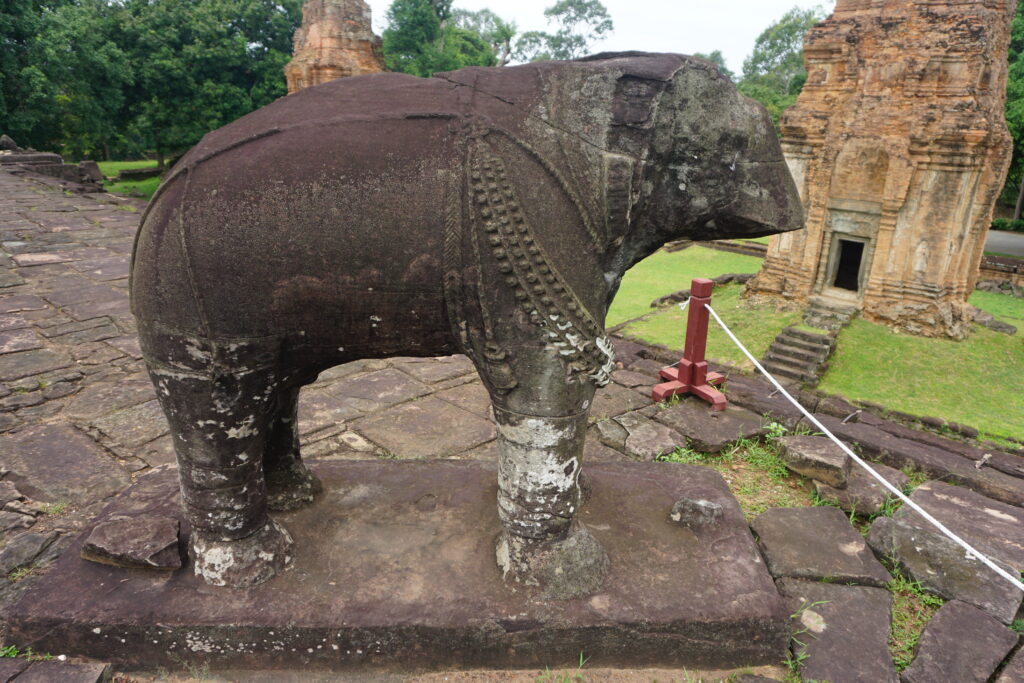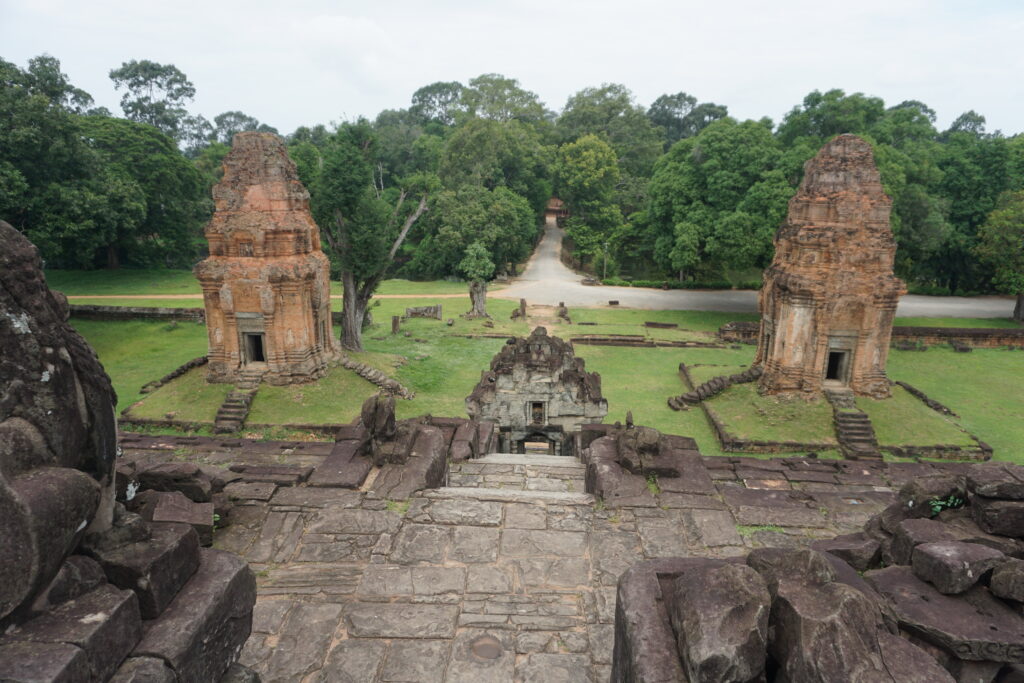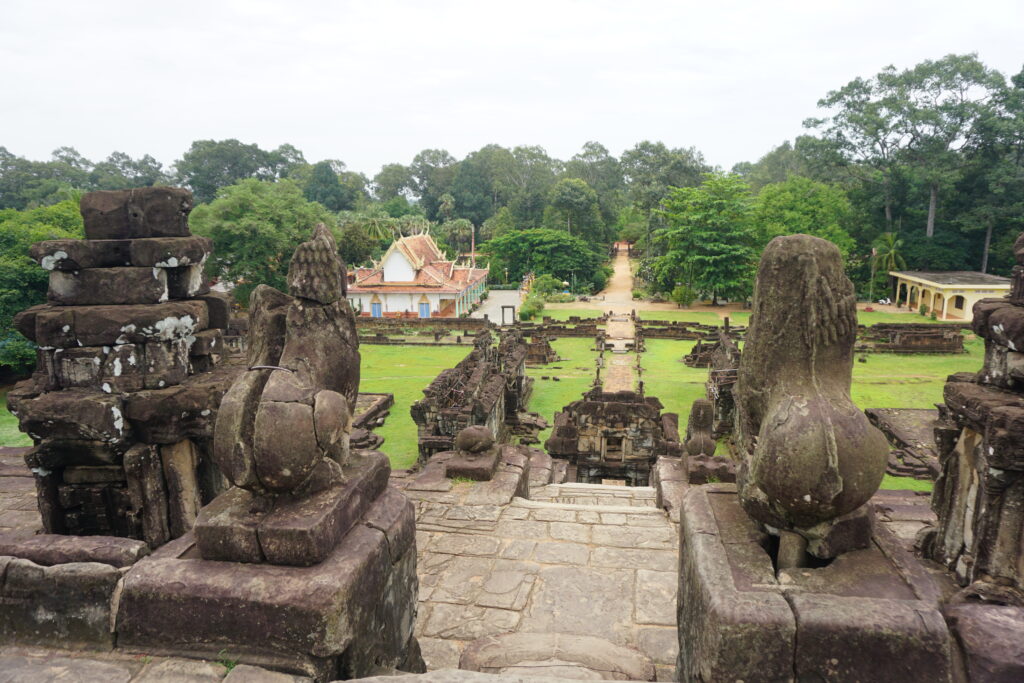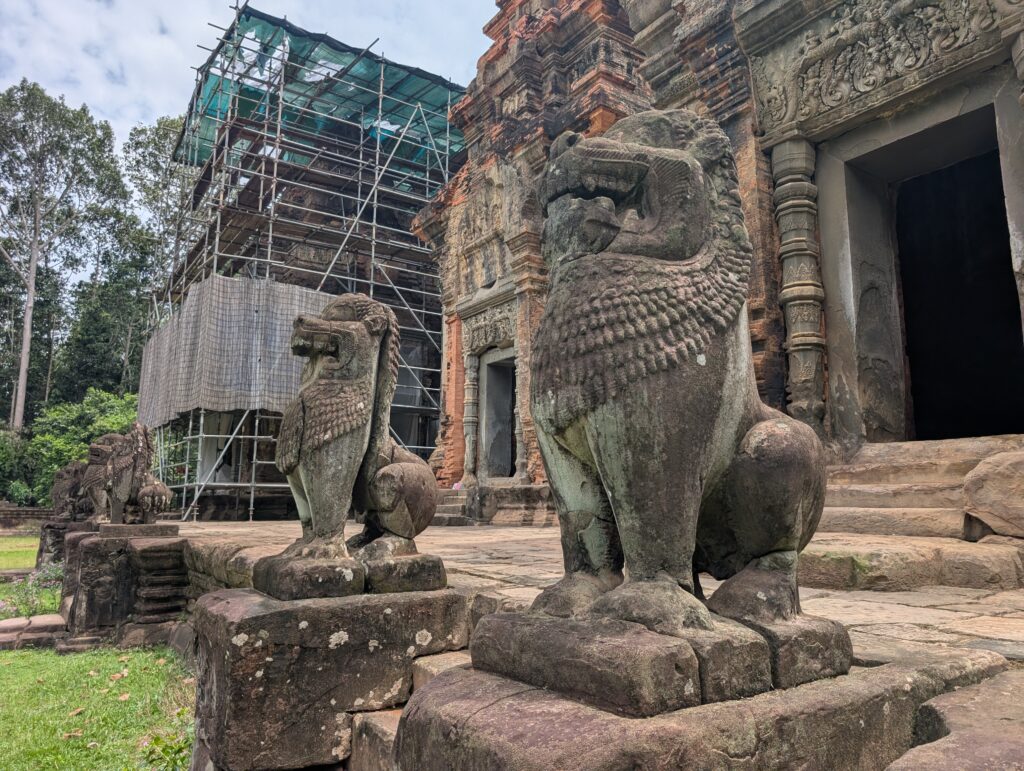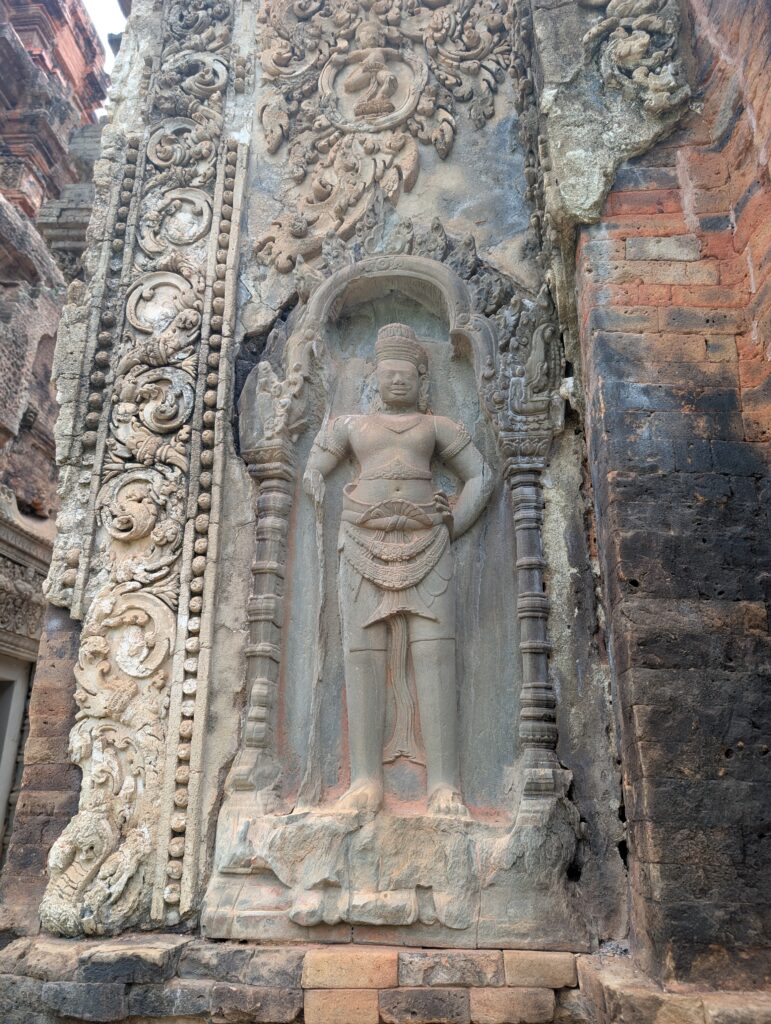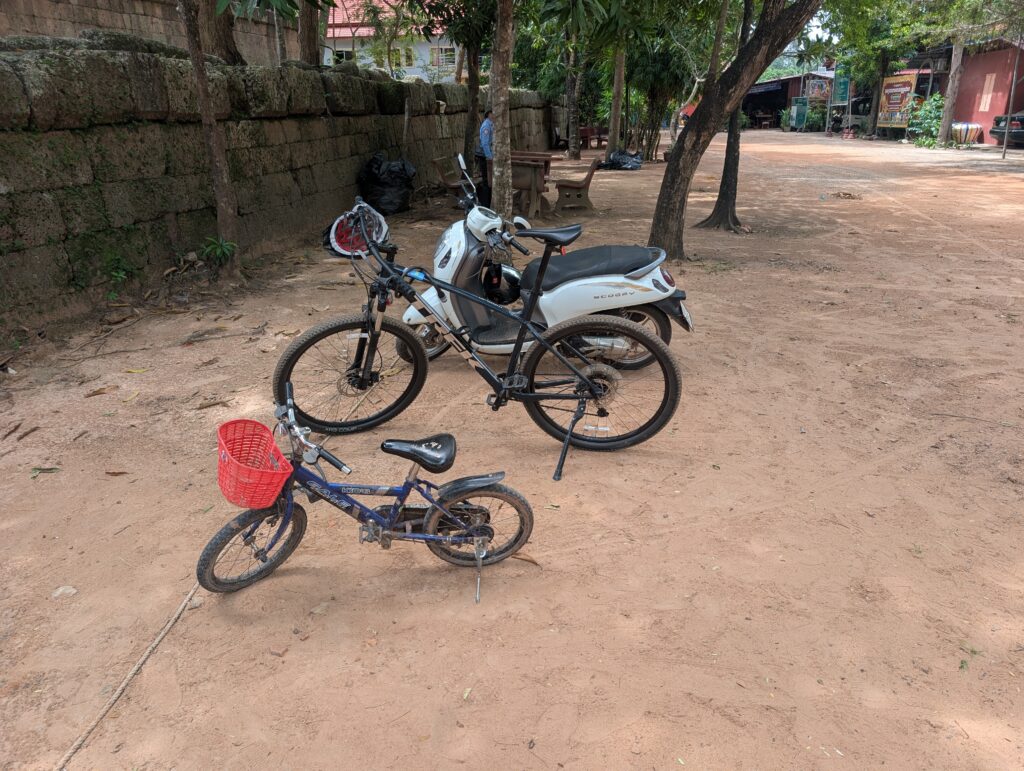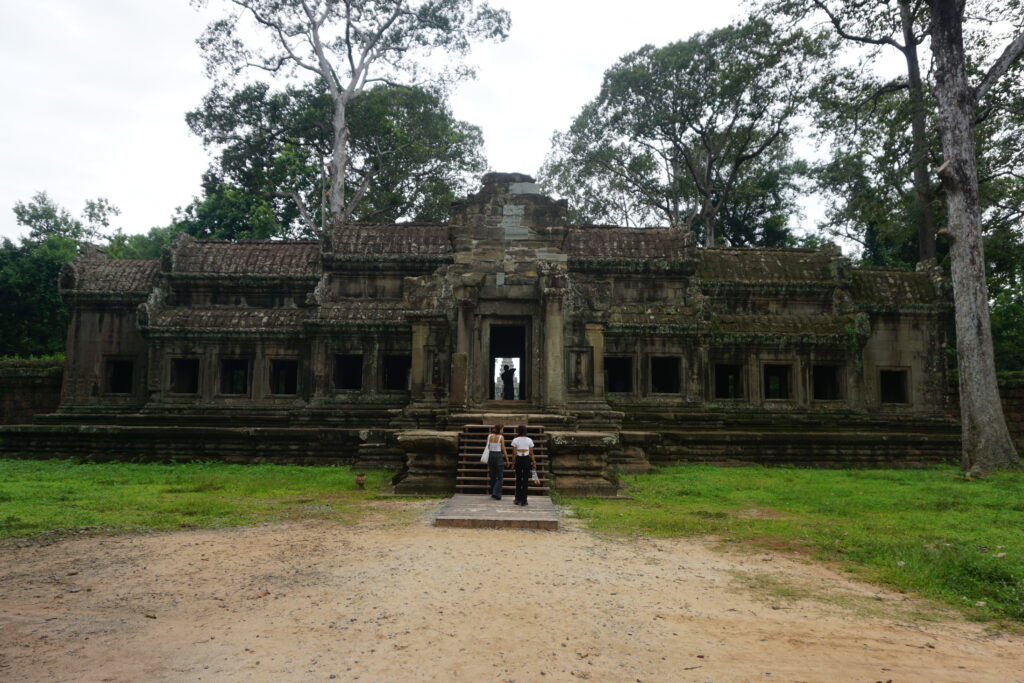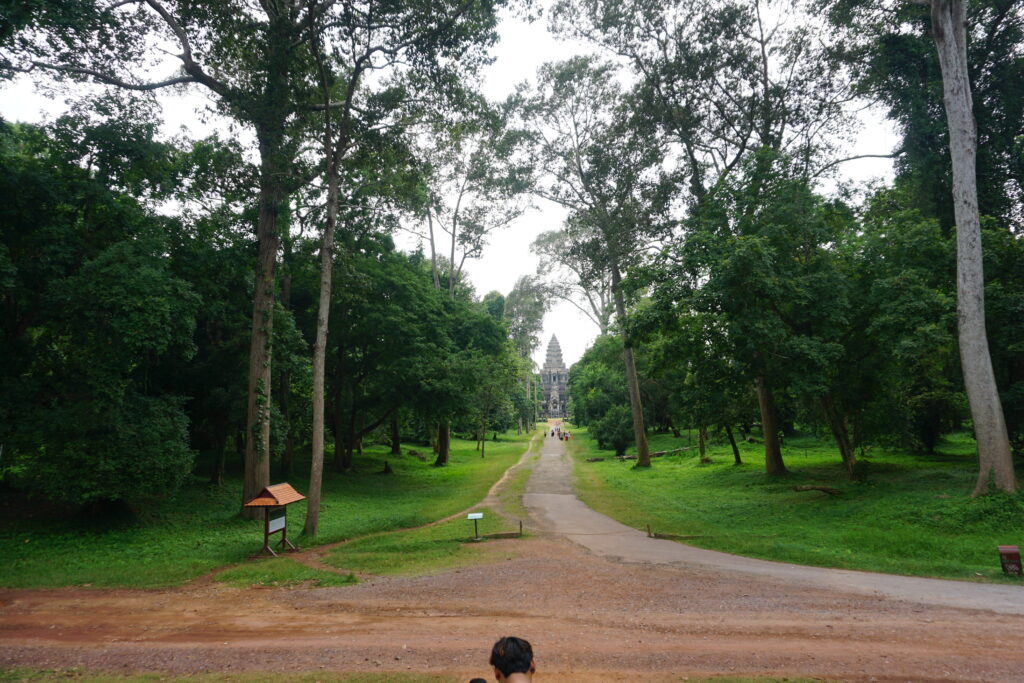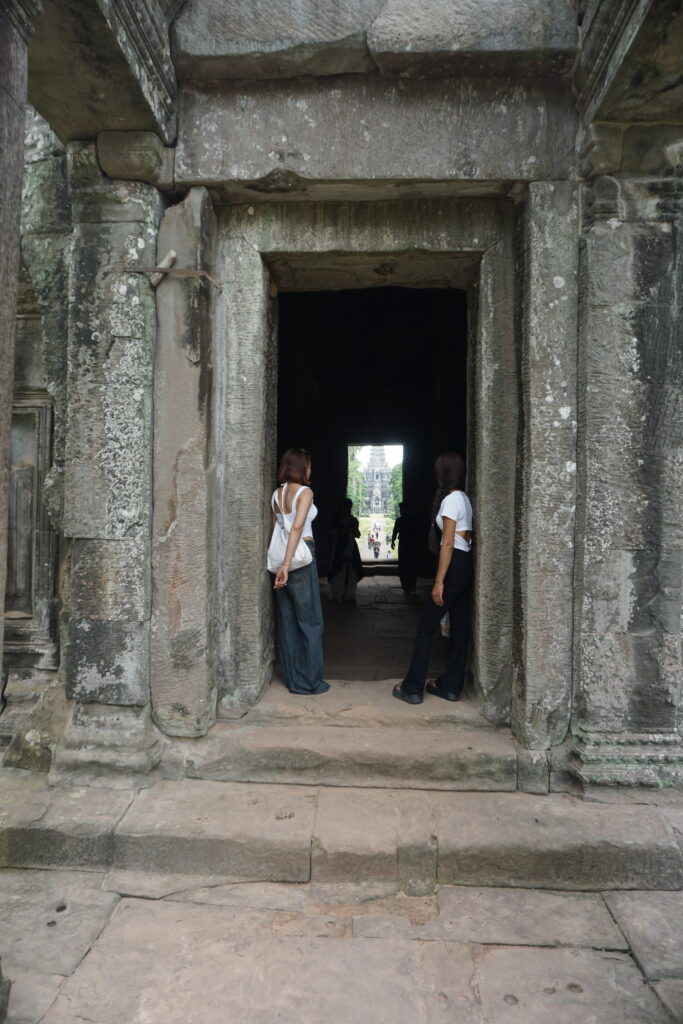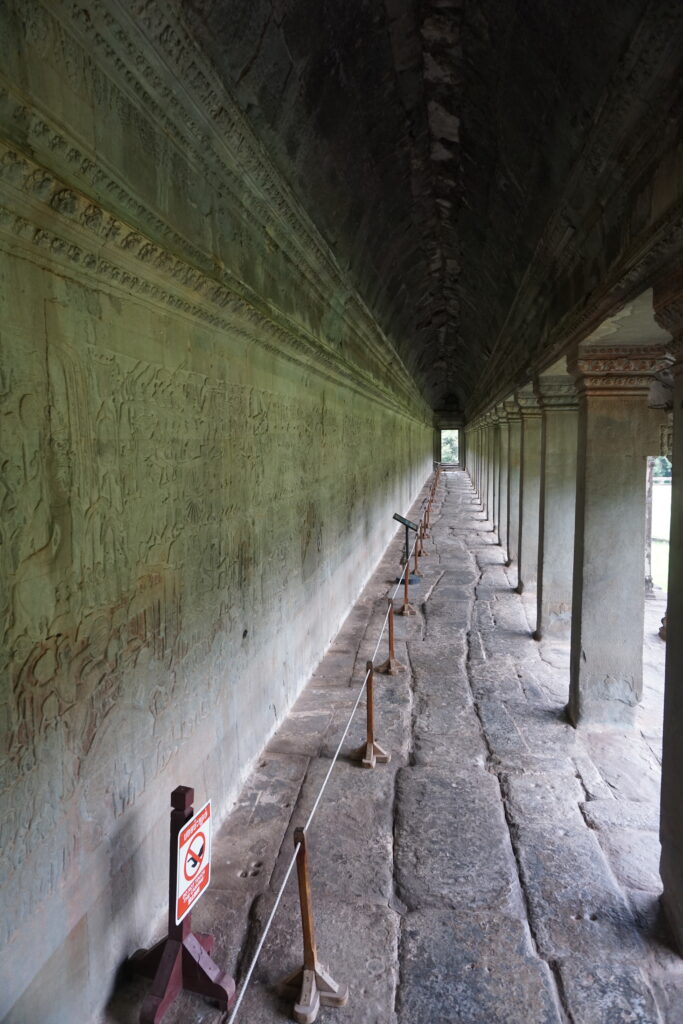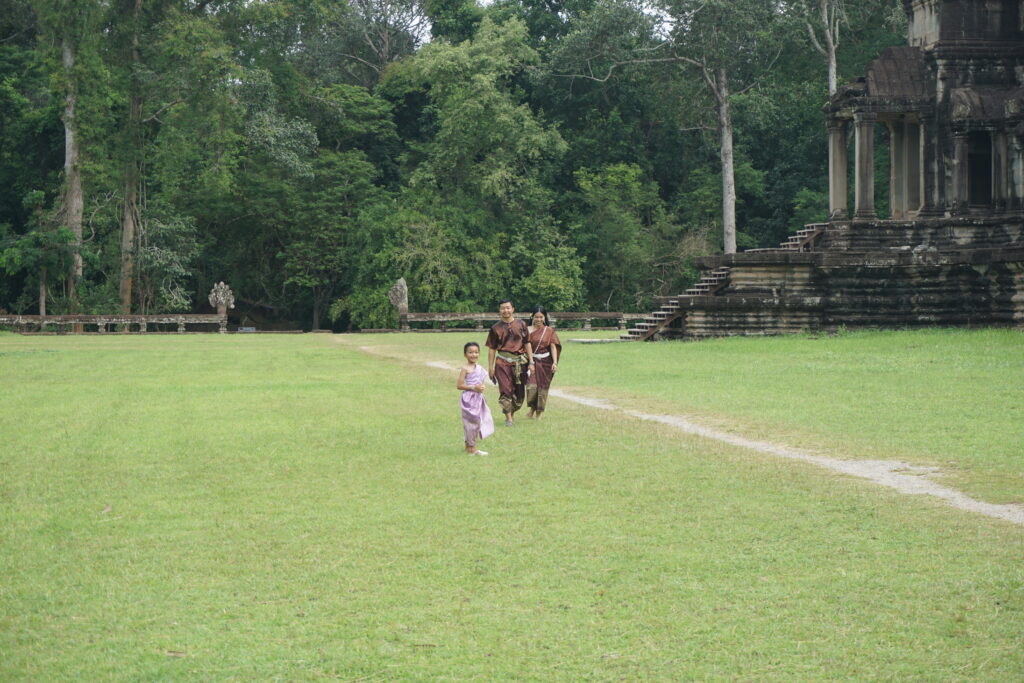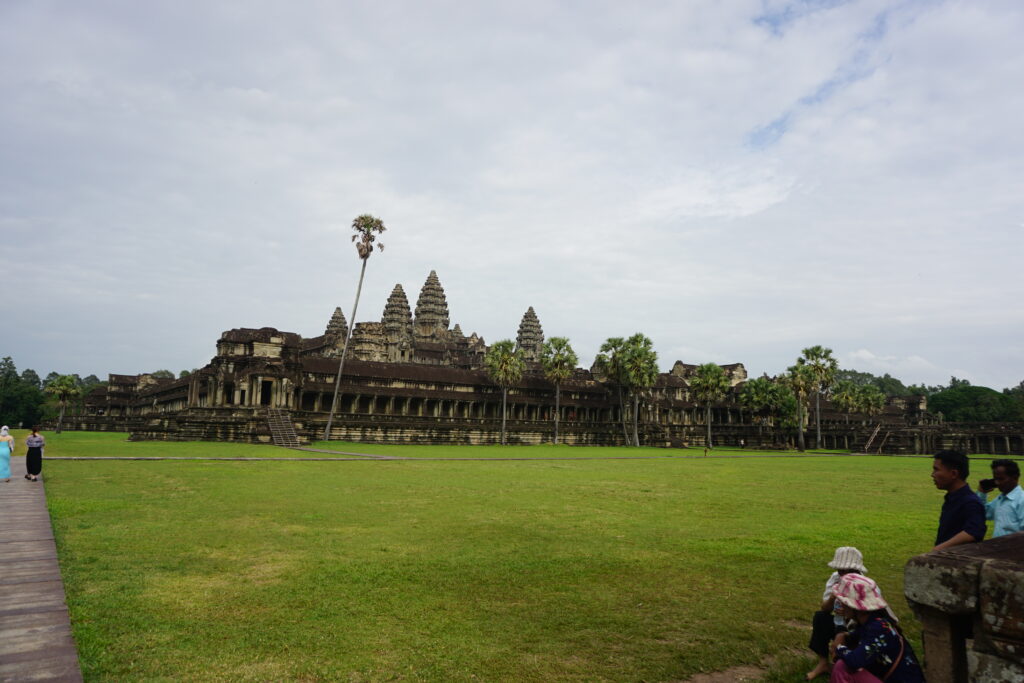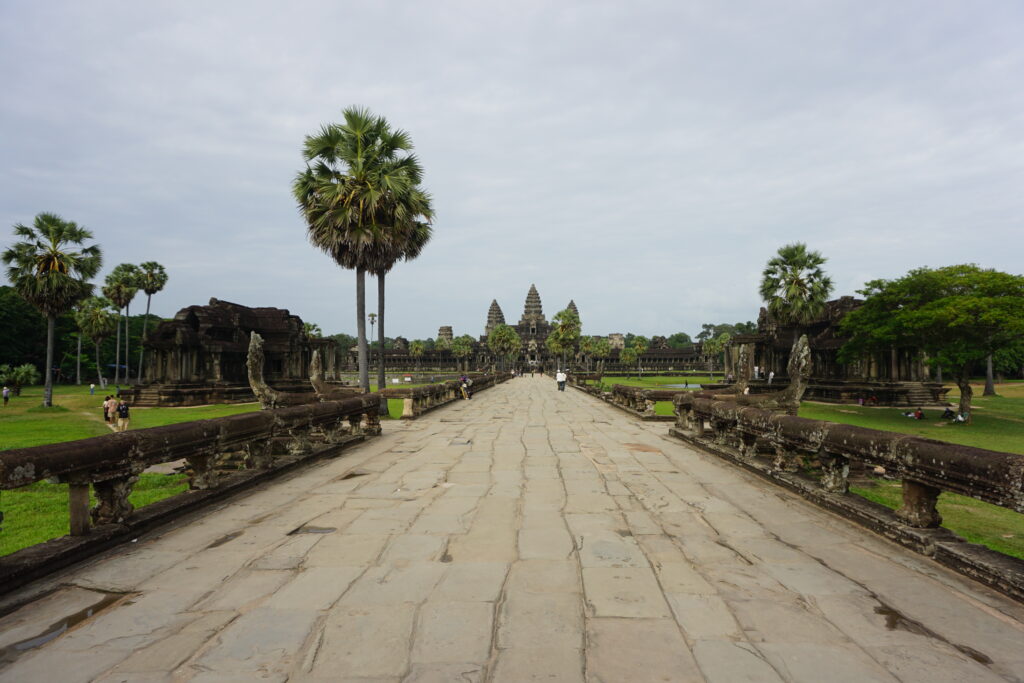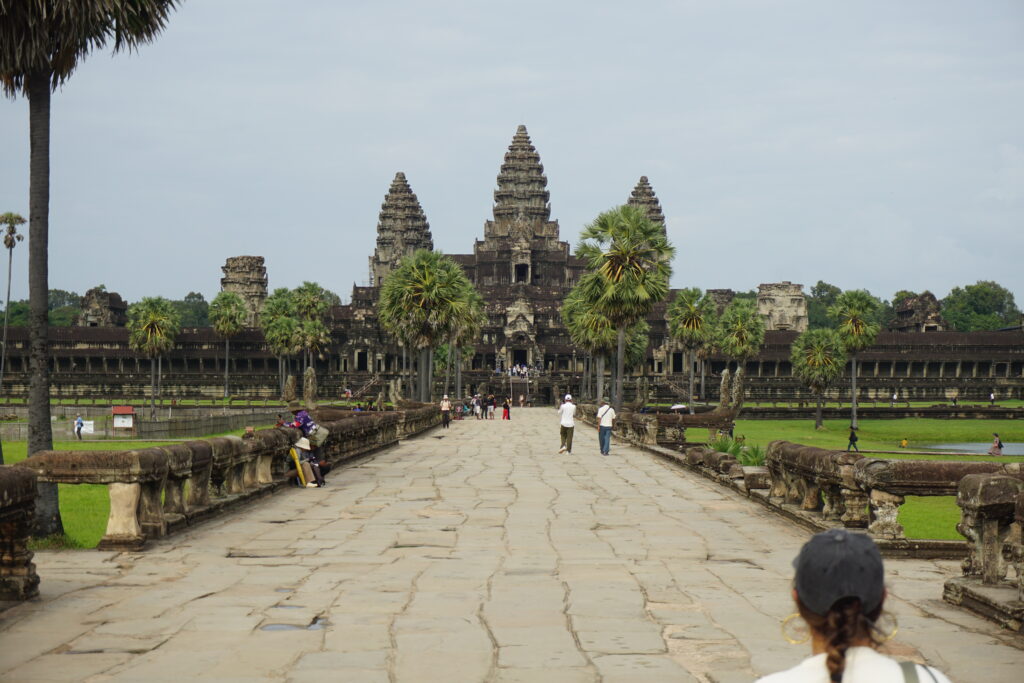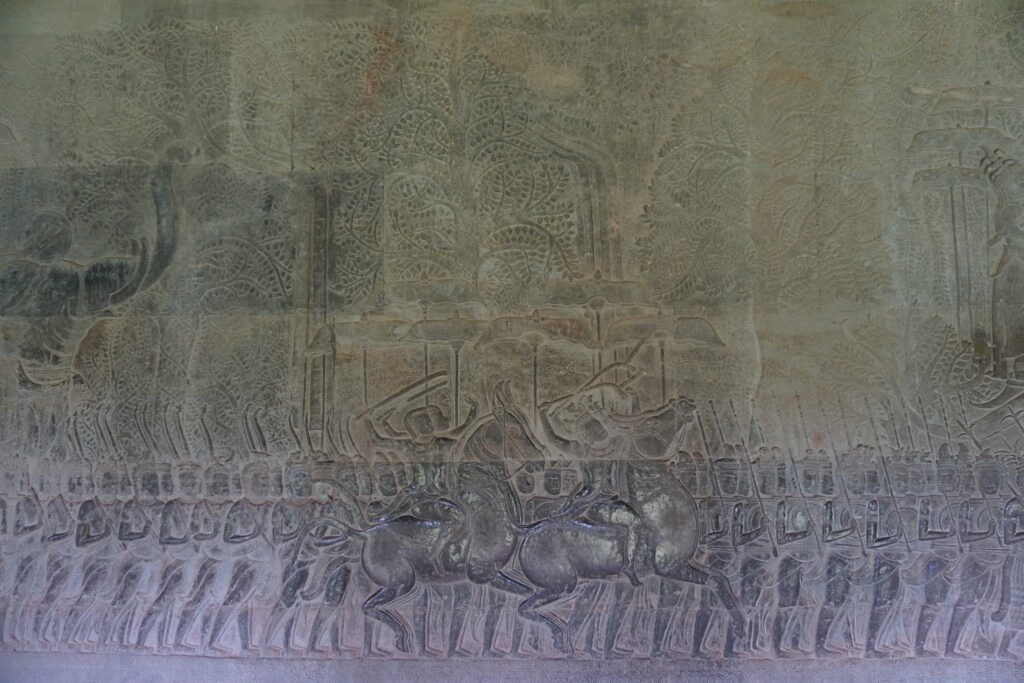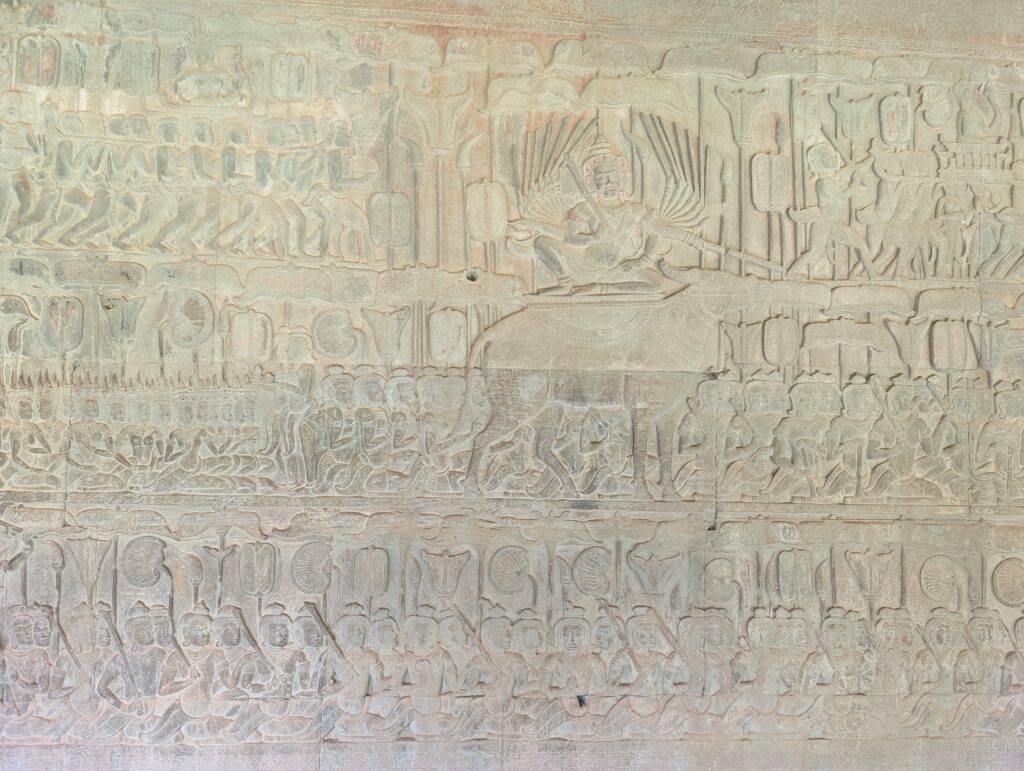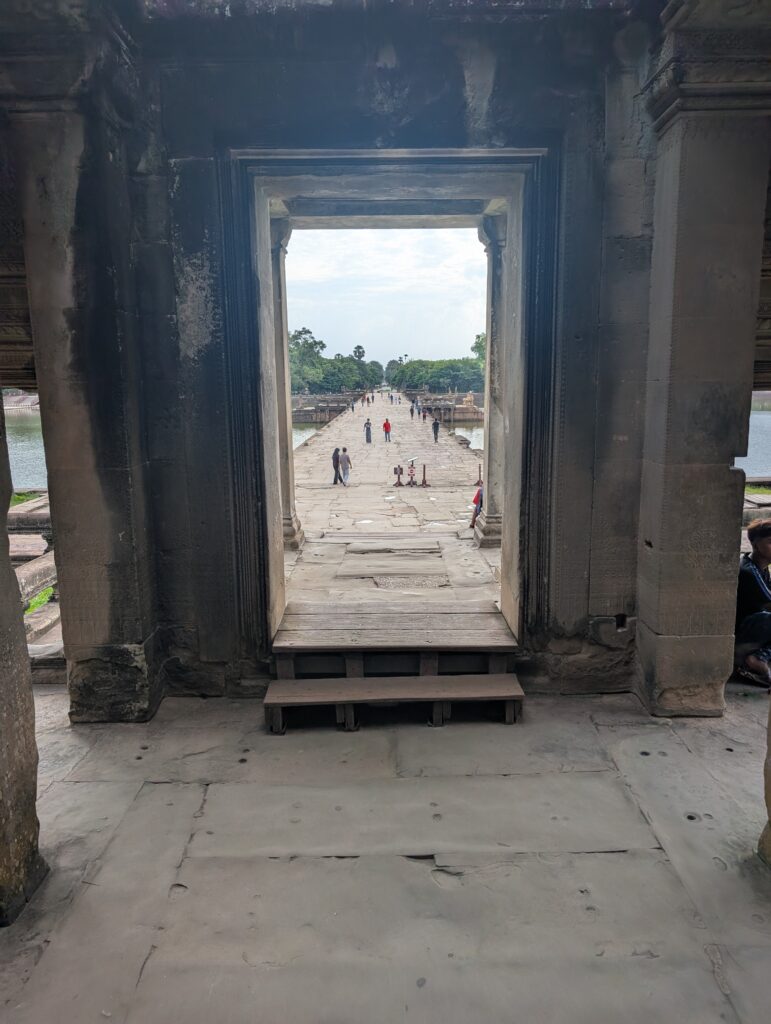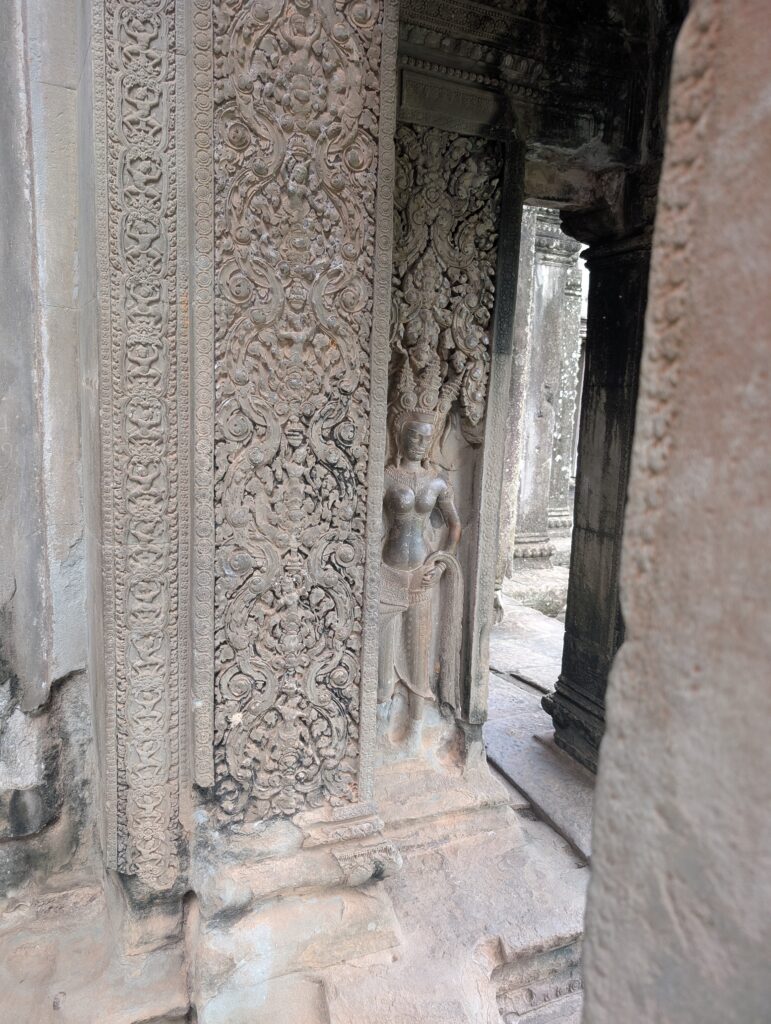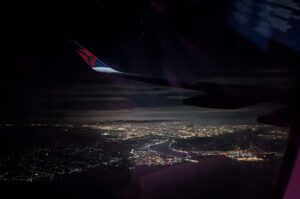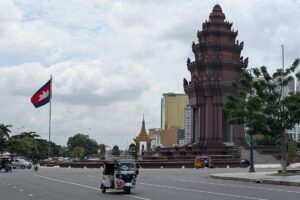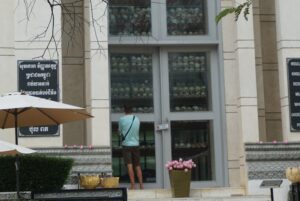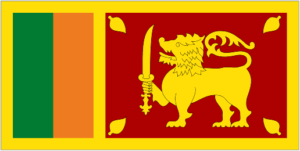Siem Reap
Home of Angkor Wat
My visit to Siem Reap was jam-packed, and all I did was visit Angkor Wat. Although Angkor Wat is considered by some to be one of the wonders of the world, I am not sure how many Americans know of its existence, let alone understand the magnitude of the site. Angkor Wat is a massive complex of hundreds of temples built between the 9th and 12th centuries, during the height of the ancient Khmer Empire. Although Buddhism and Hinduism coexisted in this part of Southeast Asia centuries before the rise of the Khmer Empire, the temples here are dominated by Hindu art. Many people probably come to Angkor Wat expecting to see one big temple, much like casual tourist expectations for Machu Picchu or Chichen Itza. But as with those ancient ruins from the Americas, at some point visitors learn that there are far more structures than you could visit in a standard vacation. Unlike the Mayan ruins though, at least the hundreds of ancient Khmer temples are within about a 30 kilometer radius of the well known temple. Mayan cities cover four countries and stretch from Cancun to Chiapas, and clear down into Honduras.
Silly as it seems, I had to fly to Siem Reap from Bangkok. The distance is only about 400 kilometers, and the trip would normally take seven or eight hours on the bus, with a border crossing included. Because Thailand and Cambodia were in the midst of a border spat, land crossings were impossible during my visit. Cambodia and Thailand have had an on-again-off-again argument over a few temples right along their shared border for decades. In the weeks before I visited, a soldier and several civilians had been killed in an outbreak, resulting in the closed border. Neither country had shut off the air routes, however, and there seemed to be no threat of violence to tourists or anyone else who wasn’t right at the shared border, so I flew. My flight never topped 15,000 feet and took less than an hour. But by the time I made my way to the airport, passed through all of the checkpoints for an international flight, allowed for standard Southeast Asian delays, and then caught a shuttle for the hour long trip from Siem Reap airport back into town, I didn’t really save much time by flying. It did cost me a few thousand credit card points, over and above the tax amount that by itself was more than the bus fare would have been.
I ate breakfast in a nice lounge after clearing security, and walked right to the airport shuttle. All told, my trip was pretty smooth. I arrived a bit too early to check into the Siem Reap Center Hotel. Like many undeveloped and developing countries with major tourist attractions, Angkor Wat is crawling with tour companies, tuk tuk drivers, tour guides, and people attempting to sell all sorts of tourist kitsch. Nearly everyone who posts about visiting these sites says you learn so much more if you hire a tour guide. My experience is that tour guides are almost always friendly, and will tell you a good story, but their quality varies as widely as their pricing, and those two are often not at all correlated. I decided that I would learn what I could during the heat of my arrival afternoon – when I had a couple of hours to kill anyway – by walking through the Angkor National Museum. It was on my way. Perhaps this would be better than rolling the dice with a marginal tour guide, or one whose most important characteristics were knowing how to drive a tuk tuk and navigate the tourist circuits in the park.
The museum had many artifacts and did a nice job of laying out the history of the Khmer Empire in brief. They also offered different examples of the evolution of art over the centuries during which the temples were constructed. It identified different elements of Hindu art, and discussed the basic themes and stories from Hindu mythology. The museum also explained how Buddhism eventually mostly supplanted Hinduism in these temples, and as such they were repurposed for use in that religion, hence the large amount of Buddhist art present in artifacts and statues. The bas-relief art is nearly all Hindu. The museum also housed other artifacts, such as stelae and boundary stones with Sanskrit and ancient Khmer inscriptions.
(Continued)
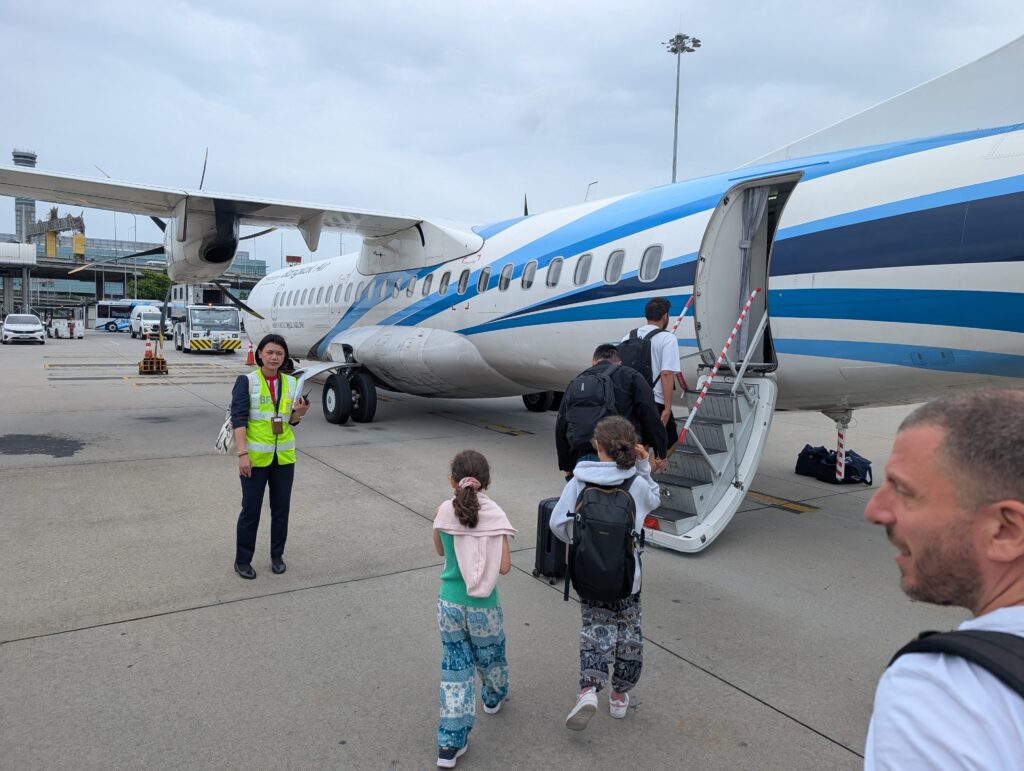
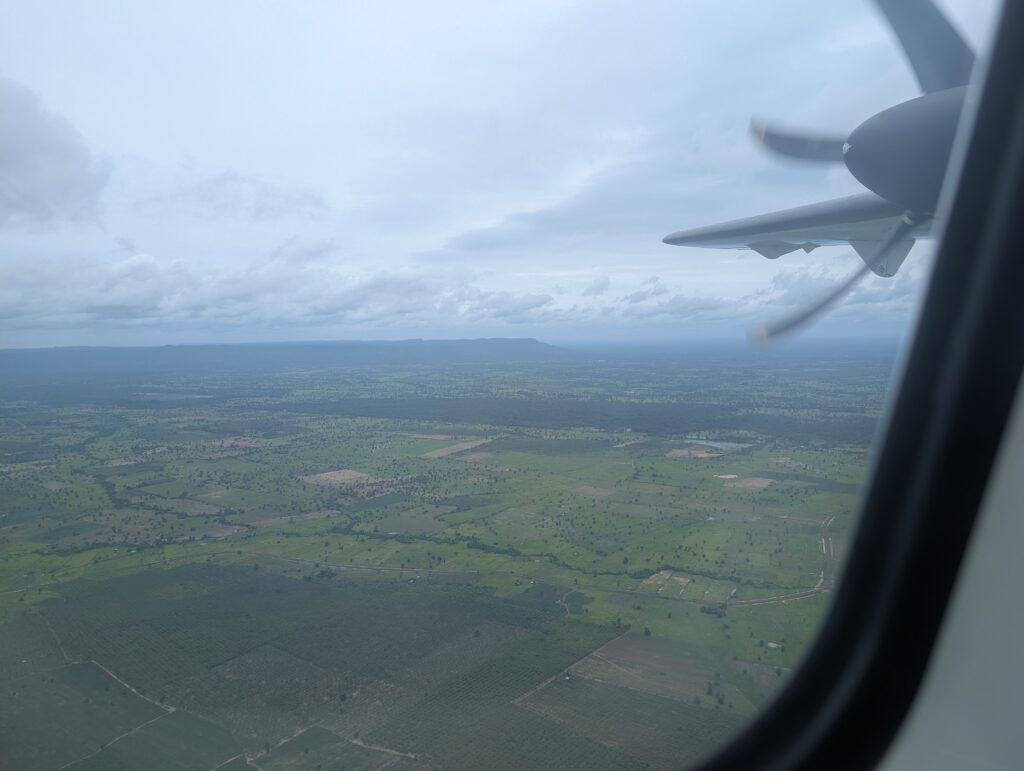
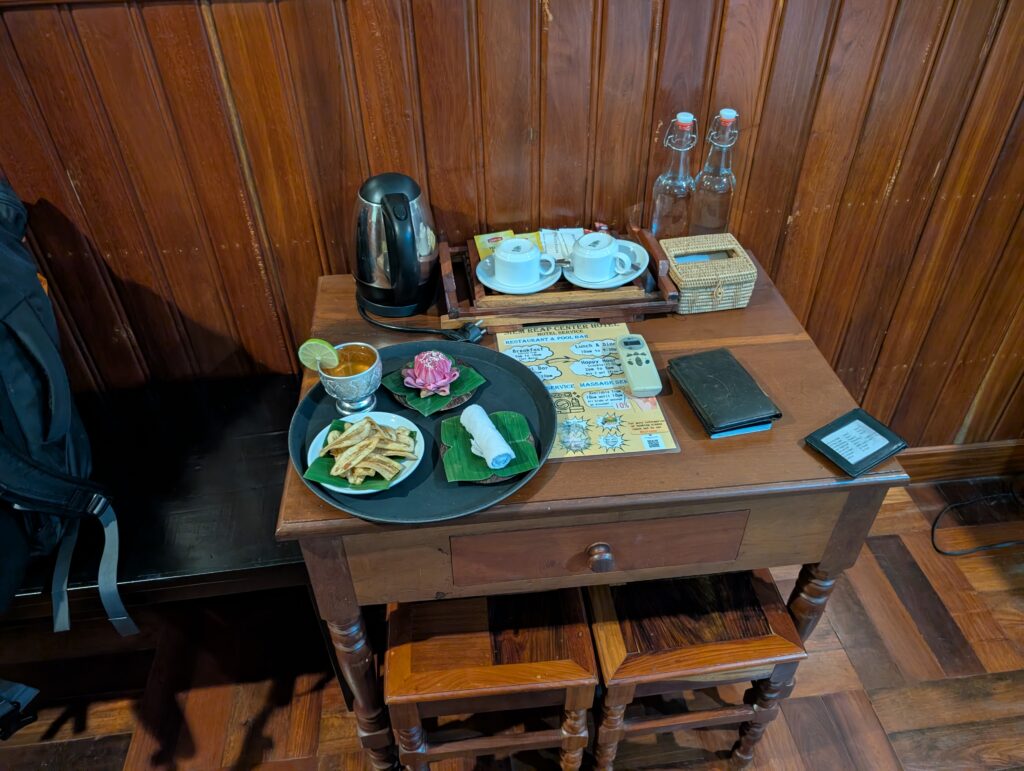
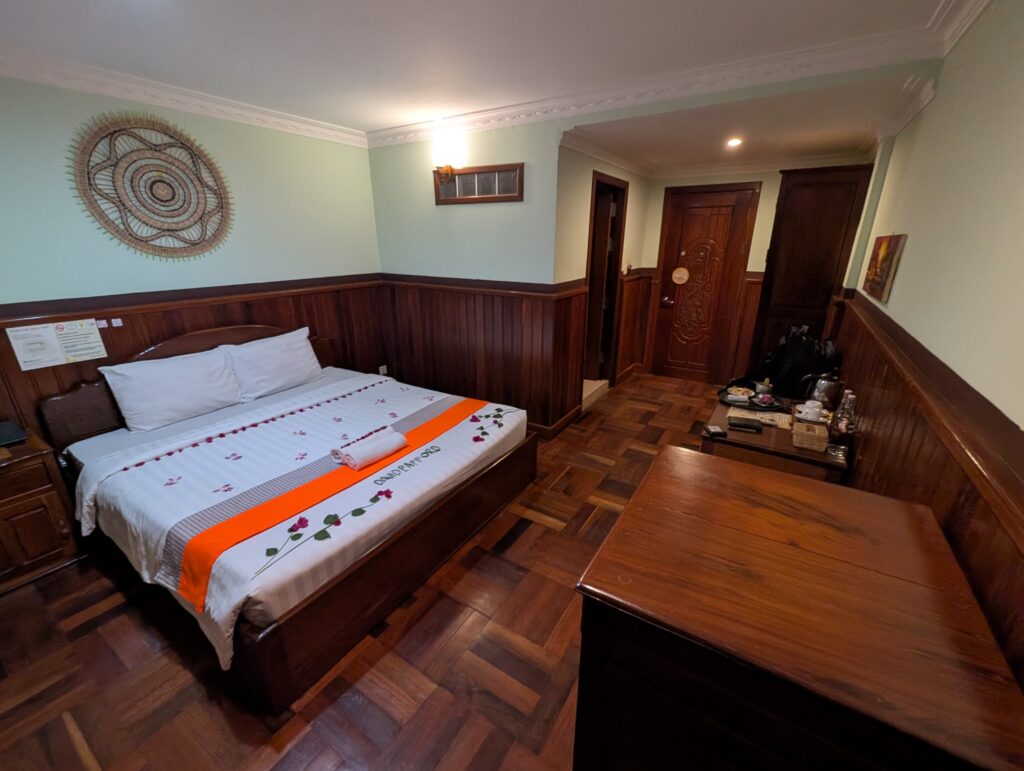
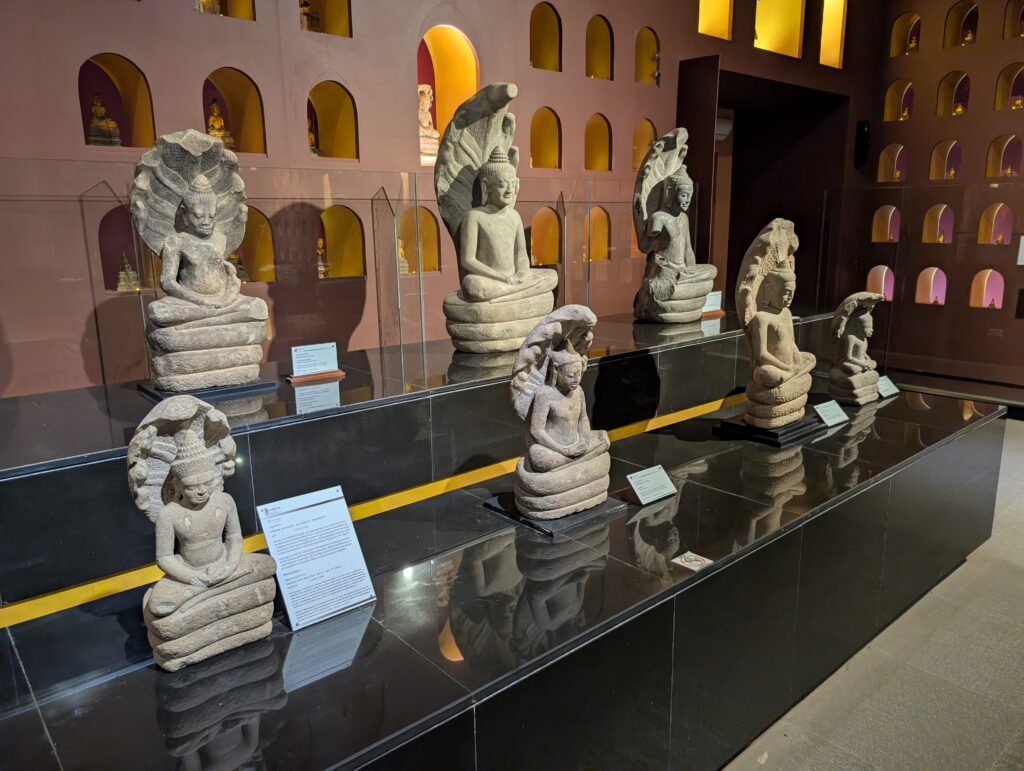
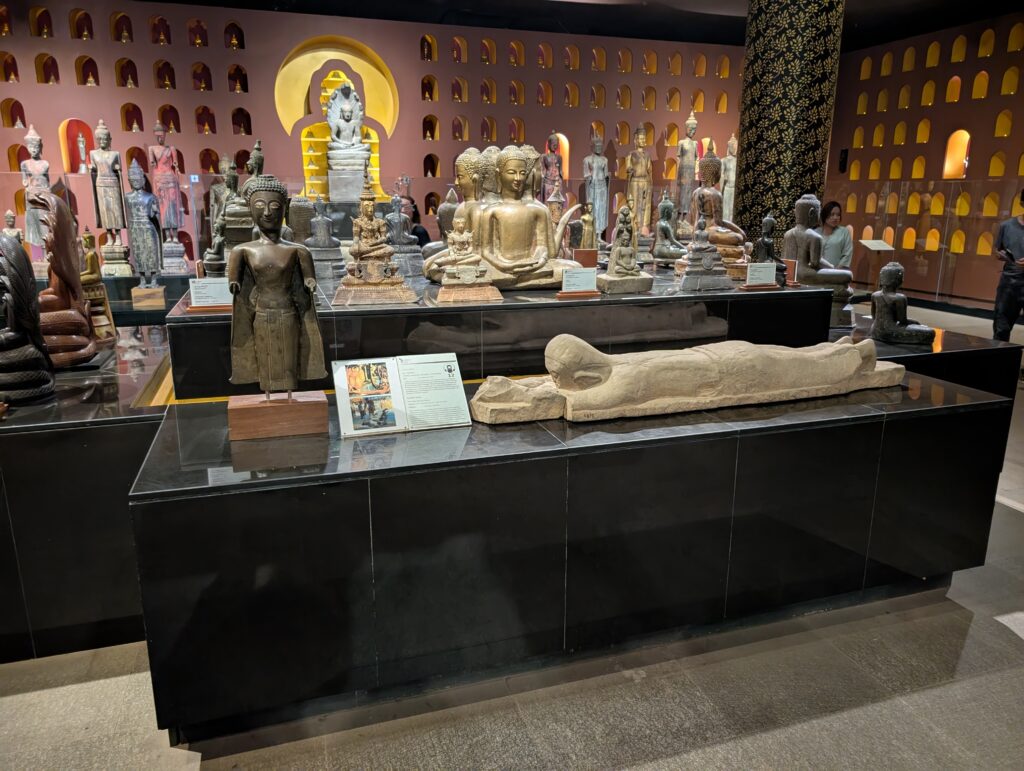
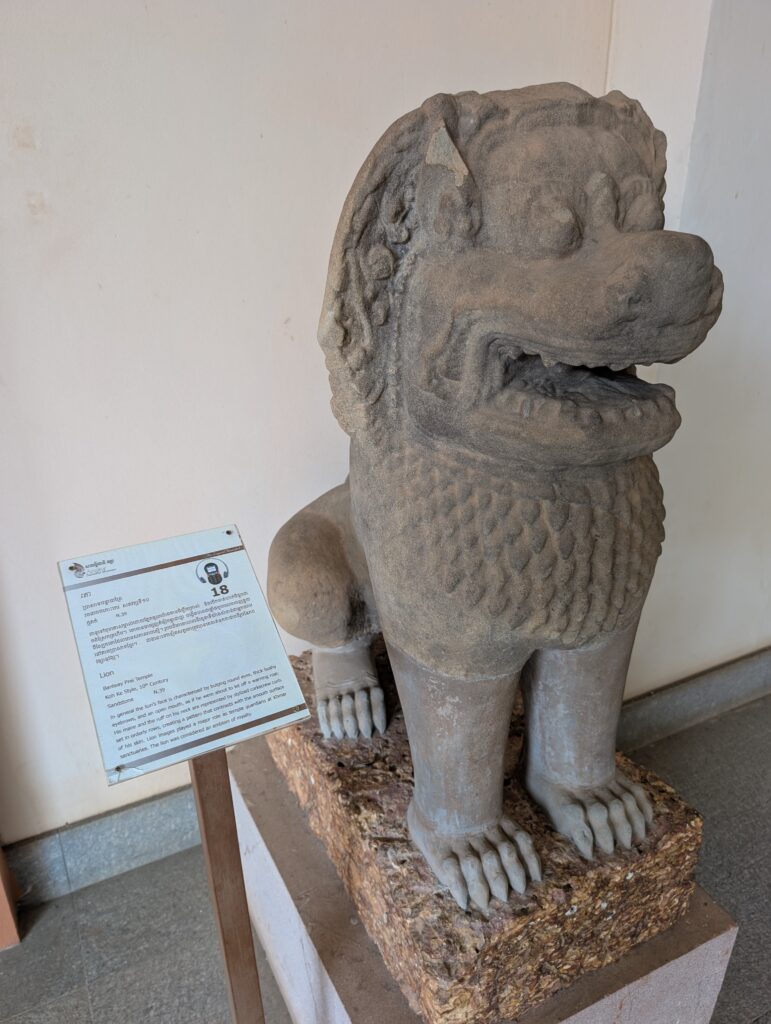
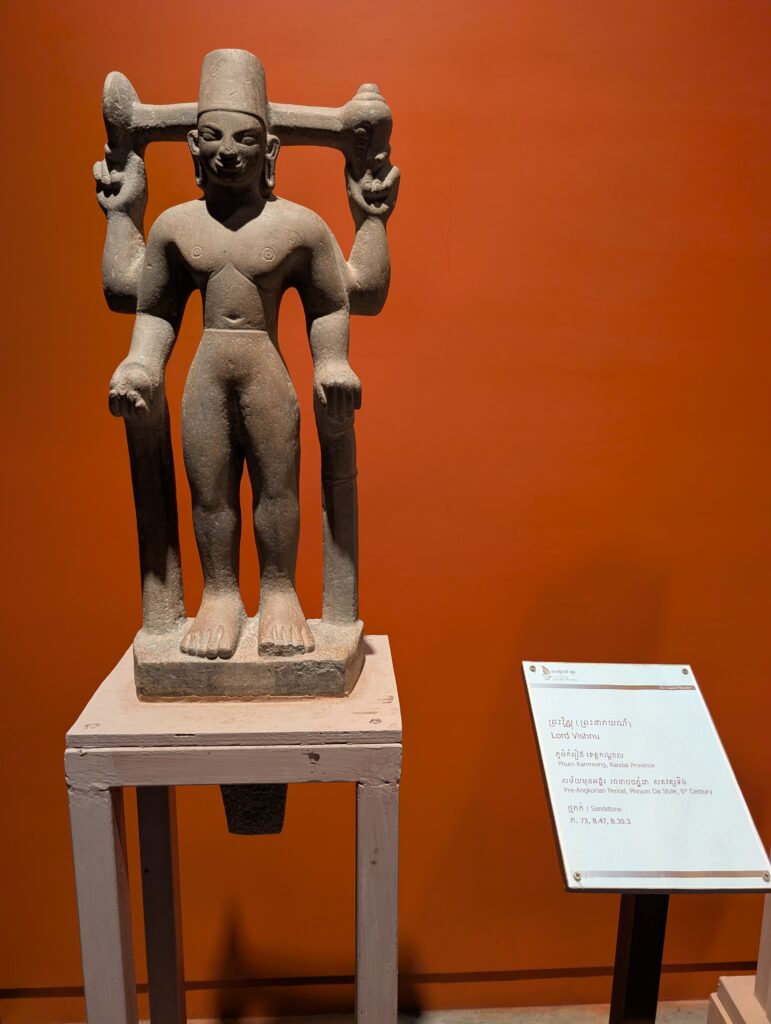
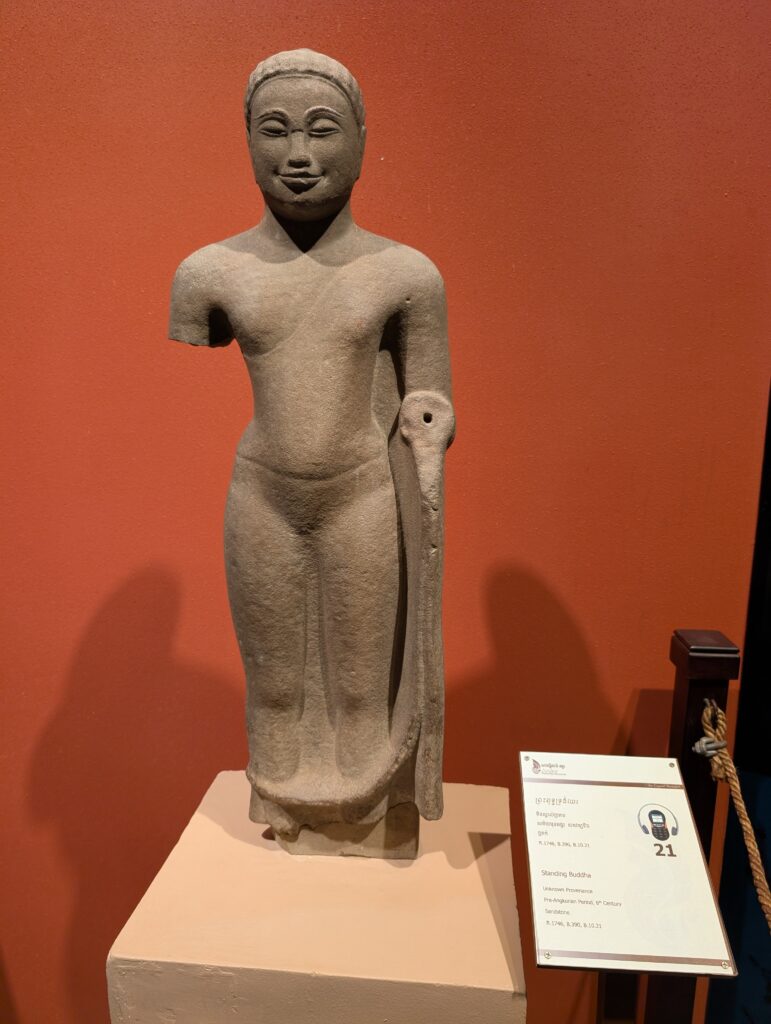
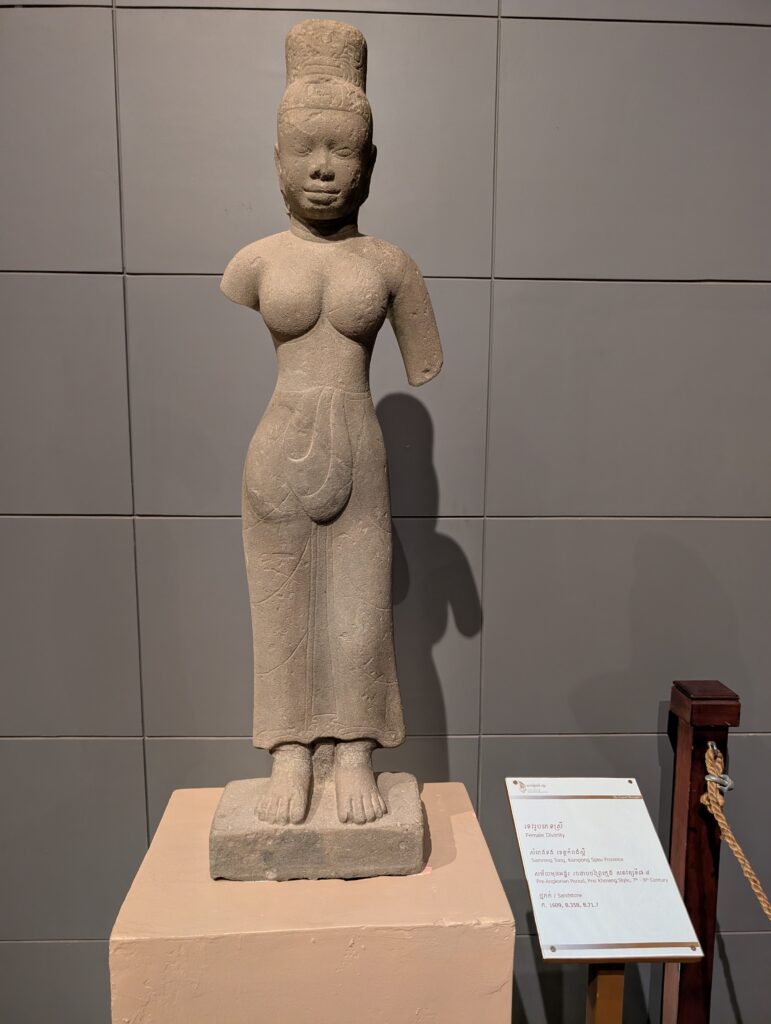
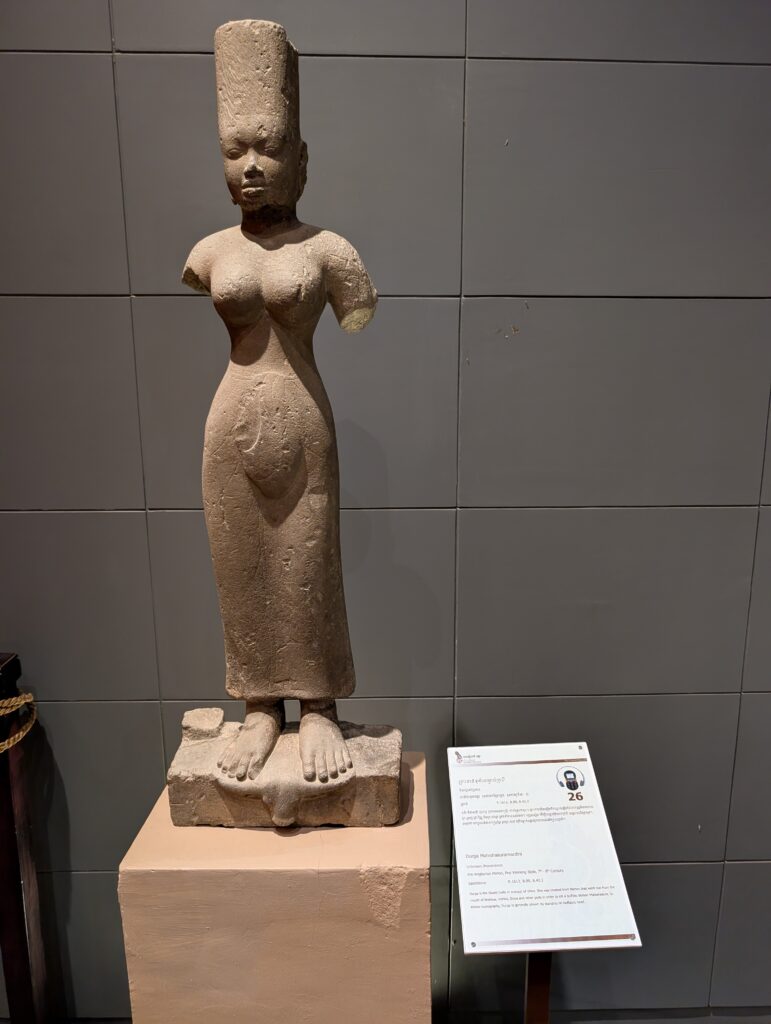
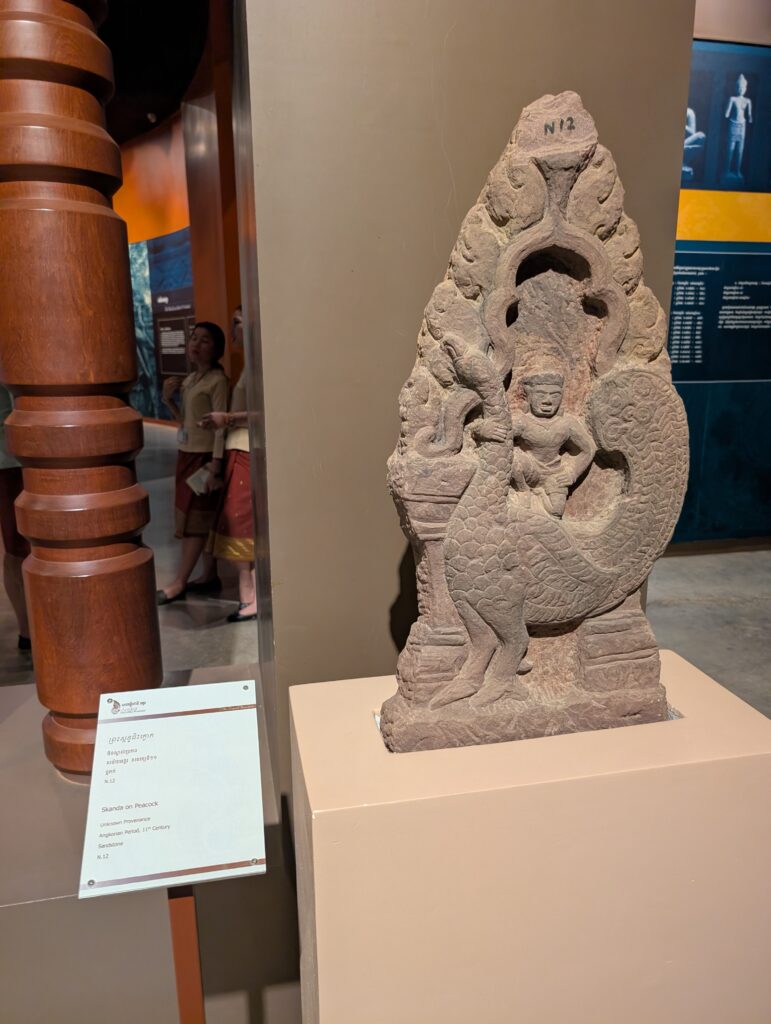
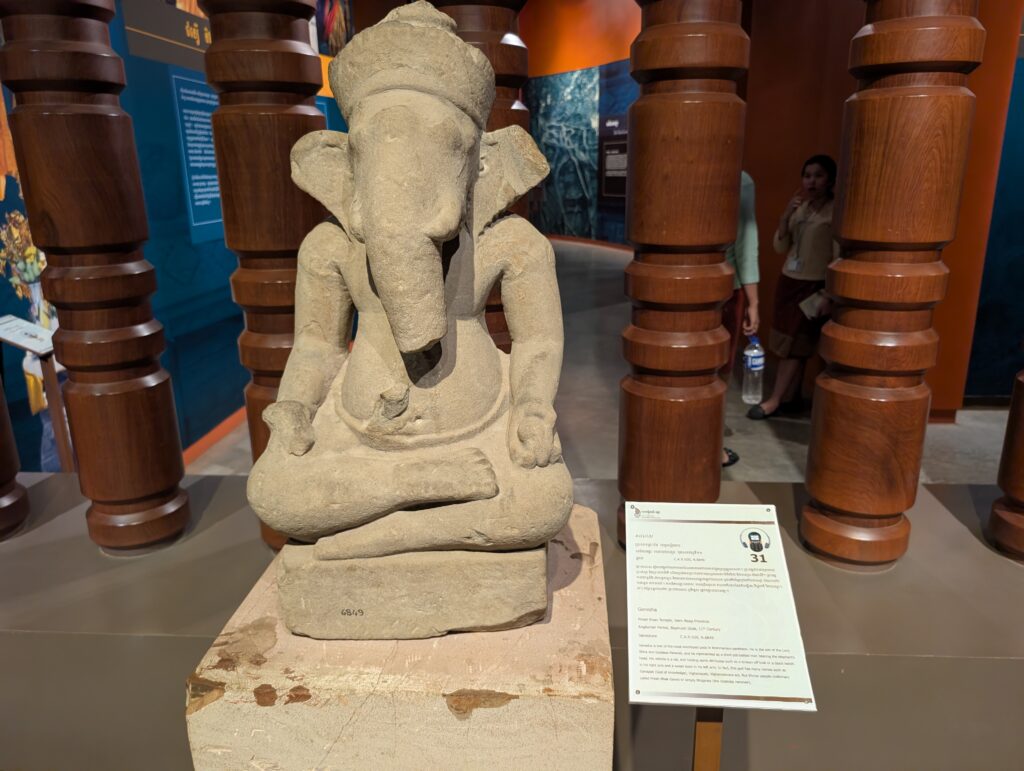
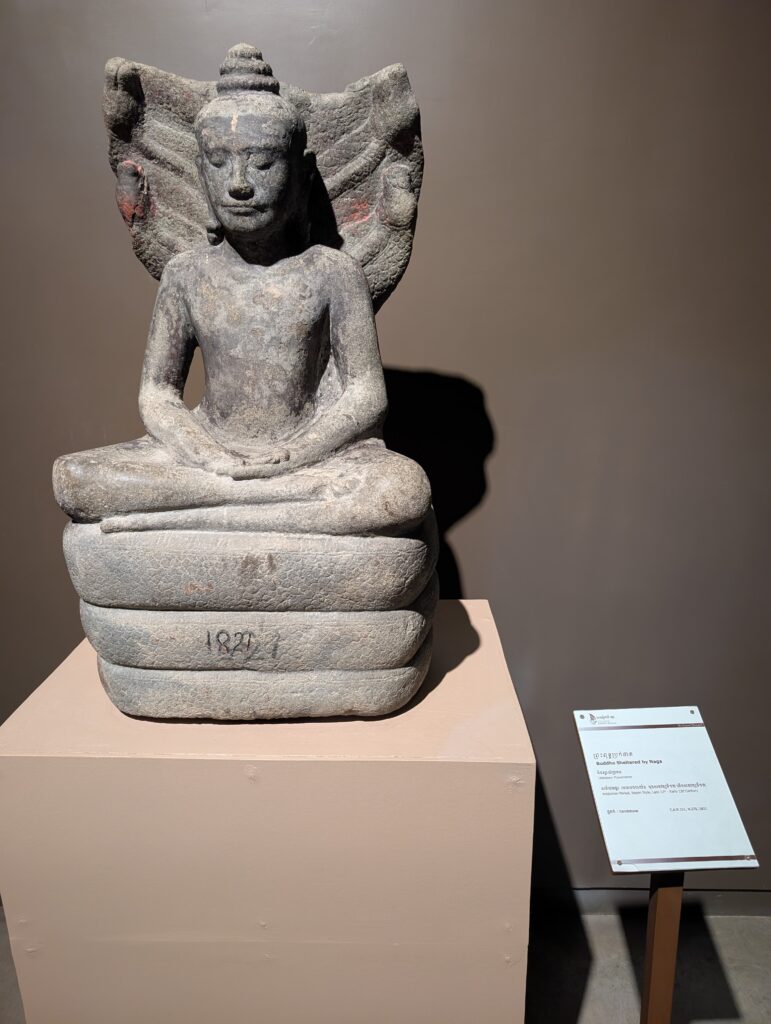
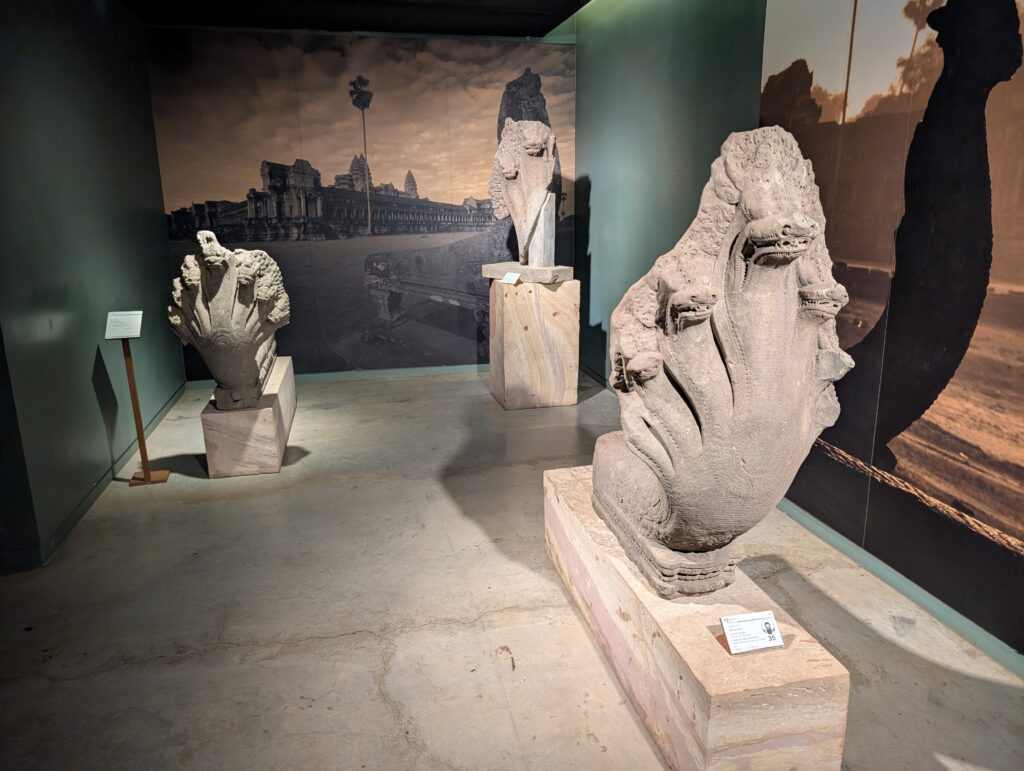
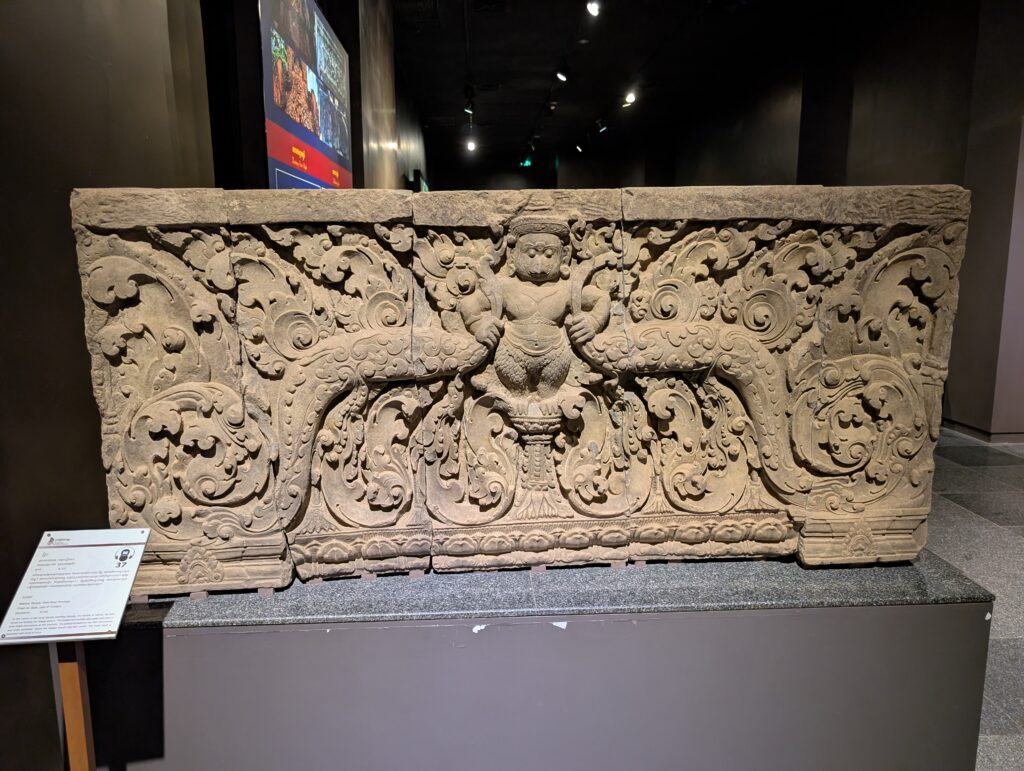
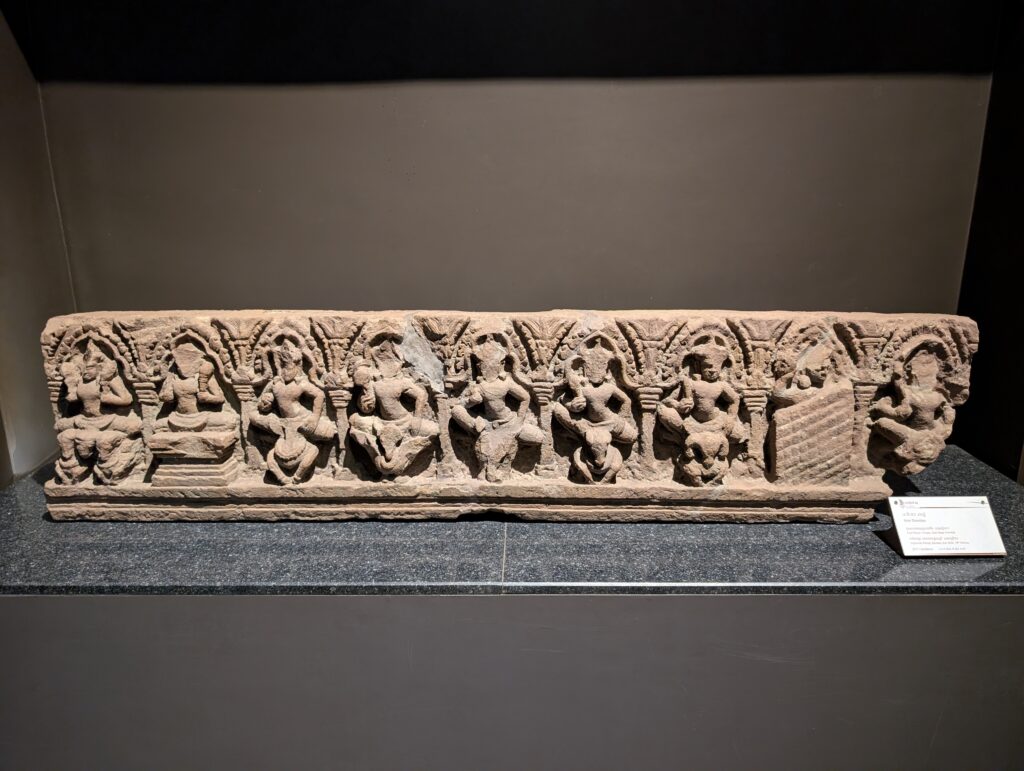
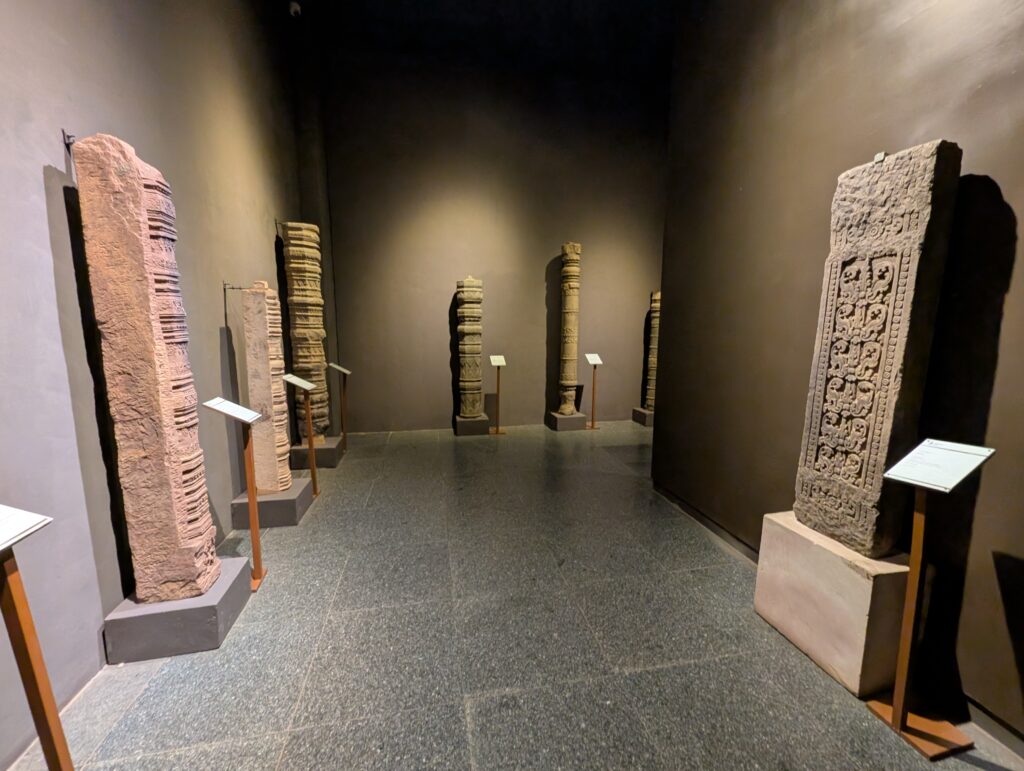
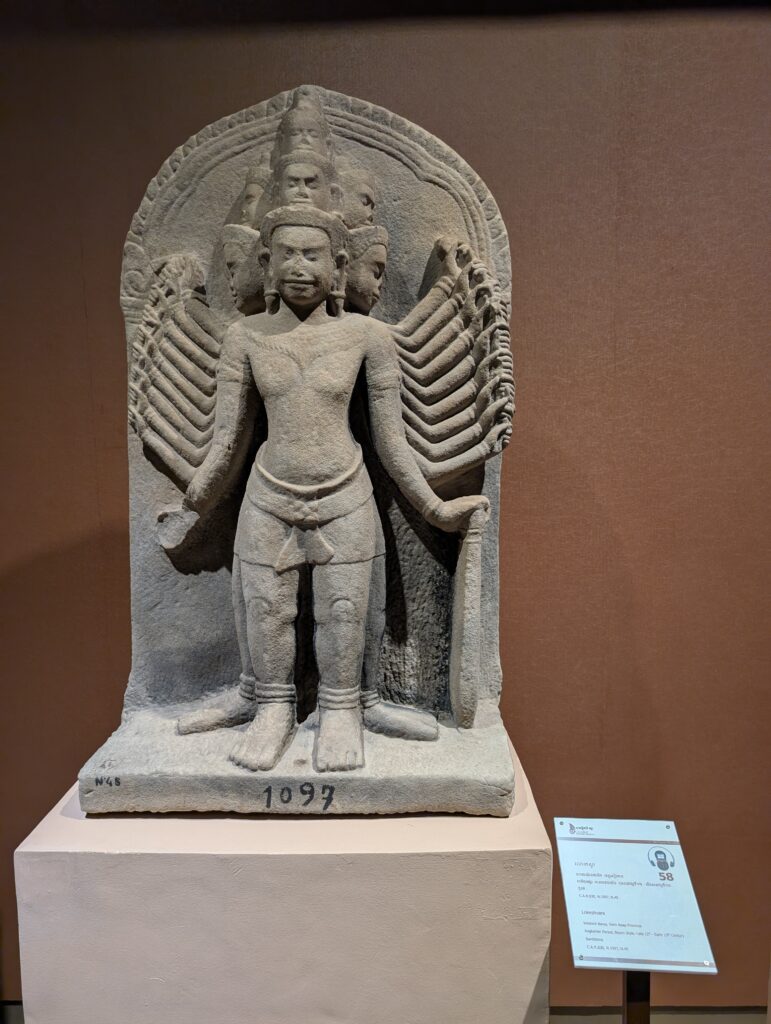
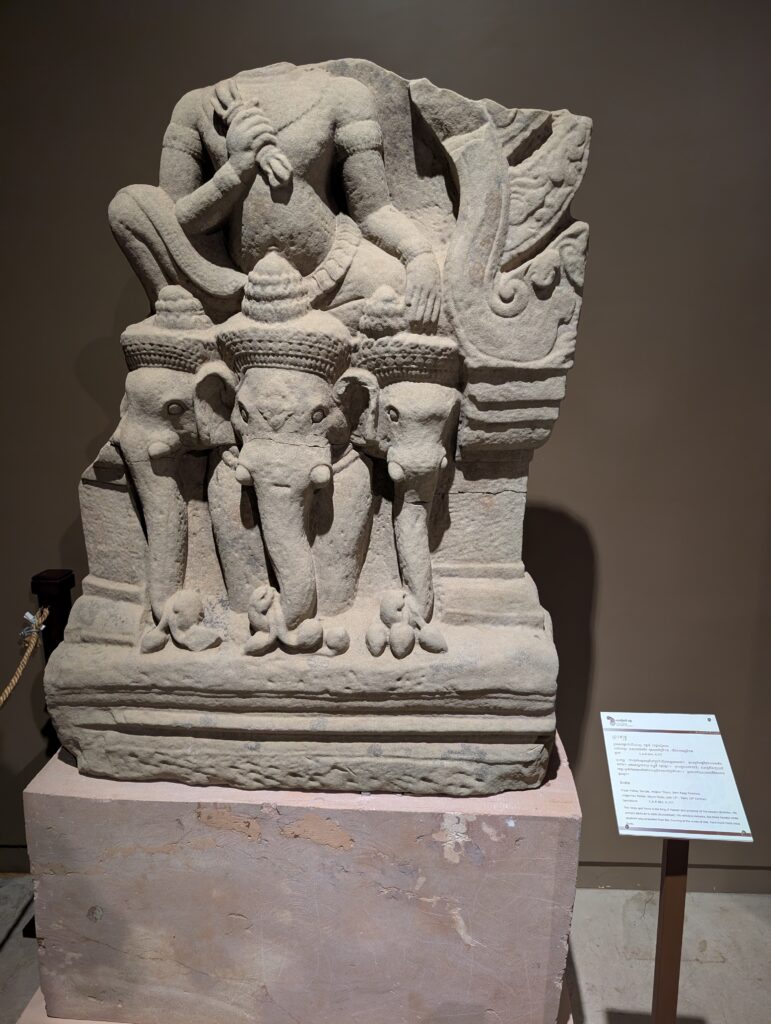
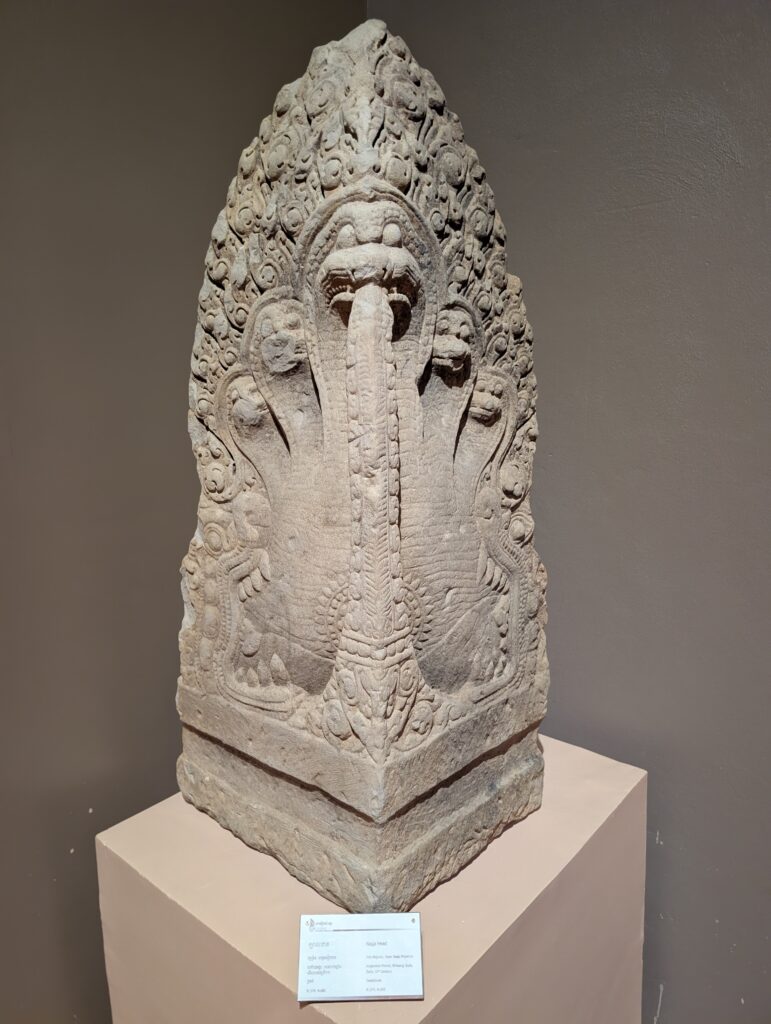
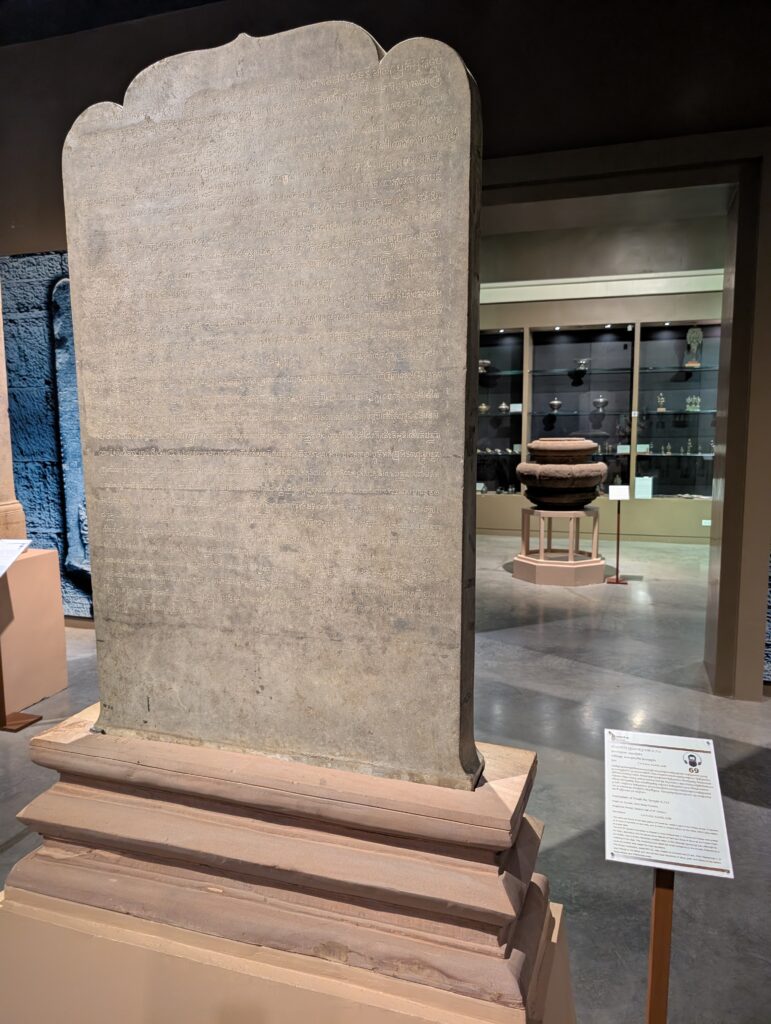
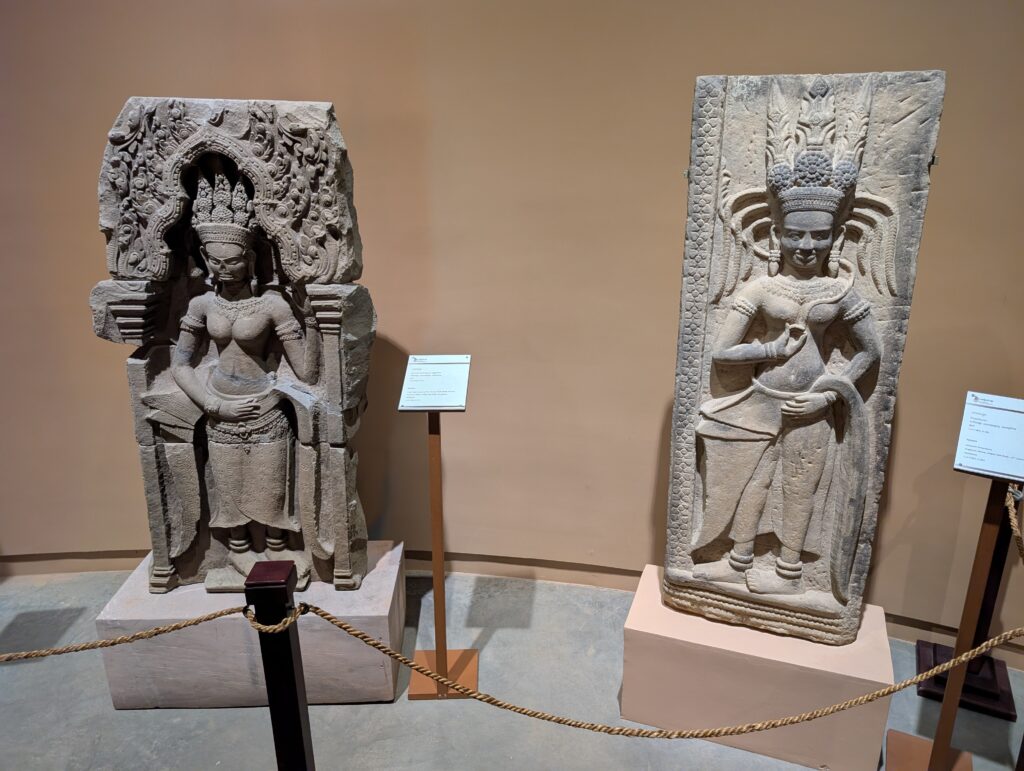
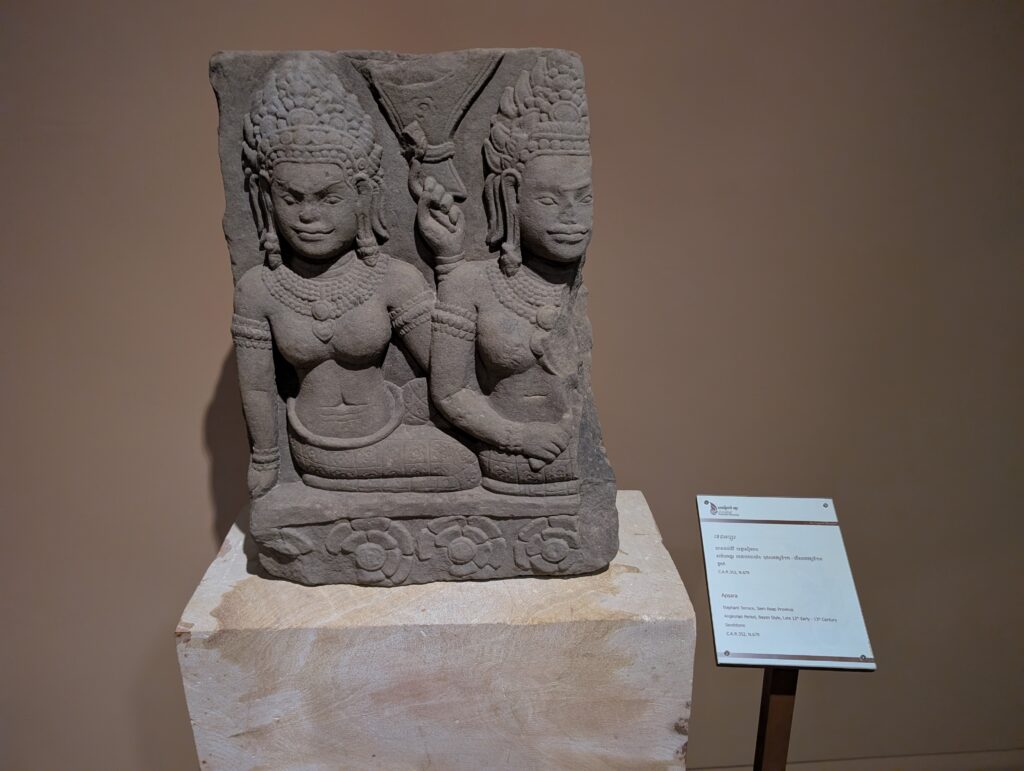
All in all, I spent $12 and three hours at the museum before checking into my room ($14/night). I quickly rinsed off, then grabbed some fish amok, a typical Khmer dish. I had not made a very good plan and was not well organized the next morning. I waffled a bit, even considering a two day guided tour. Ultimately, I opted to rent a bike and start picking my way around the small circuit. The central Angkor Wat area has a small circuit and a large circuit – paths the tour guides and tuk tuk drivers use to get people to many of the more popular temples in sequence.
On day one, I started out at the main temple. I didn’t get there until about 10 a.m., and then had to figure out how to purchase the ticket. There is no obvious entry point. Many people buy tickets online before arrival, and there are some kiosks here and there selling tickets, but you have to look for them. This is also an oddity in that you have to continue showing your ticket every time you stop at a new site or temple. More on this later. There are three options for ticket purchase. You can buy a one- three- or seven-day pass. The three day is $62, and the seven day $72. You have a week to use the three days of your pass, and a month if you buy the seven day pass. Upon your first stop each day, the ticket checker uses a hole punch to mark out a day on your pass.
Once in, I spent a solid couple of hours walking around Angkor Wat, taking pictures, observing the reliefs, and walking and climbing the indoor portion of the temple. I had heard mixed advice on what to wear to the temples. It is very hot in Cambodia, and it’s hot all the time. In the morning, it’s hot. In the afternoon it’s hot. At sunset it’s hot. Some people say to travel to Southeast Asia during the dry season, but I think it may be even hotter then. It certainly was hot in July. It seems intuitive then, to wear shorts if it’s possible. The official guidance says you should cover your shoulders and knees. Other say this is not strictly enforced. There are plenty of keyboard warriors out there who will scold people for even asking, implying that you are somehow insulting worshipers or an entire culture or religion if you wear knee length shorts.
Honestly, though, most of these temples haven’t been active places of worship for hundreds or thousands of years. The majority of the tourists visiting when I was there during the rainy season were Cambodians. Many of them had rented traditional clothing. All of women’s dress up outfits bore shoulders. The vast majority of people there were wearing shorts. There are signs at every temple saying your knees and shoulders should be covered, but at most of the sites, no one cares, and on the rare occasion when someone does, it is only for an egregious outfit. When I was about to climb up to the second level of the main temple, the security woman near the ladder, pointed in my direction and said, “No shorts!” I think this was most of her English ability. I turned around, and right behind me was a Spanish woman in a pair of shorts that barely covered her crotch. Once it was clear the security guard was speaking to her, I quietly asked if my attire was OK. She said mine were fine, because they were about to my knees. This jived with what I had seen throughout the day. Many people with shorter shorts than me had no problem. I wanted to clear it with the guard. I had a three day pass, after all. If I was turned away, I could come back another day.
(Continued)
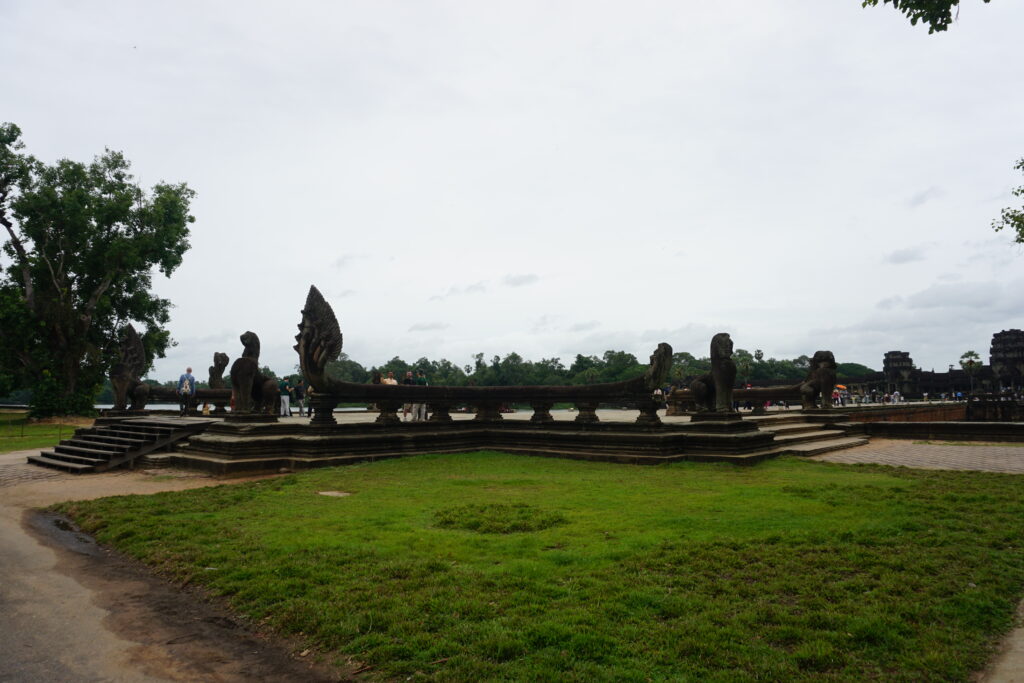
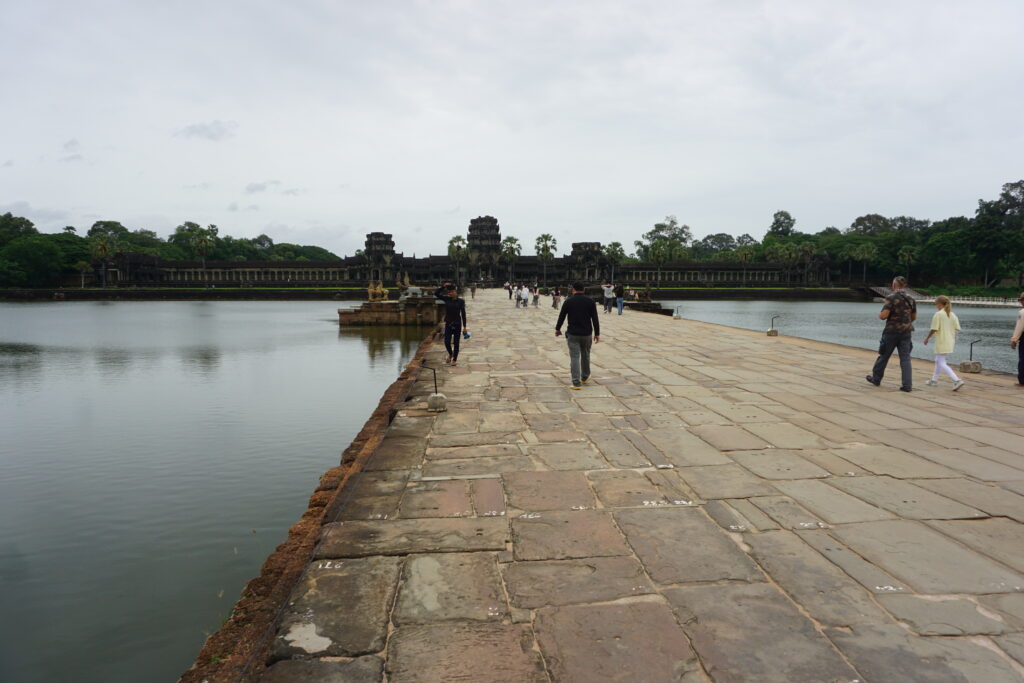
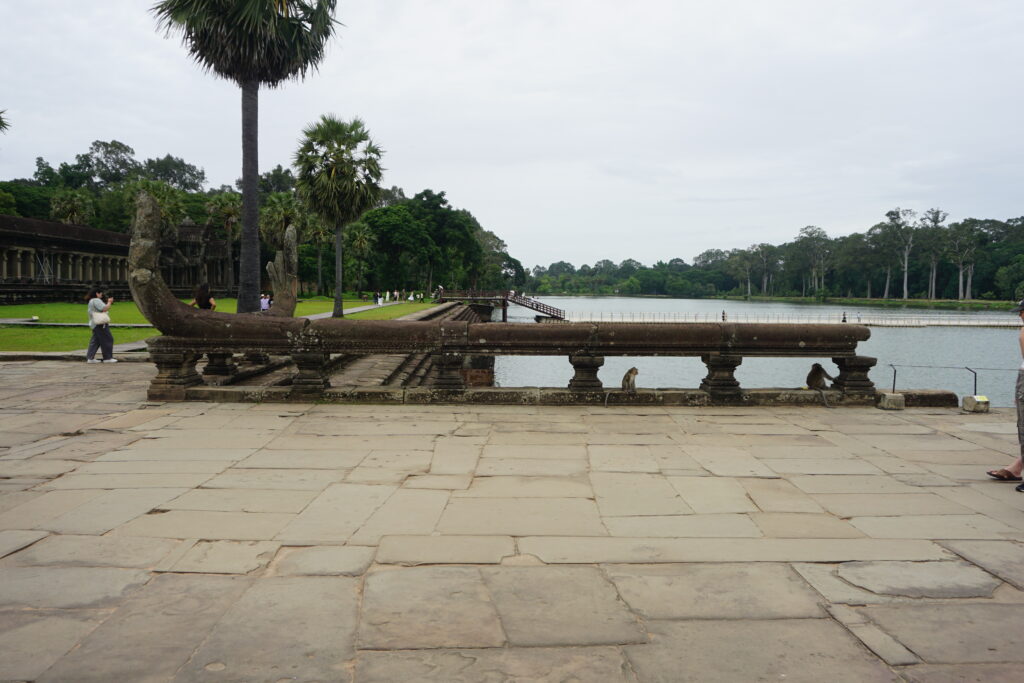
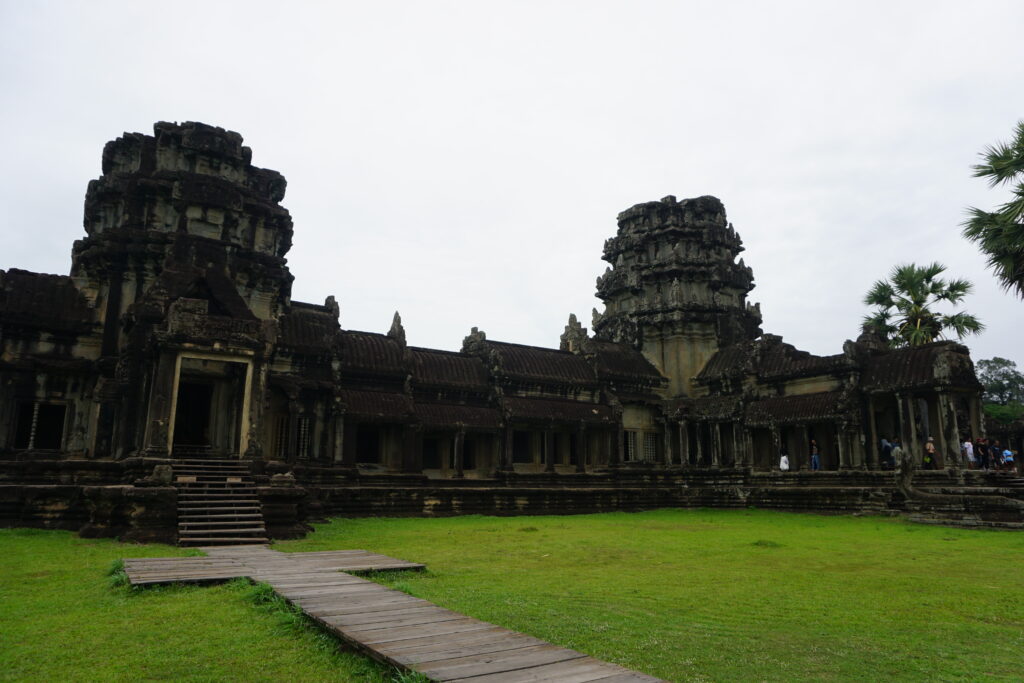
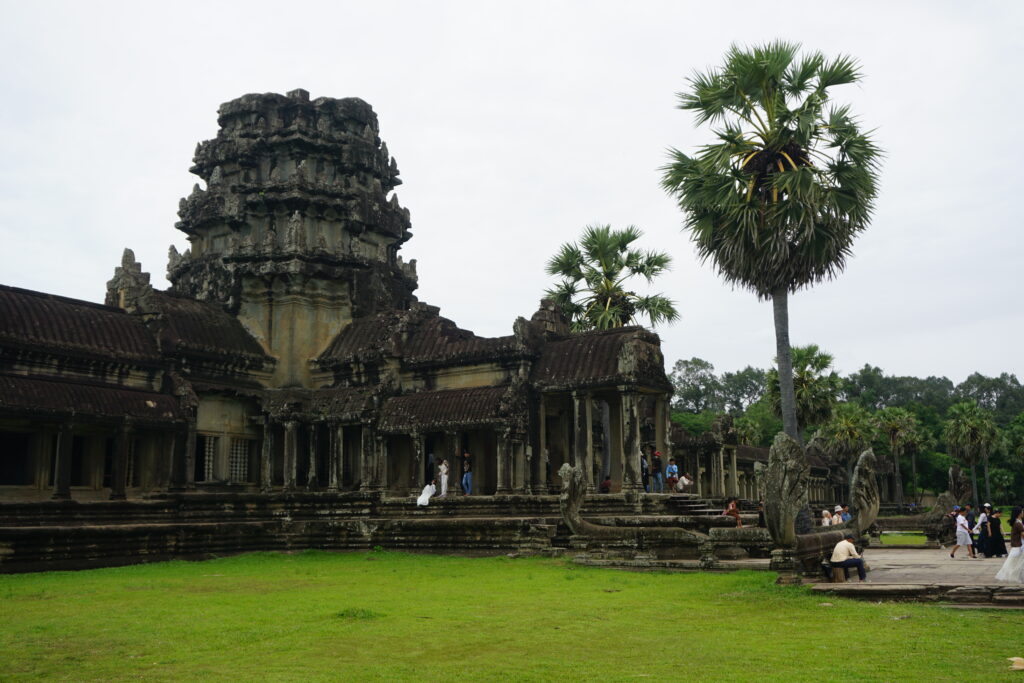
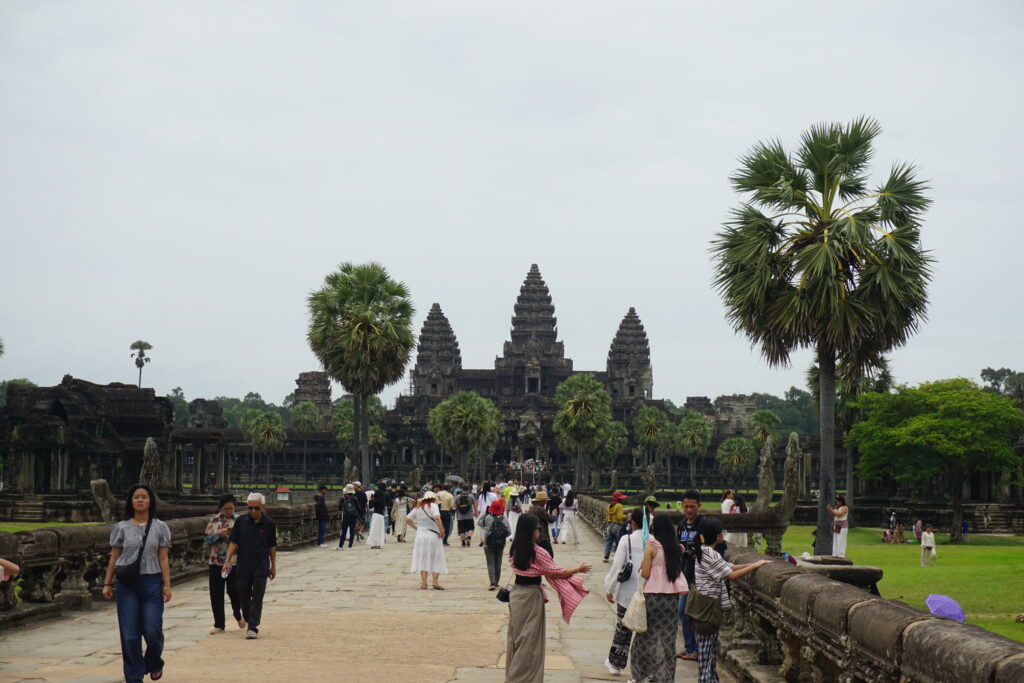
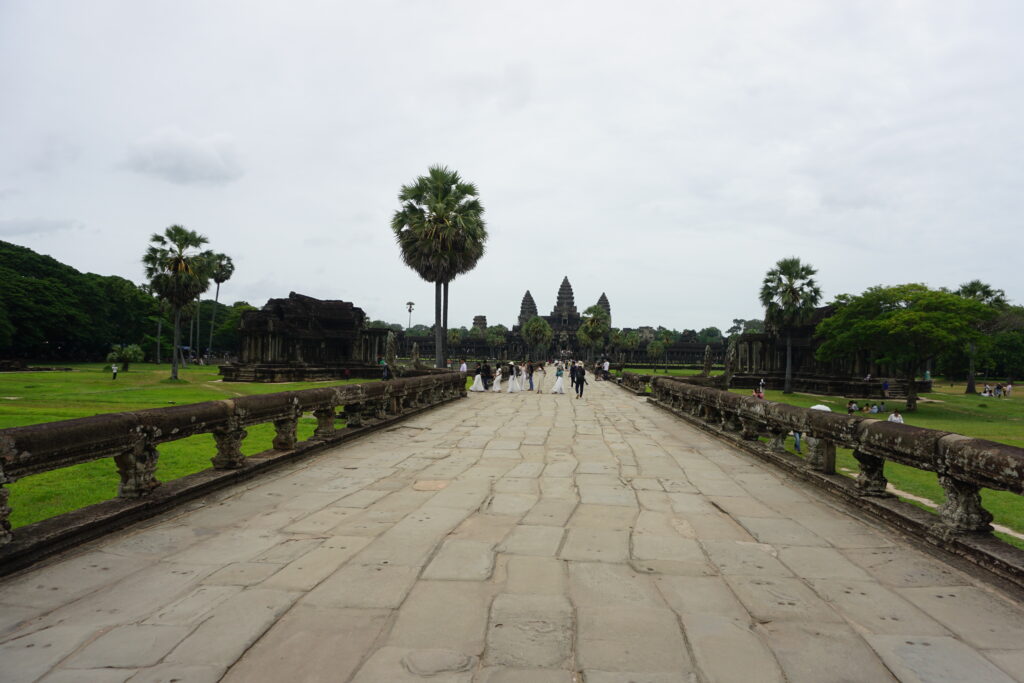
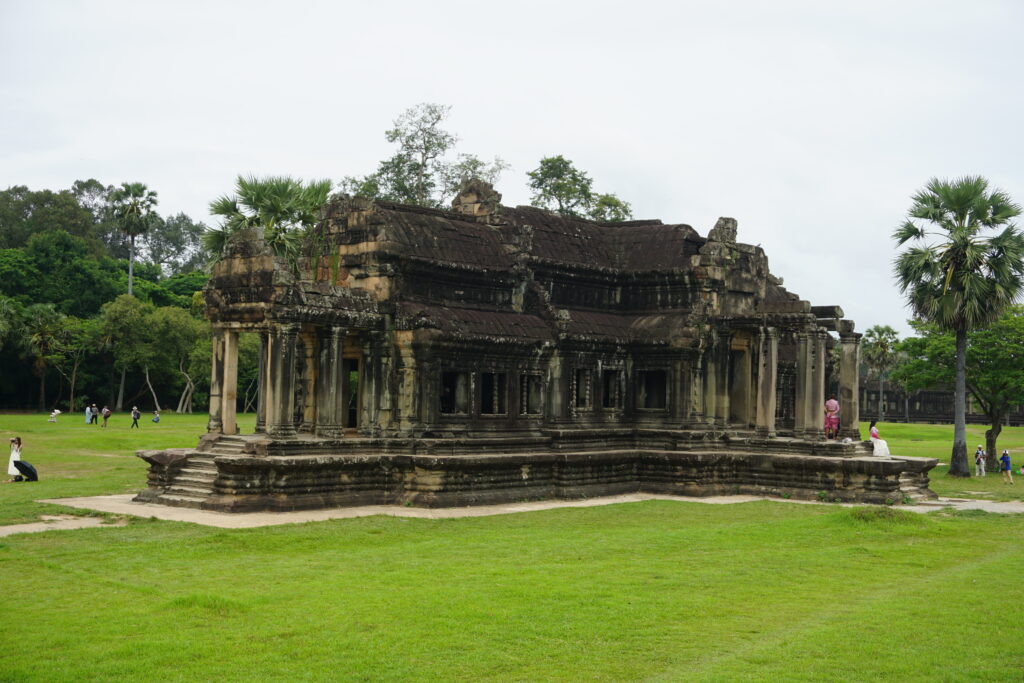
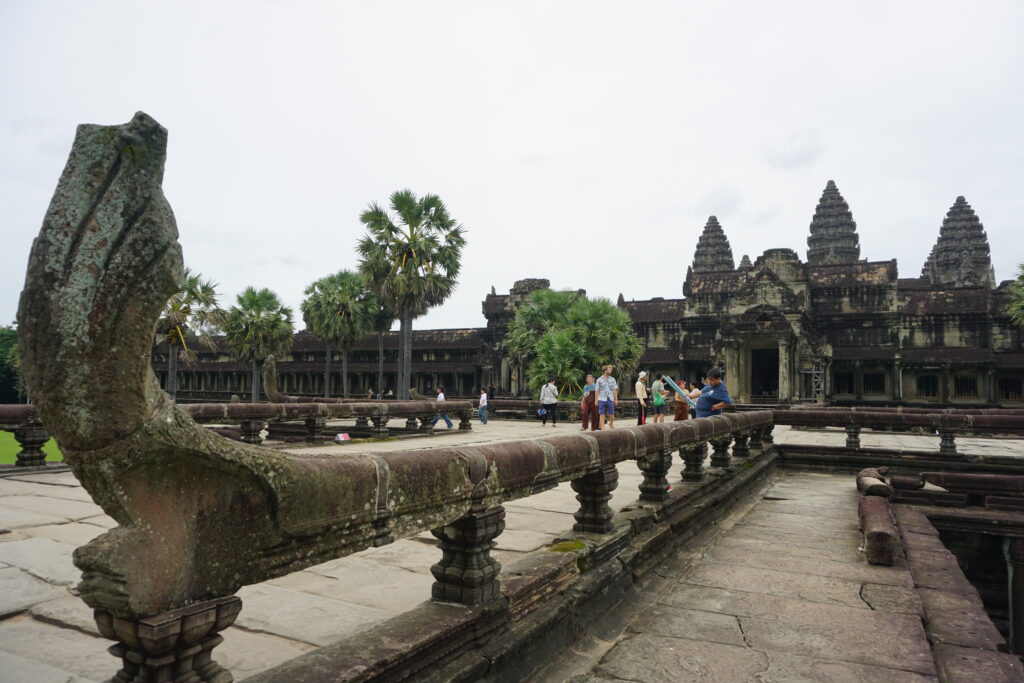
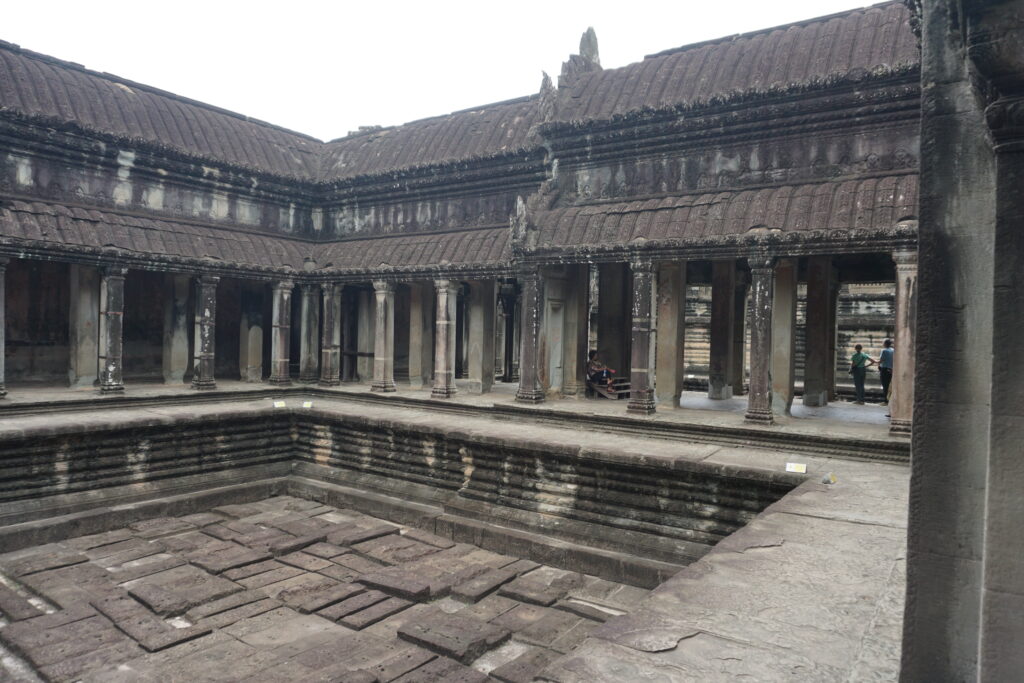
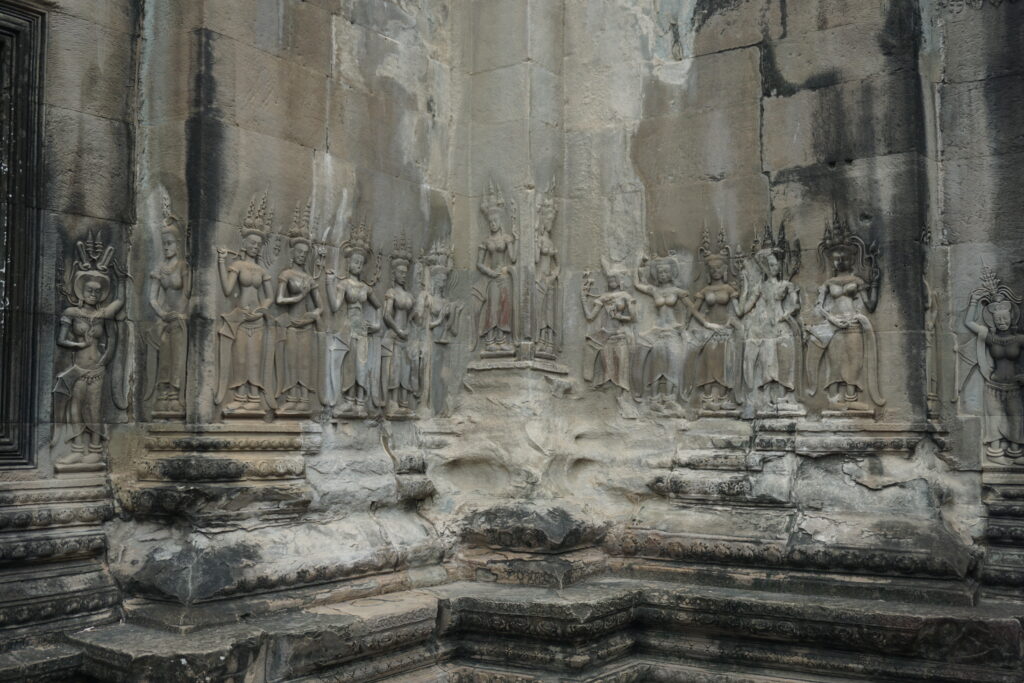
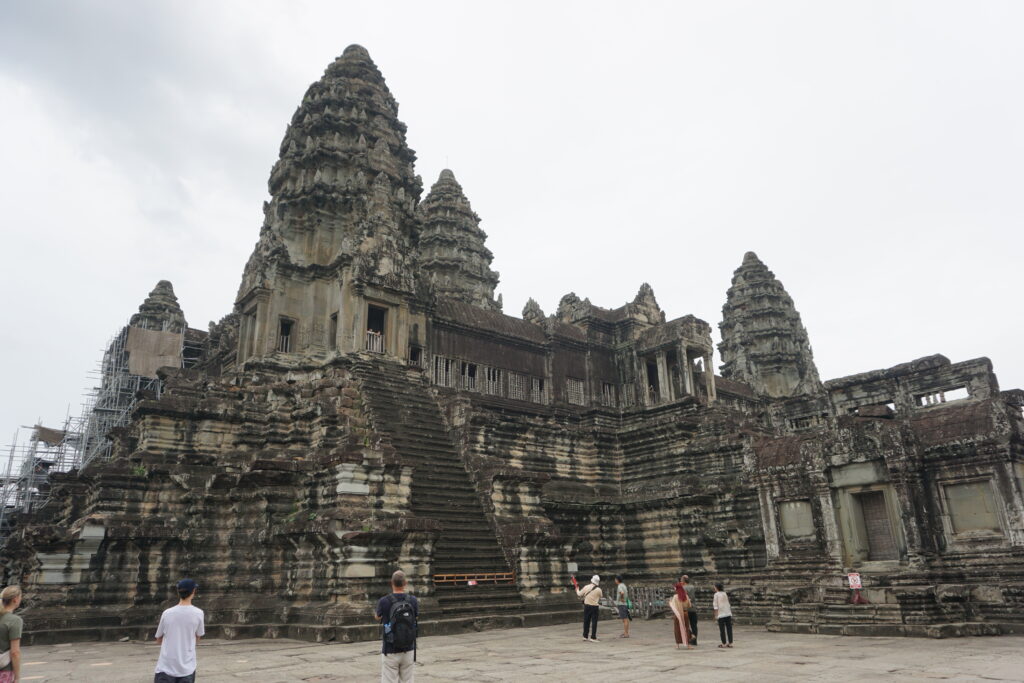
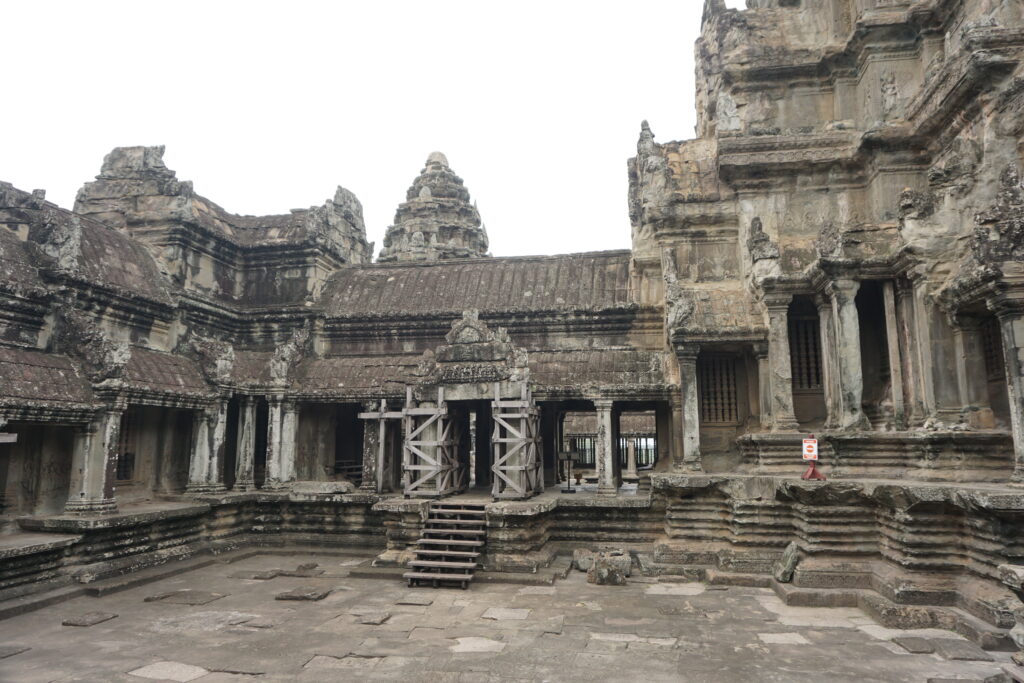
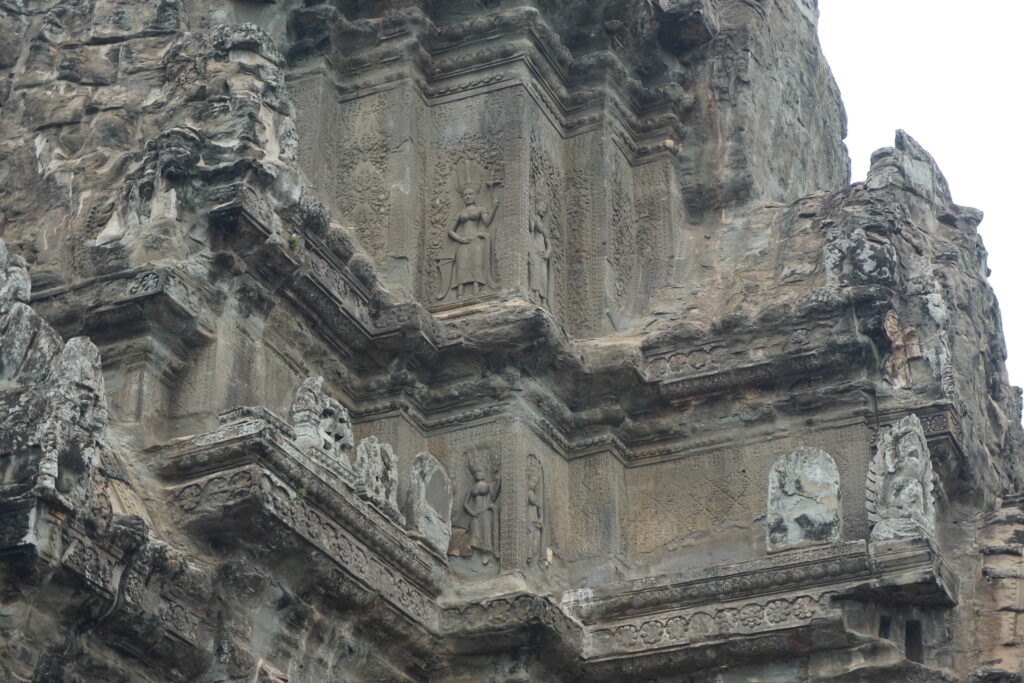
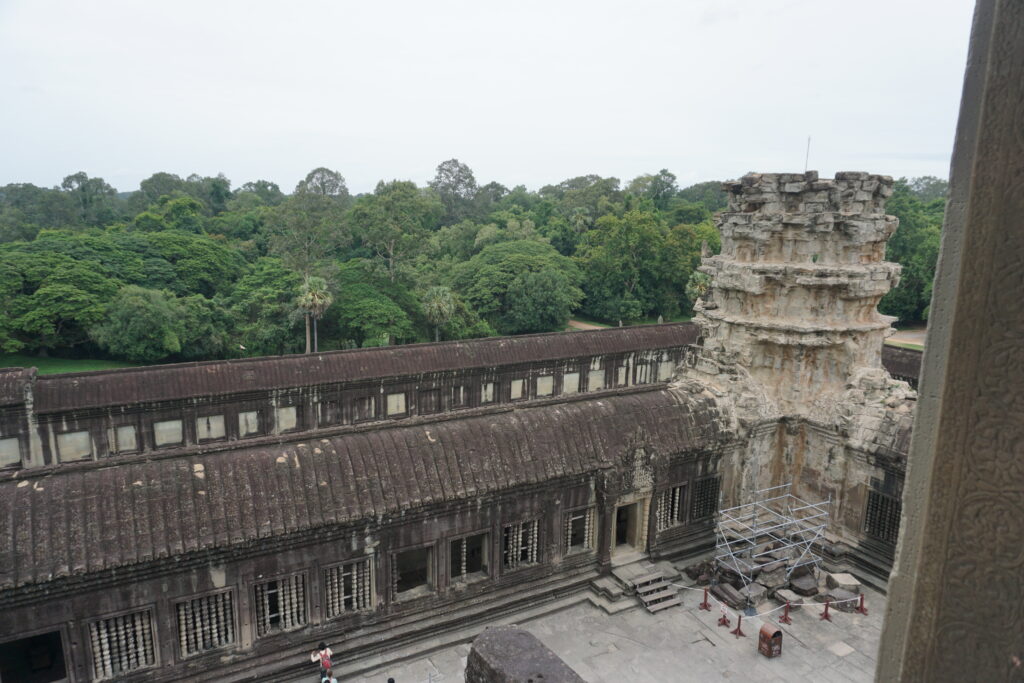
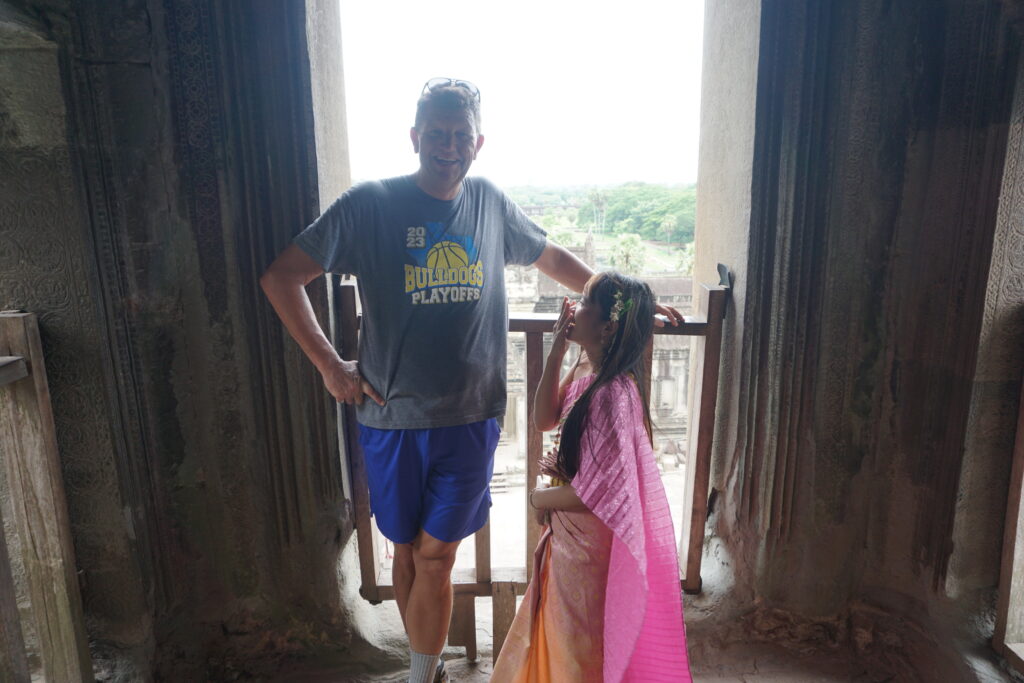
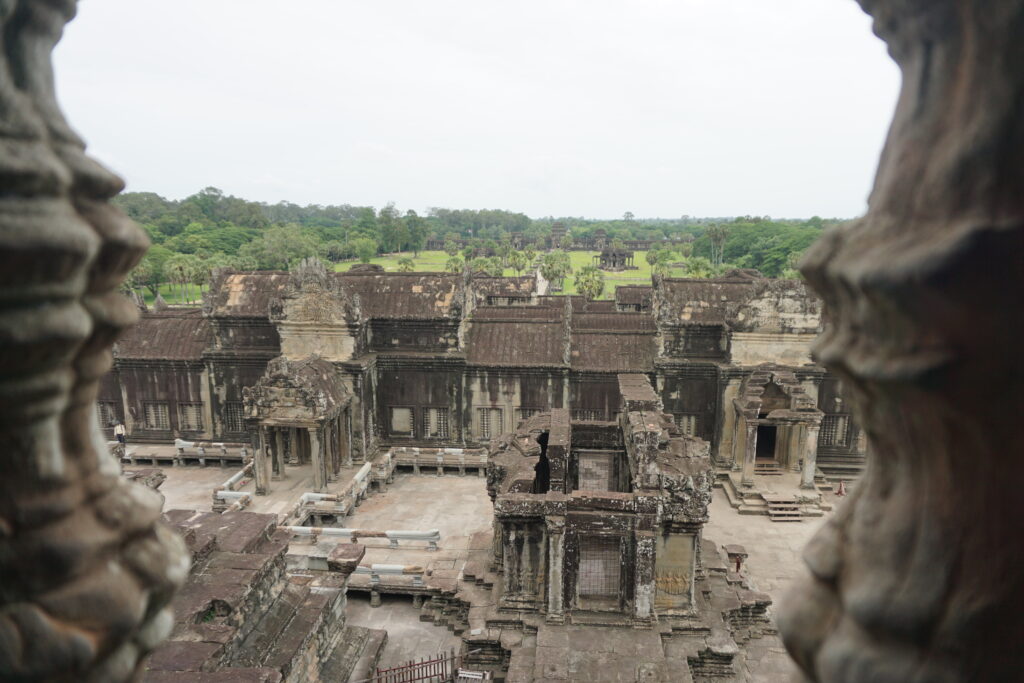
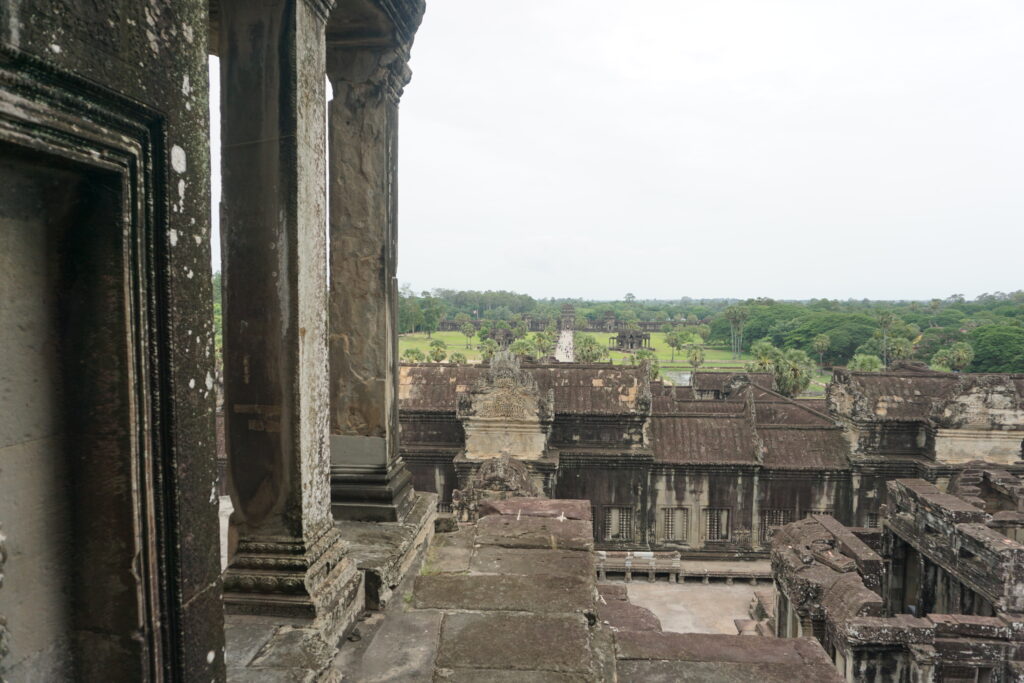
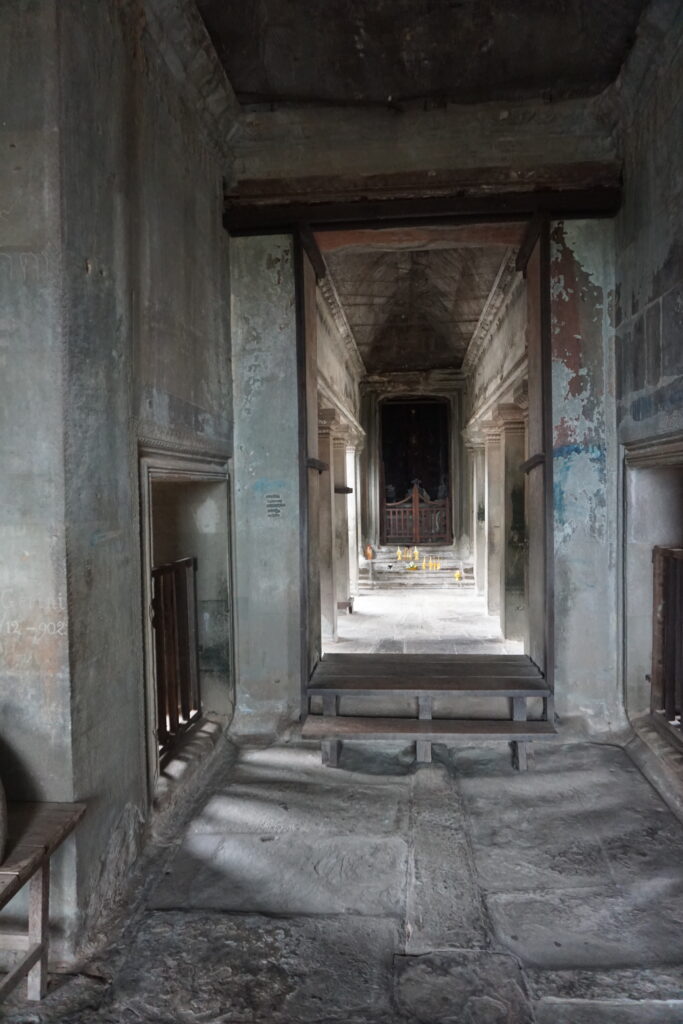
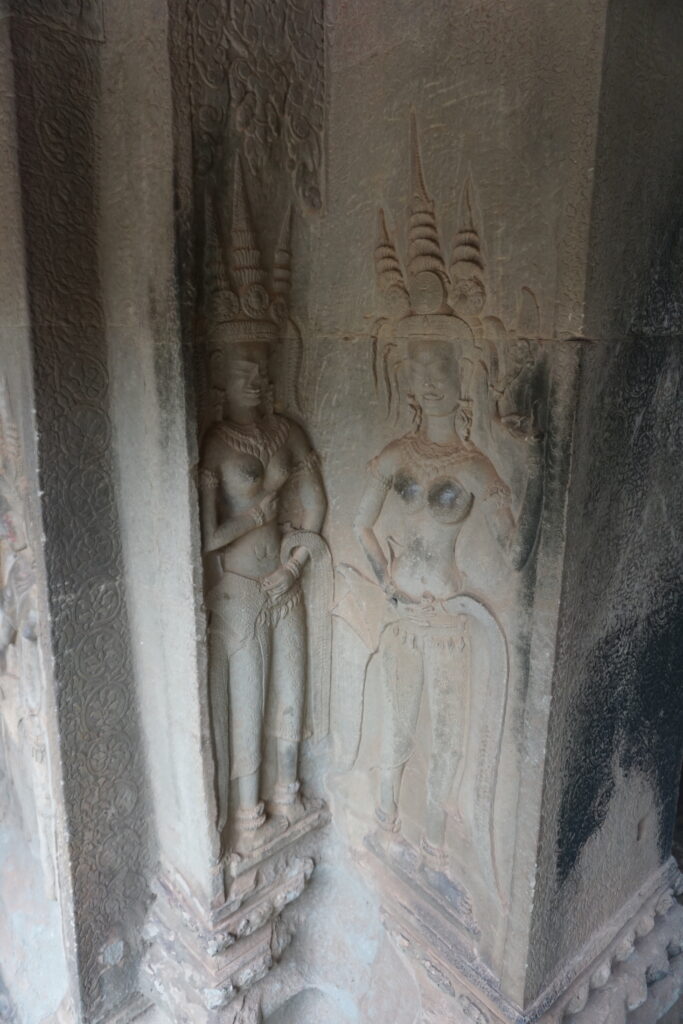
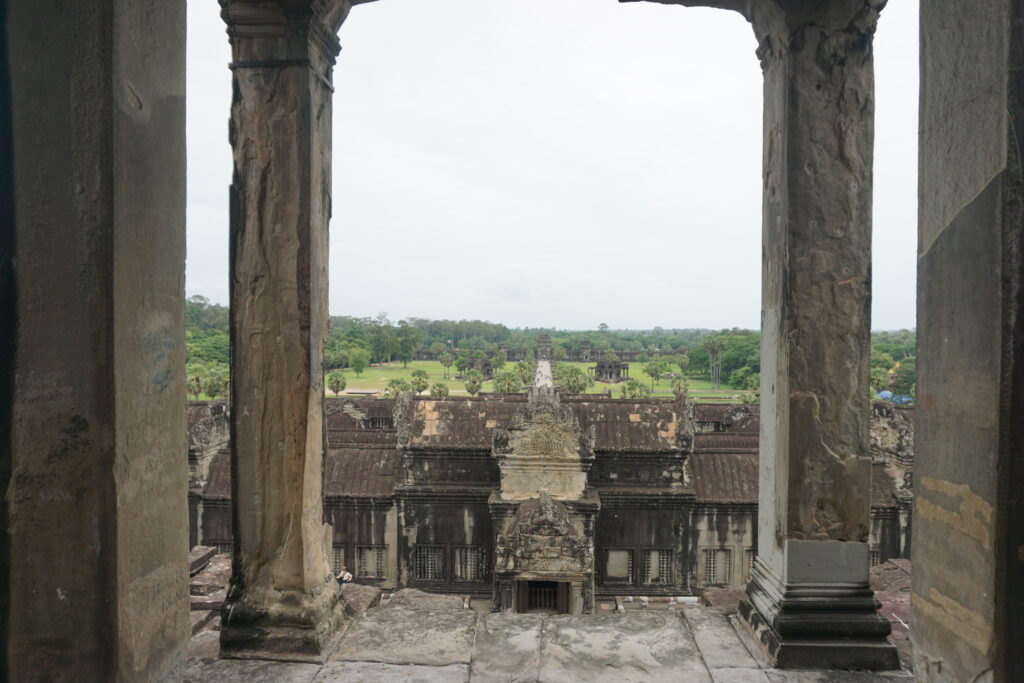
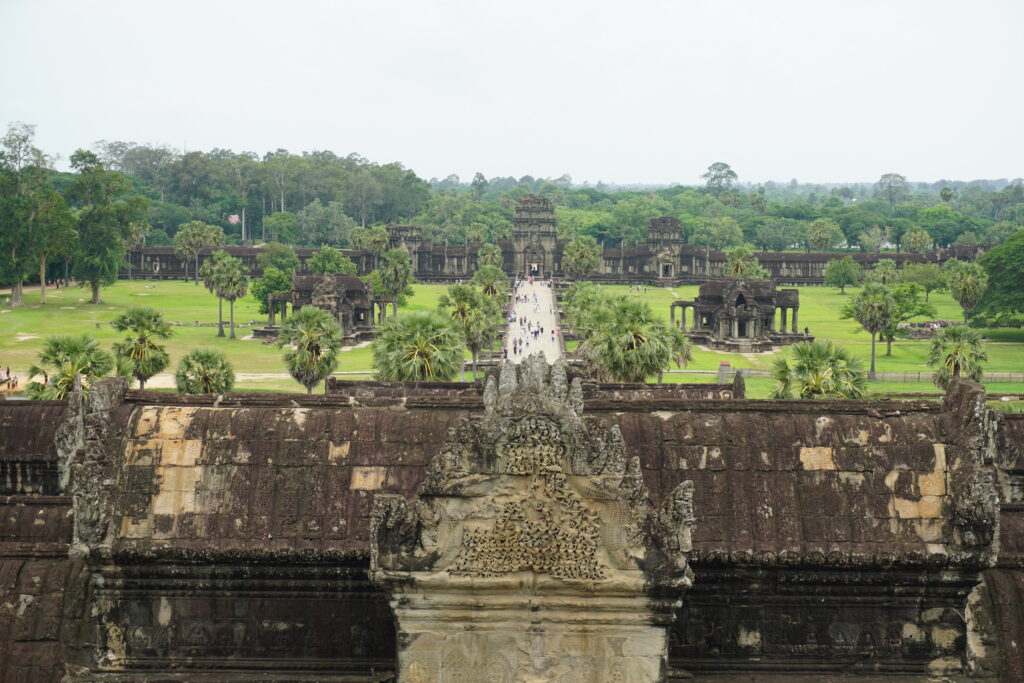
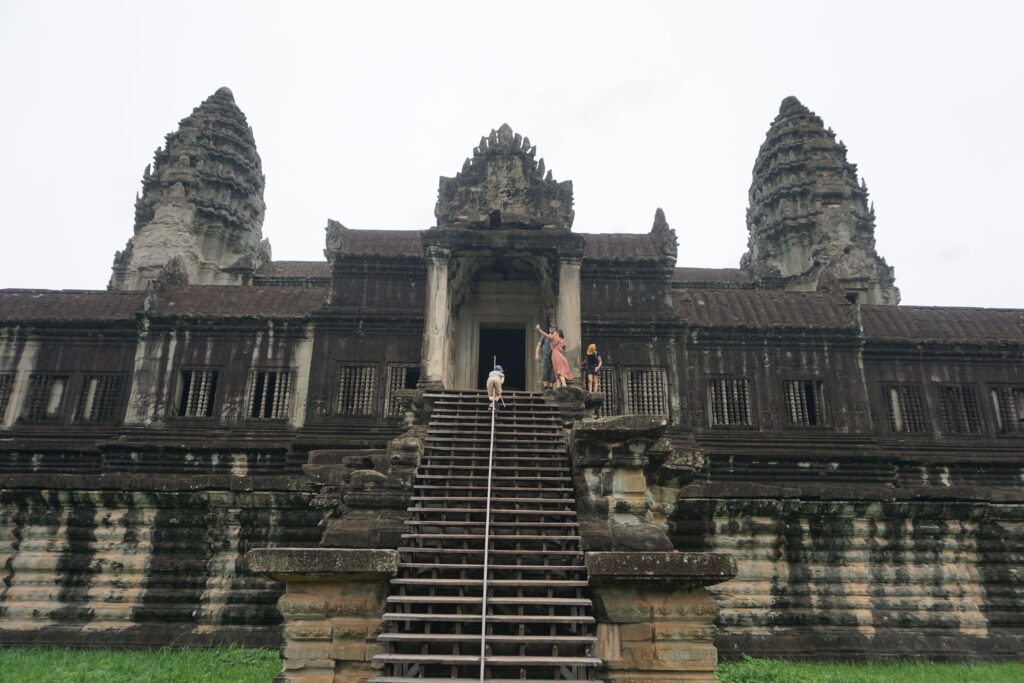
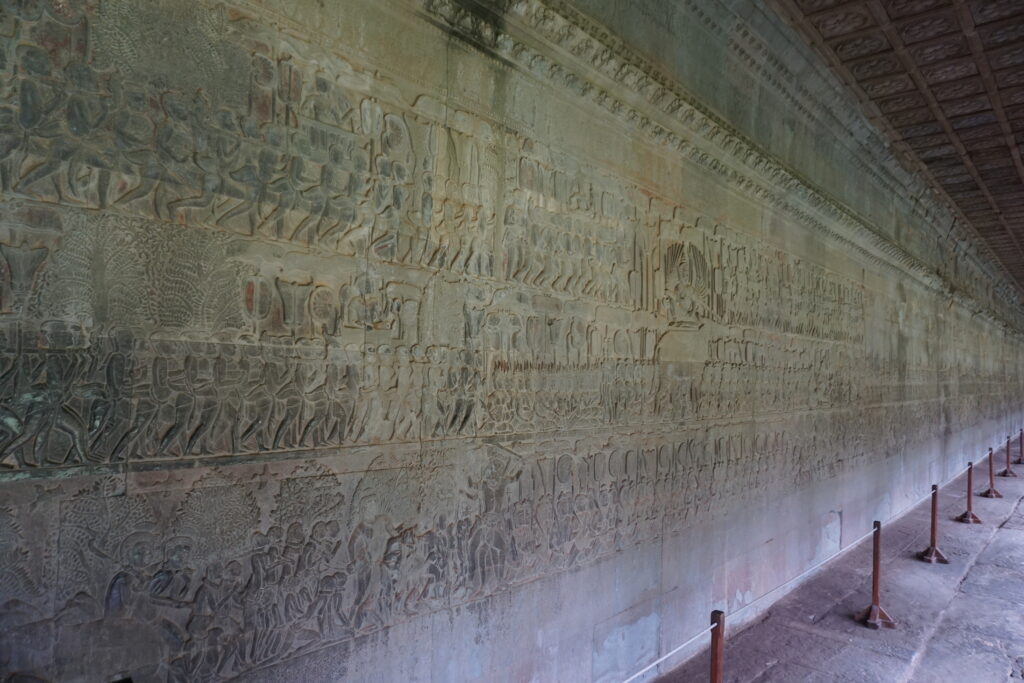
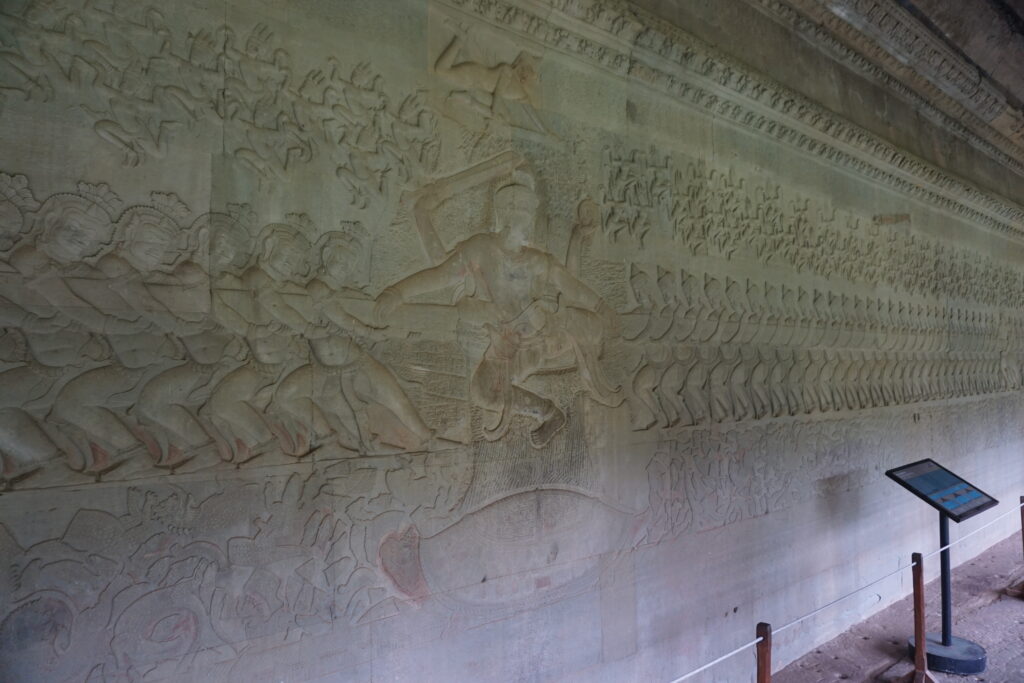
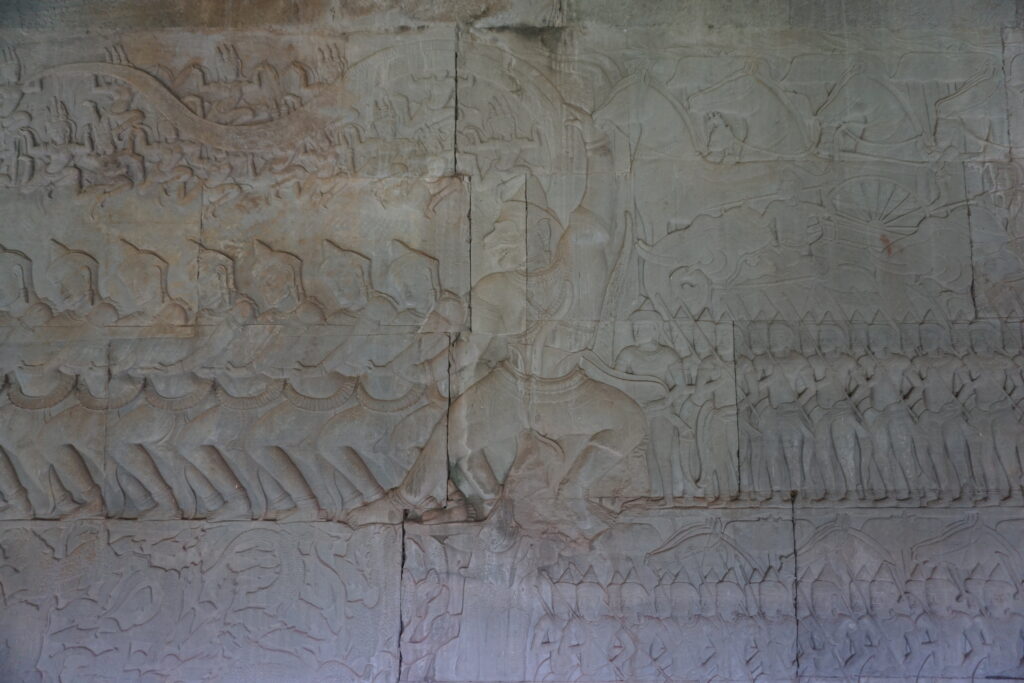
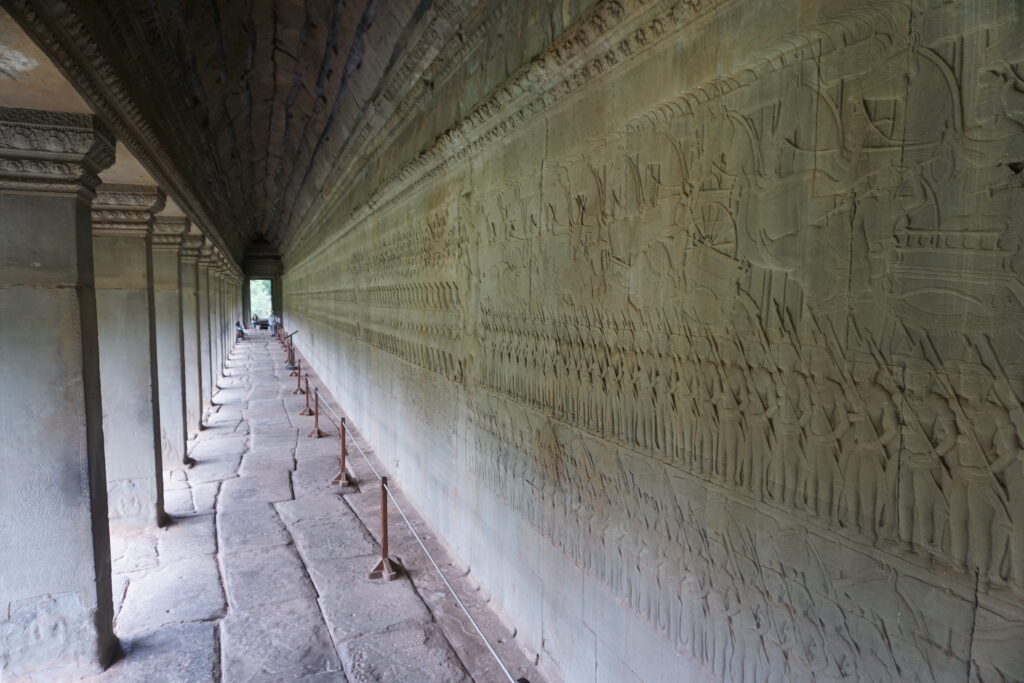
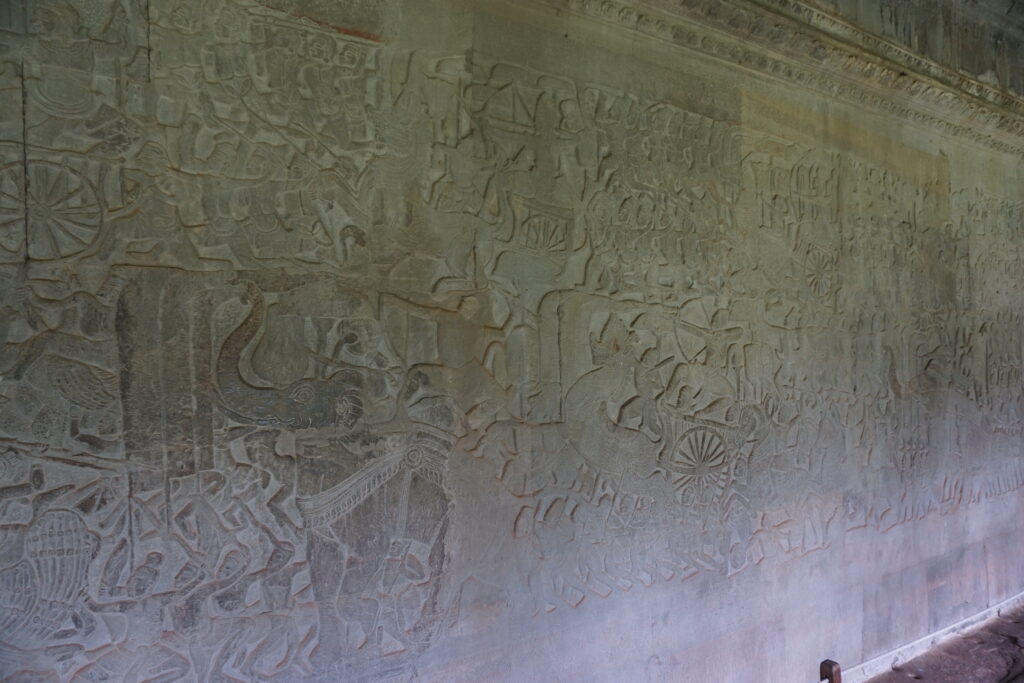
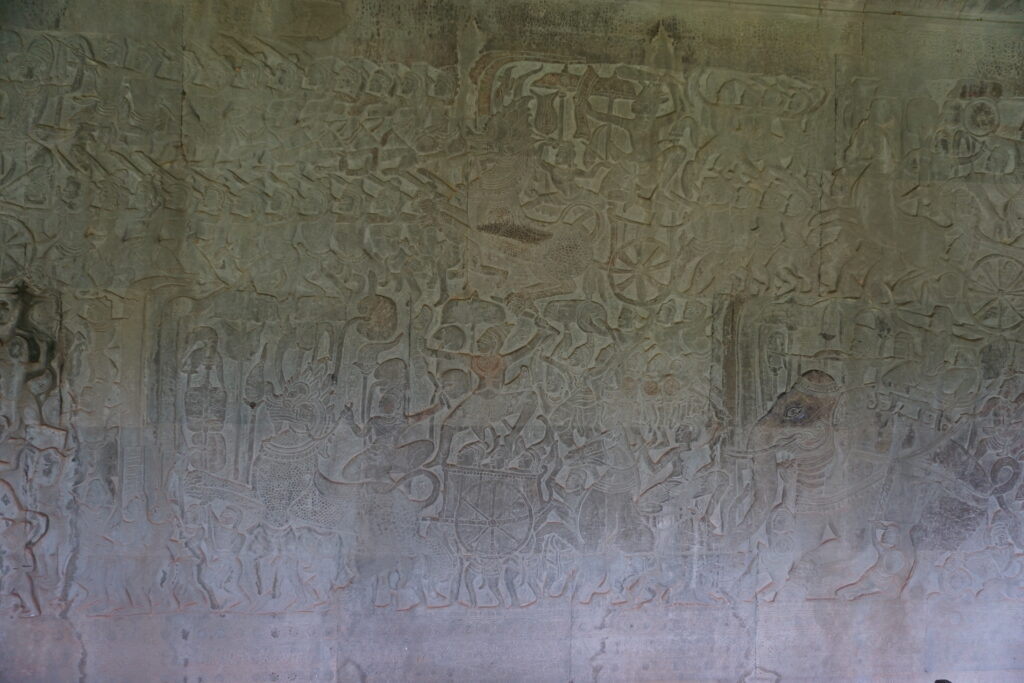
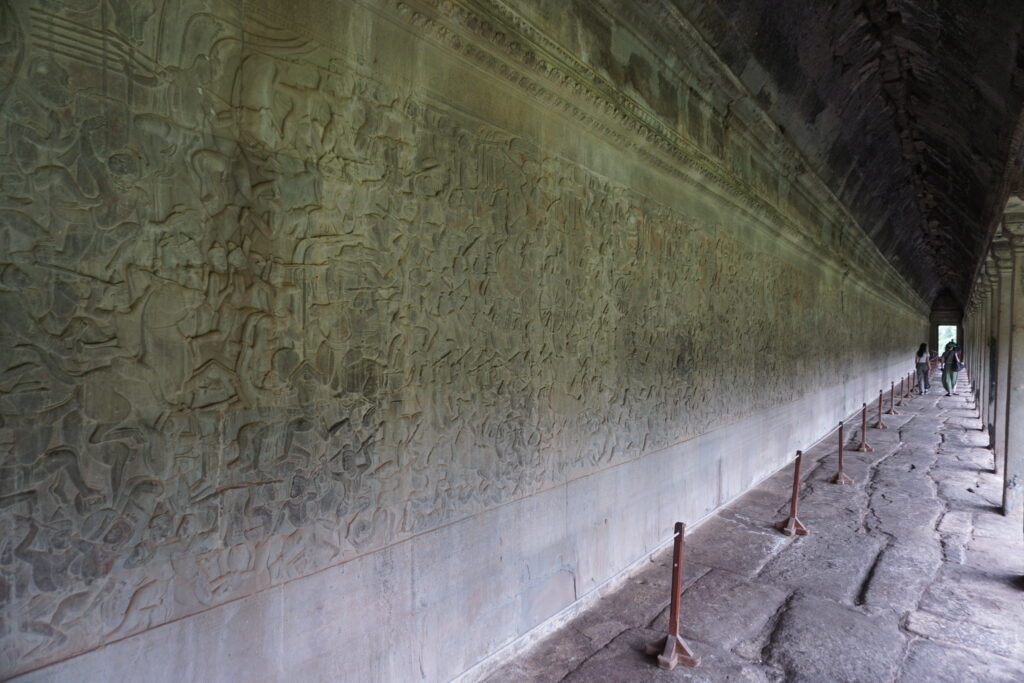
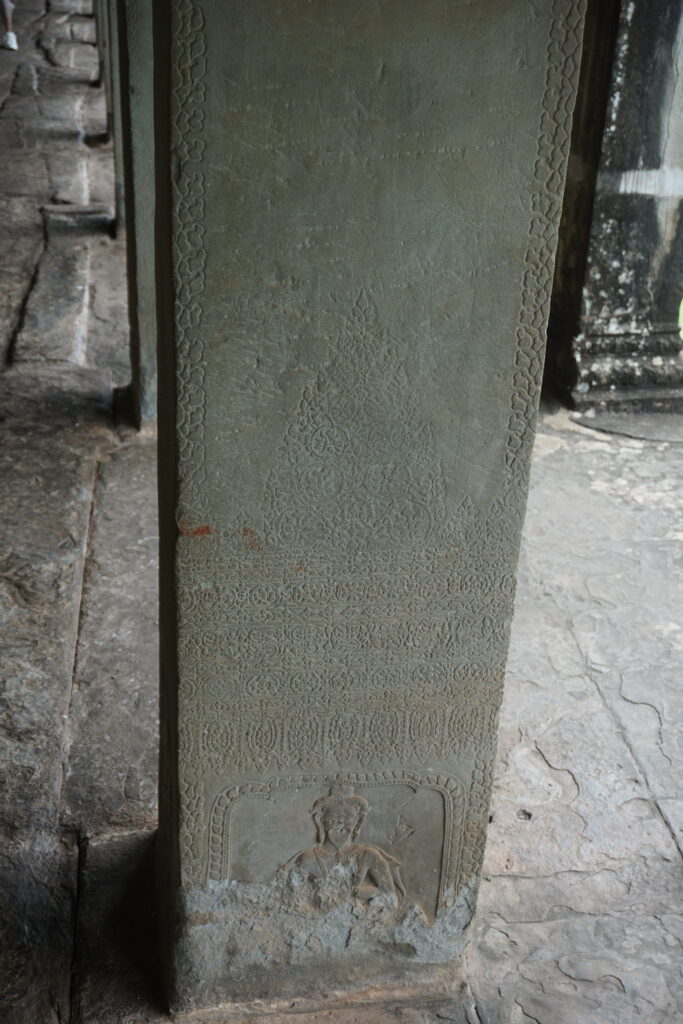
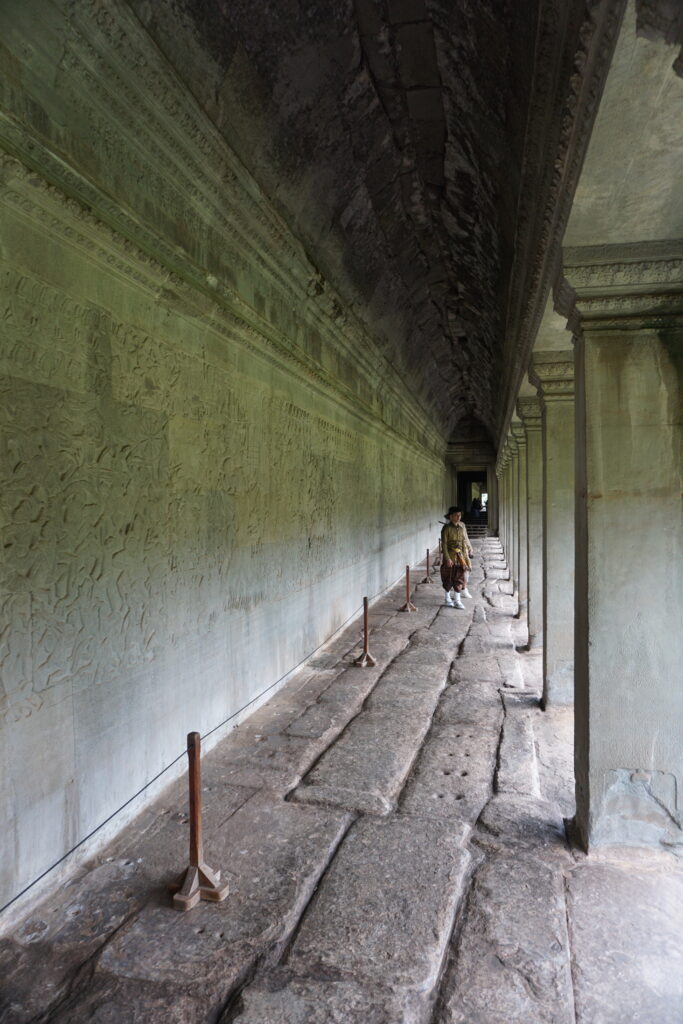
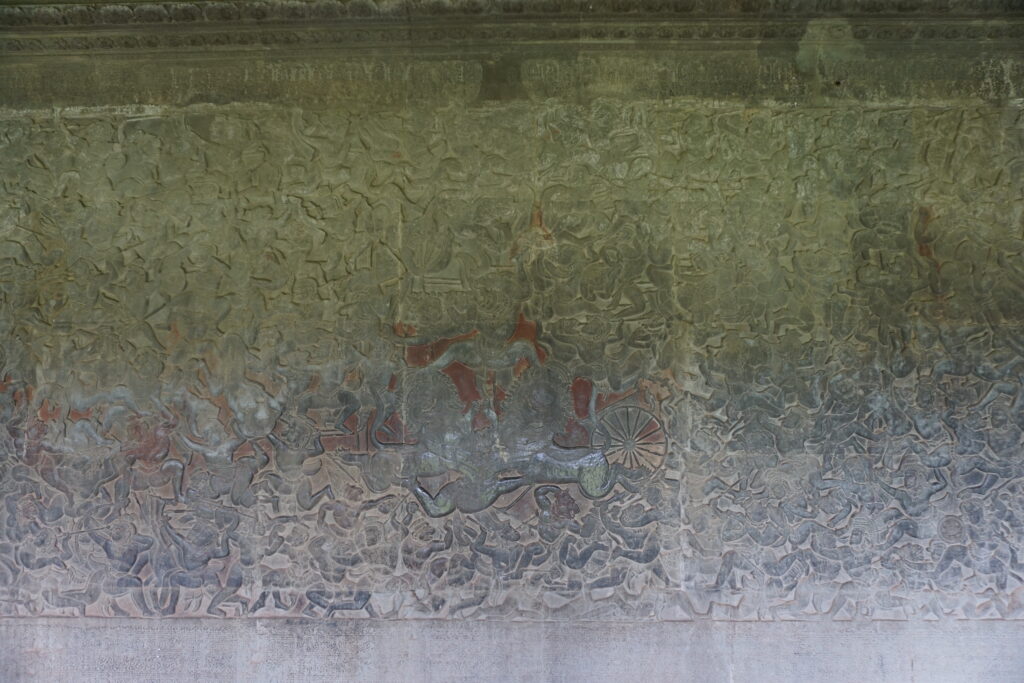
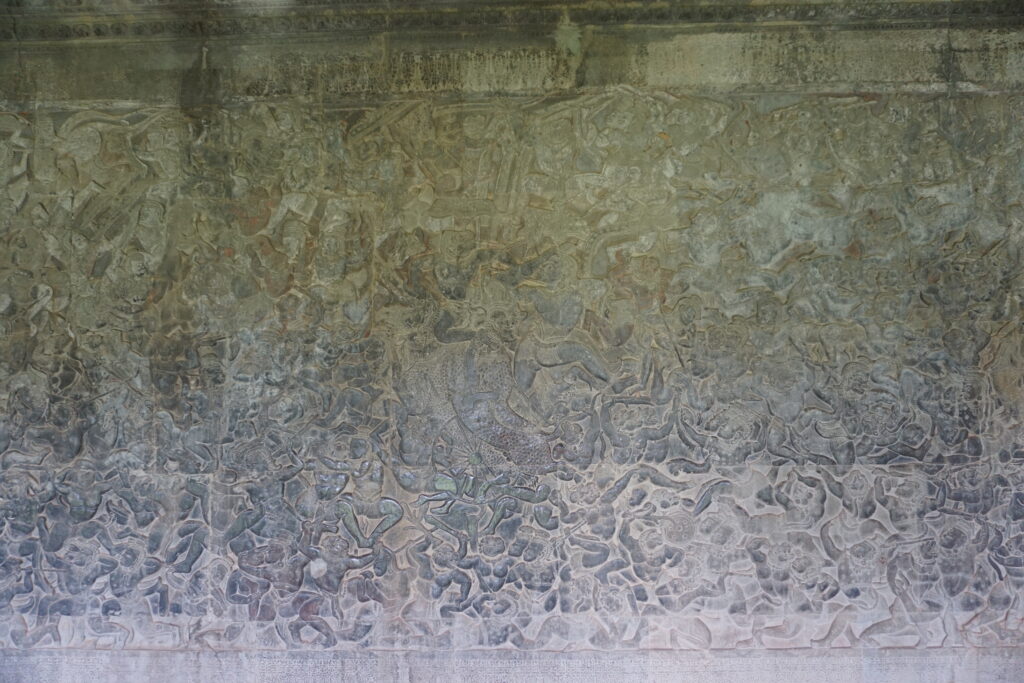
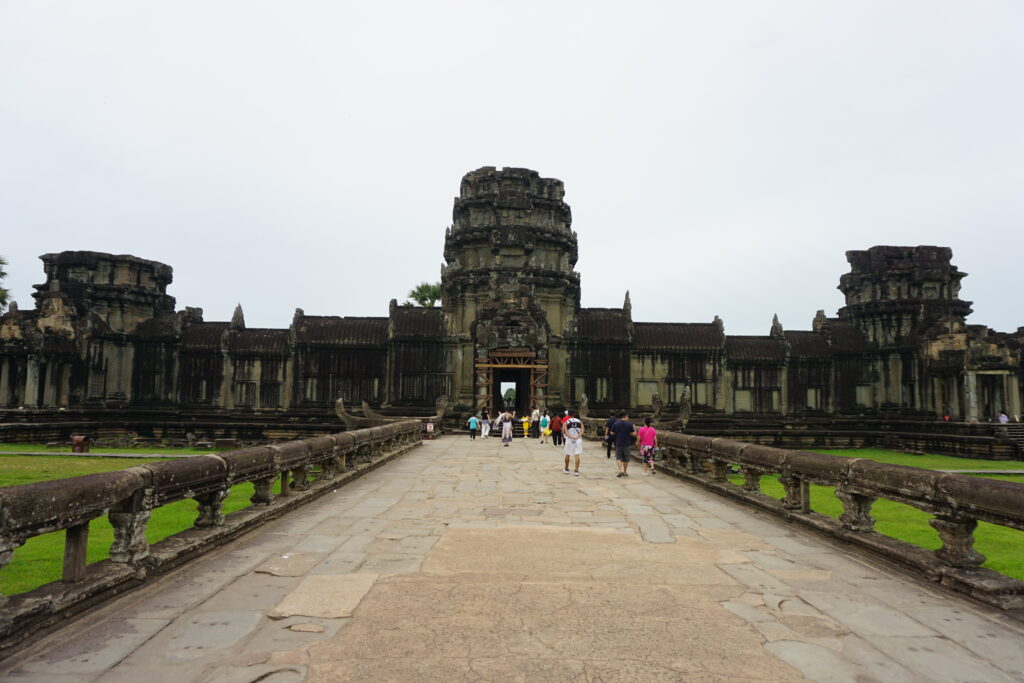
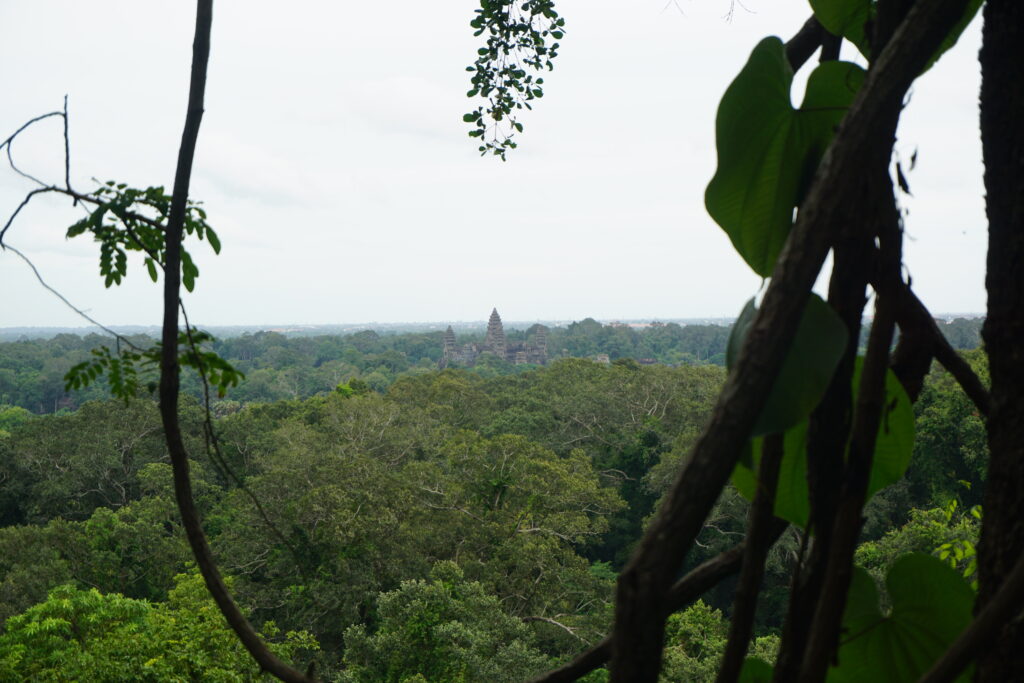
As it was, I walked everywhere I needed to walk in the main temple. Afterward, I visited Bakheng. I had to walk a lengthy trail around the side of a hill to reach this one. Bakheng was undergoing a lot of restoration work. Many people climb this hill to watch the sunset. I never even attempted to see a sunrise or sunset at the temples, because the forecast was for overcast every day. Everyone else who tried was disappointed. Nevertheless, Bakheng has an amazing viewpoint overlooking the main Angkor Wat temple from the top of the hill. No one else who climbed it when I did seemed to even find the overlook. It was around the corner where it looked like there was only construction. I got some very great photos from there.
I next went through one of the main Angkor Tom gates toward Bayon. Bayon itself is a huge temple, and the Angkor Tom complex as a whole is larger than Angkor Wat. There are some nice, tall structures at Bayon, and you can tell it was an impressive temple. But it is a lot more open above and in a far less well preserved state. The most notable features of Bayon are the giant faces carved into the towers of the temple.
Since I got such a late start on Tuesday, I didn’t even make it all the way around the small circuit before the sun began to go down, forcing me to ride quickly back to the room so as not to navigate the several kilometers of chaotic road in the dark, with no lights or reflectors on my mountain bike. If you know me well, you know I am a chat-aholic. I got hung up talking to a friendly Cambodian vendor family at what turned out to be my last stop. I badly needed some water, but apparently I needed the conversation even more. I met Srey Yon, her husband, and their baby daughter. Srey Yon was the only one who spoke English, so most of the conversation was with her. She is self taught. She explained to me quite a bit about how the vendor process works inside the park. She would have really liked to sell me some of her husband’s paintings as well, but I had no place to put them. I decided if I was back in the area the next day, I would at least try to buy more refreshments from them.
I had eaten all of my snacks and exhausted my water by the time I got to the two small temples at Thommanon and Chau Say Tavoda. That’s where I met Srey Yon’s family. I bought a giant water and a soda before exploring the two small temples there. On the way out, I visited with them for close to an hour between stops from tuk tuk drivers and their other customers. That ate up the rest of the daylight. I felt pretty well spent by then anyway. I hopped on the bike and made quick time back to the room in the fading light of the evening. I navigated the chaos of vehicles going every which way and made it safely back to the room. I cooled off in the pool before walking down to a corner restaurant for supper. I had lok lak and some fried rice, which I greatly enjoyed. I wasted an hour wandering around to three different grocery stores in search of some oatmeal. Finally, I found something I thought might be similar. Sadly, it turned out to be more like oat milk. It did make an edible paste. It wasn’t very good, but I hate to let food go to waste, so I suffered through it for two breakfasts.
(Continued)
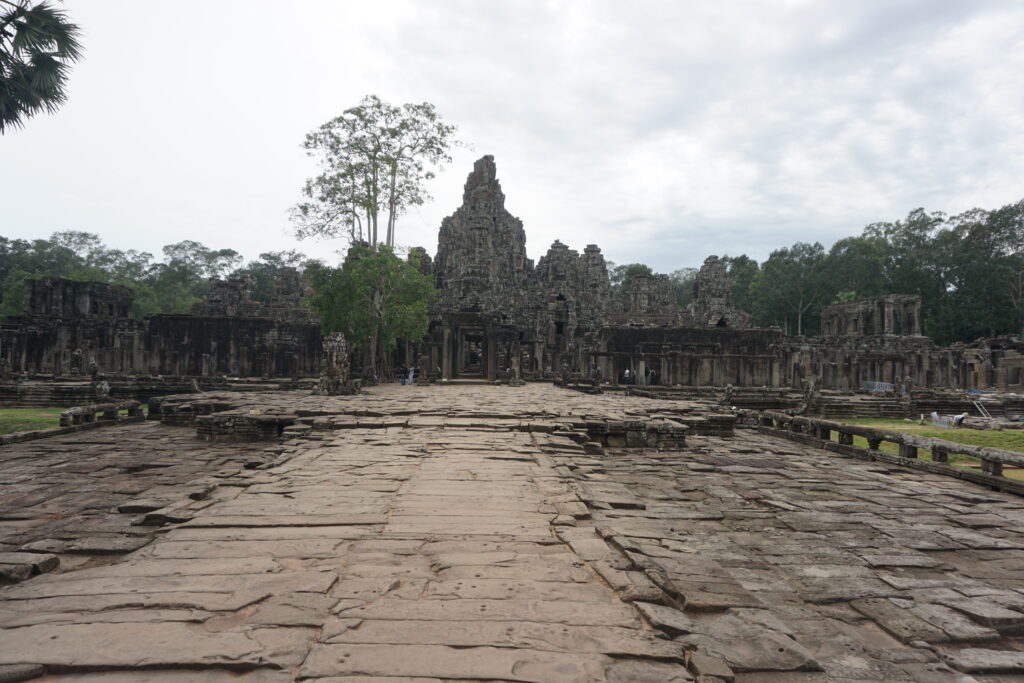
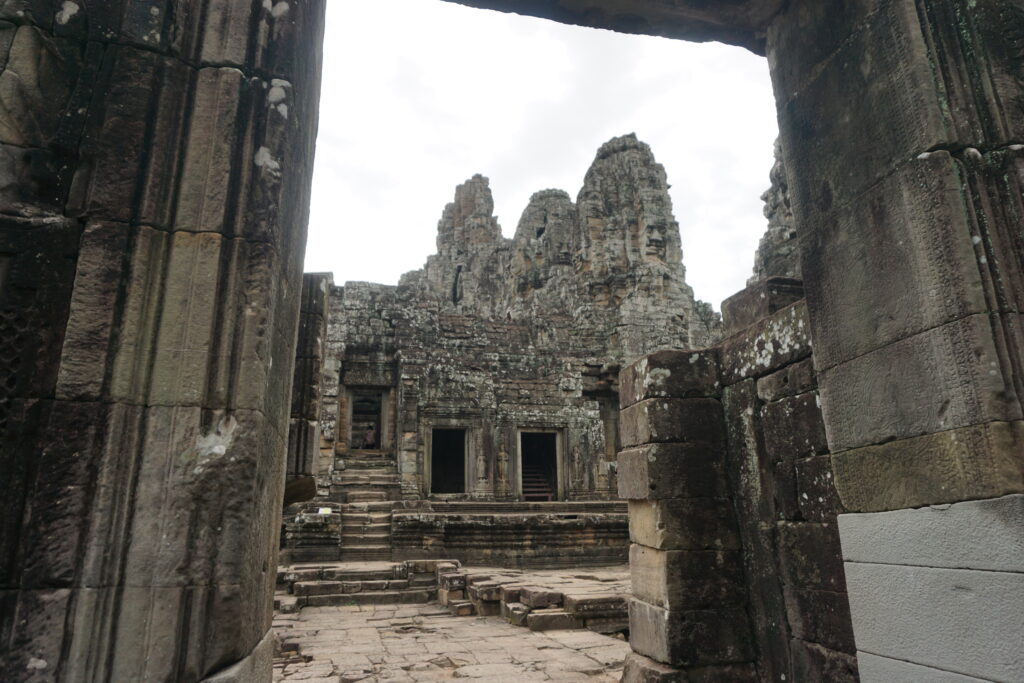
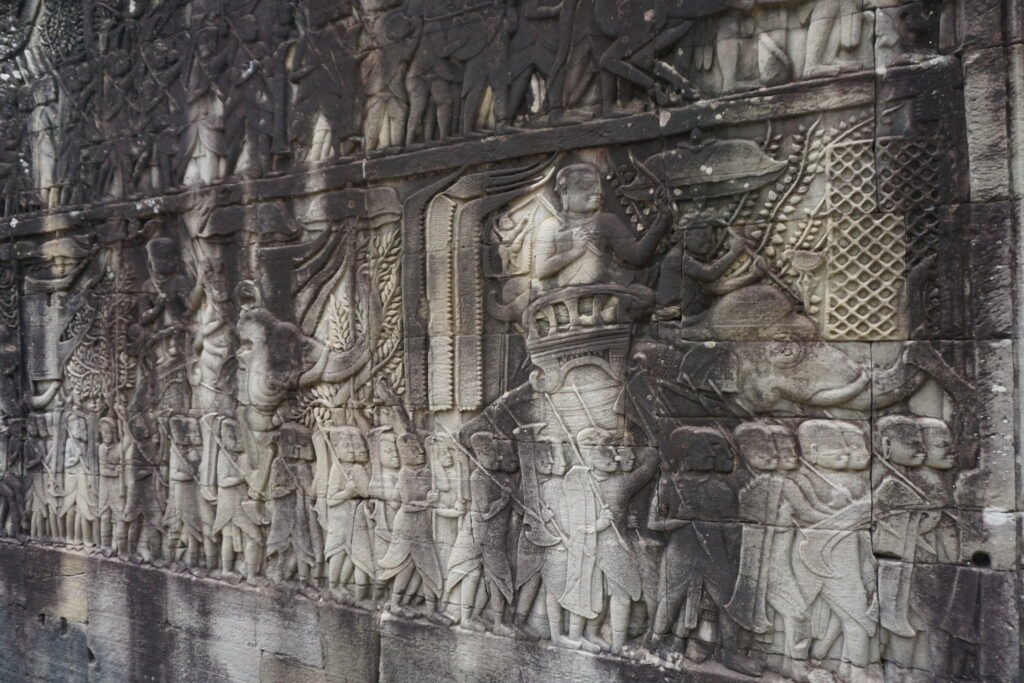
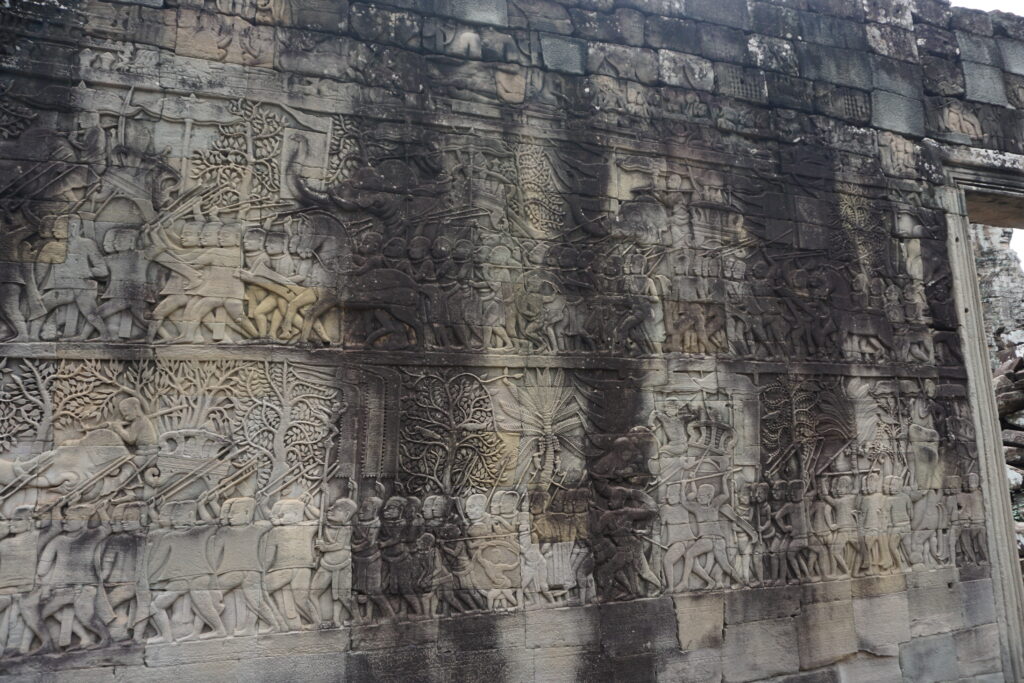
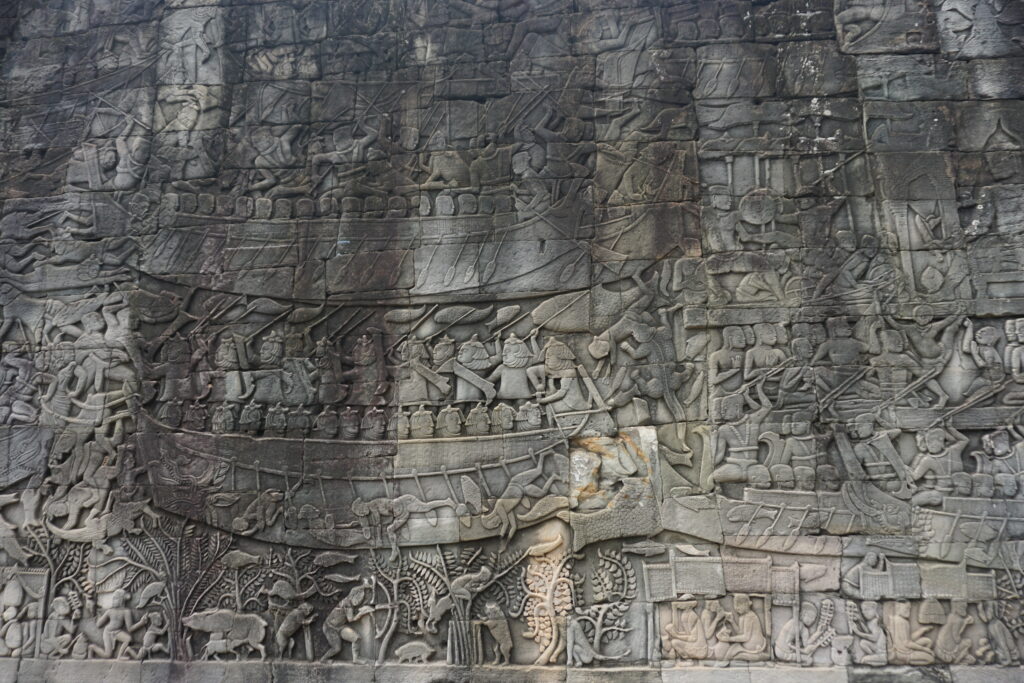
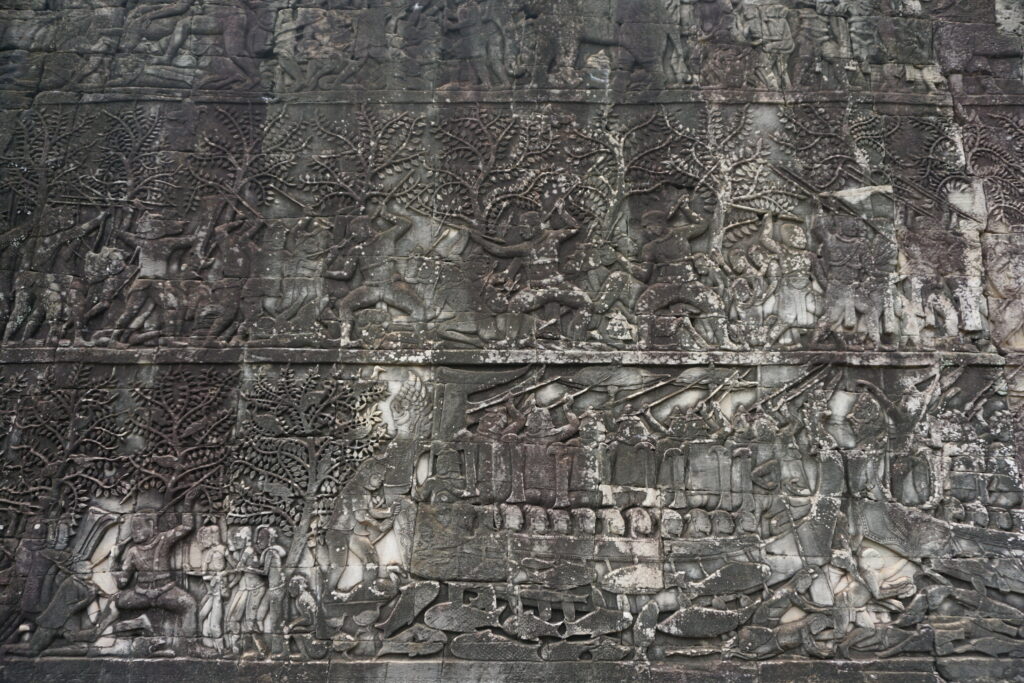
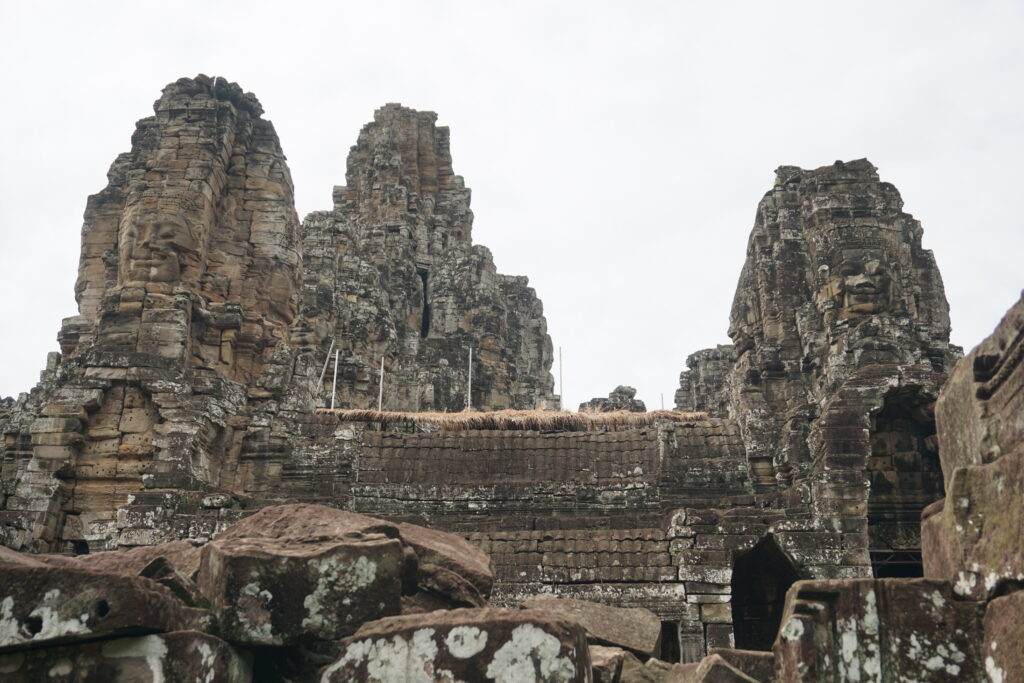
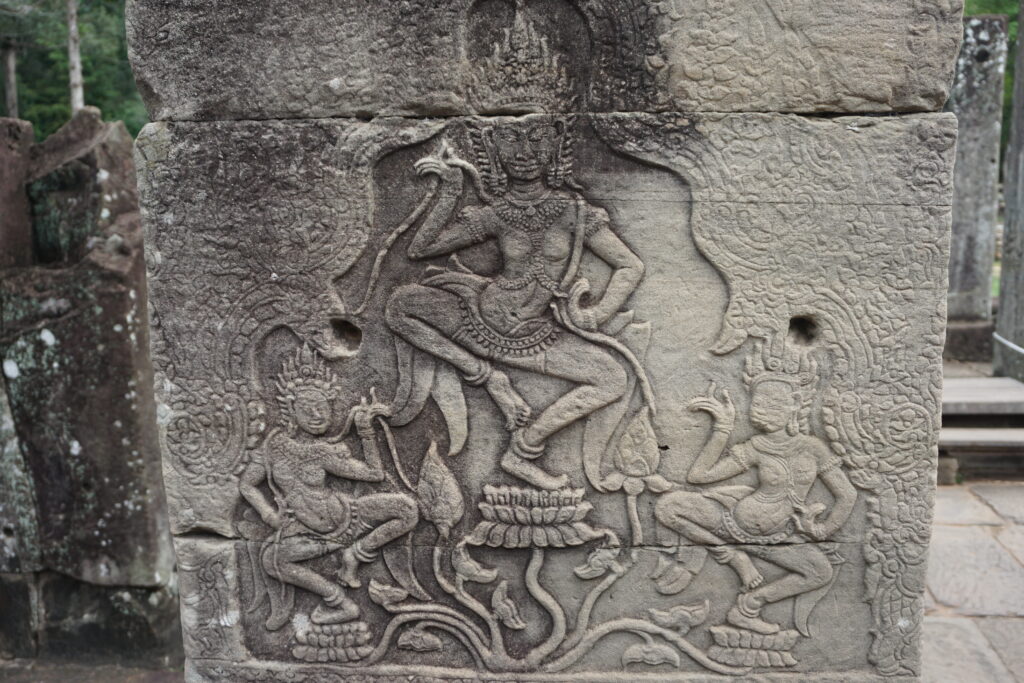
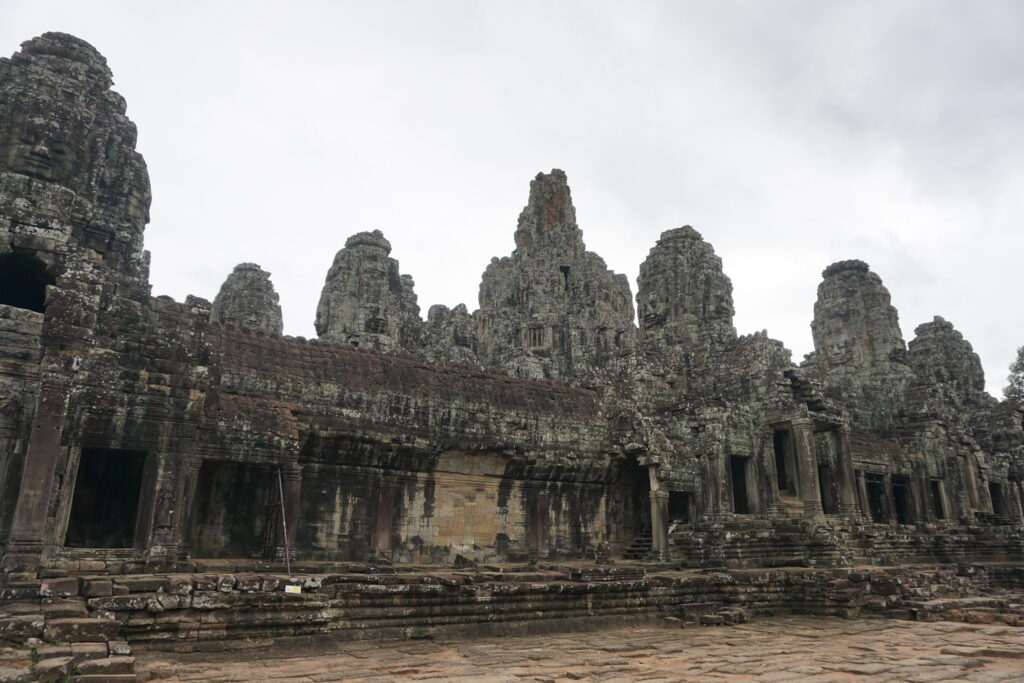
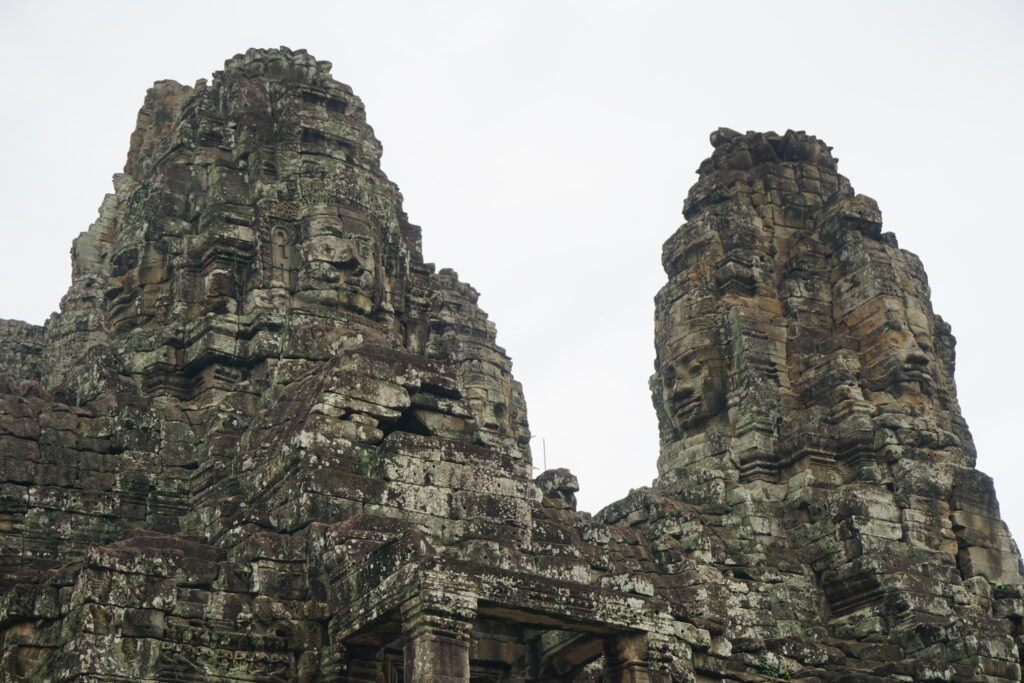
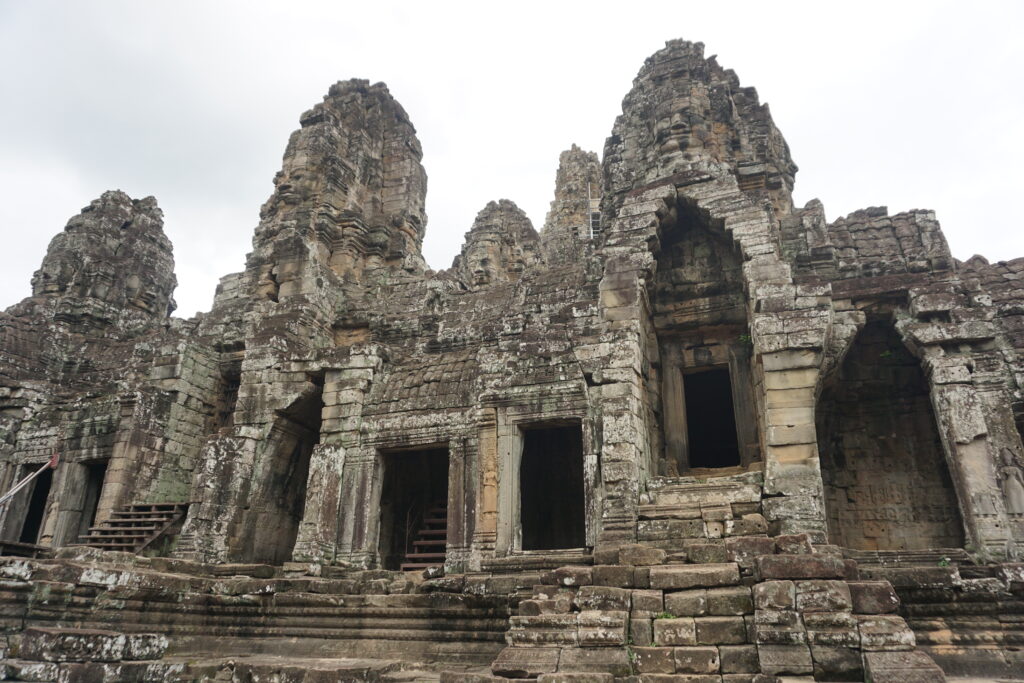
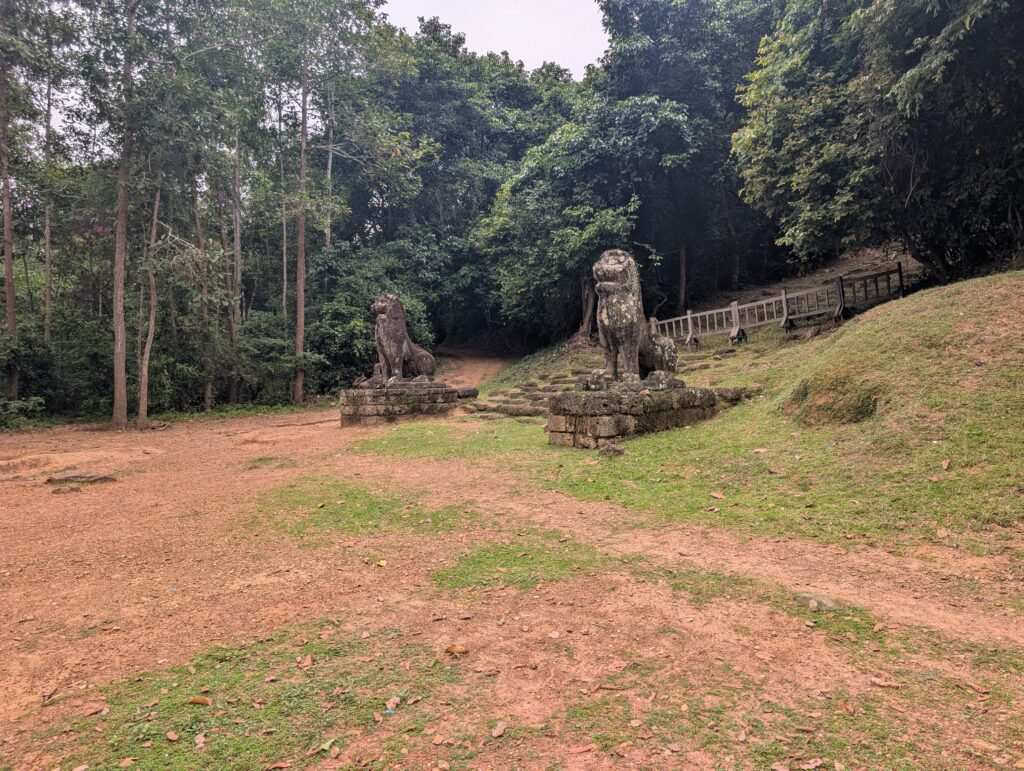
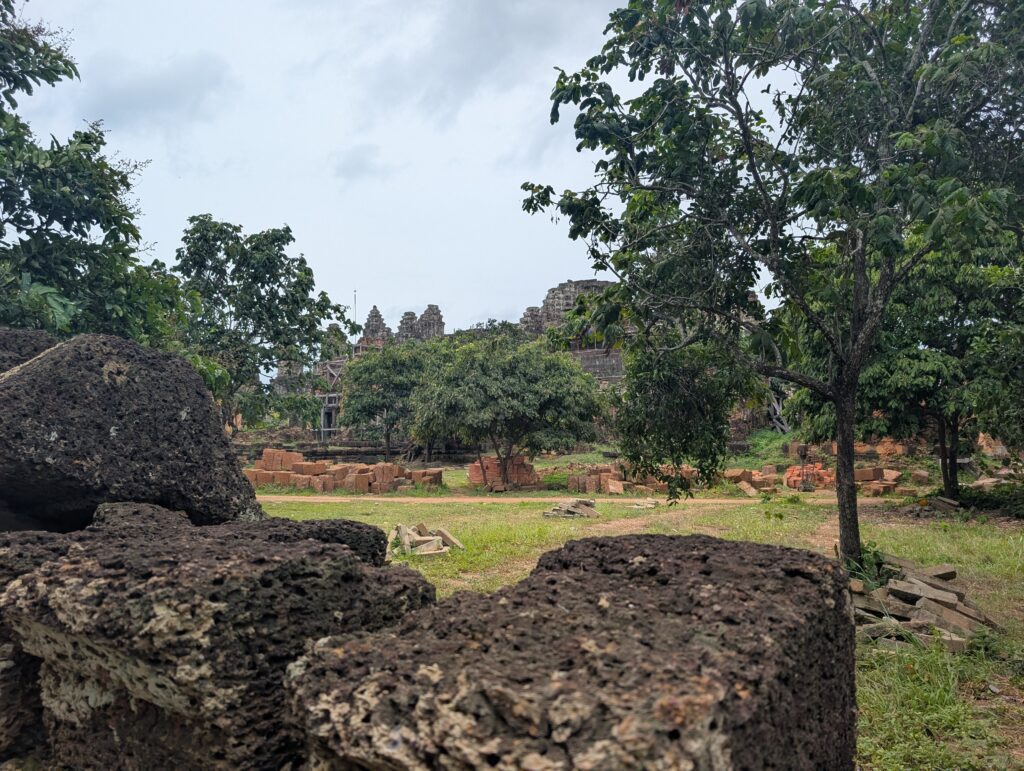
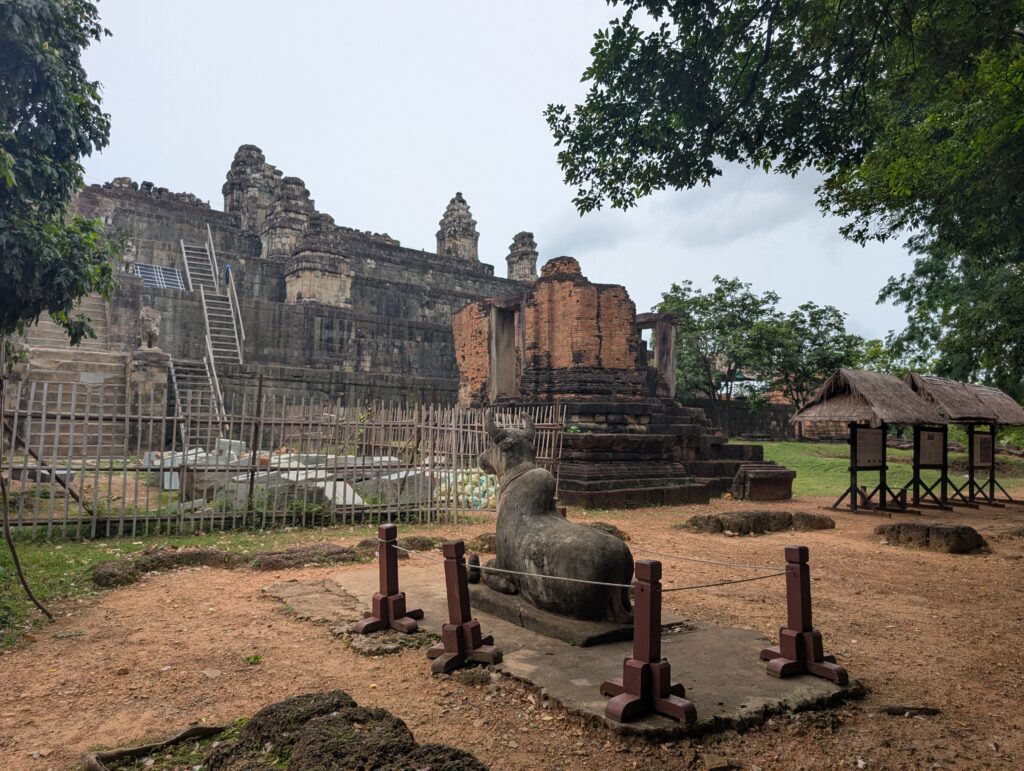
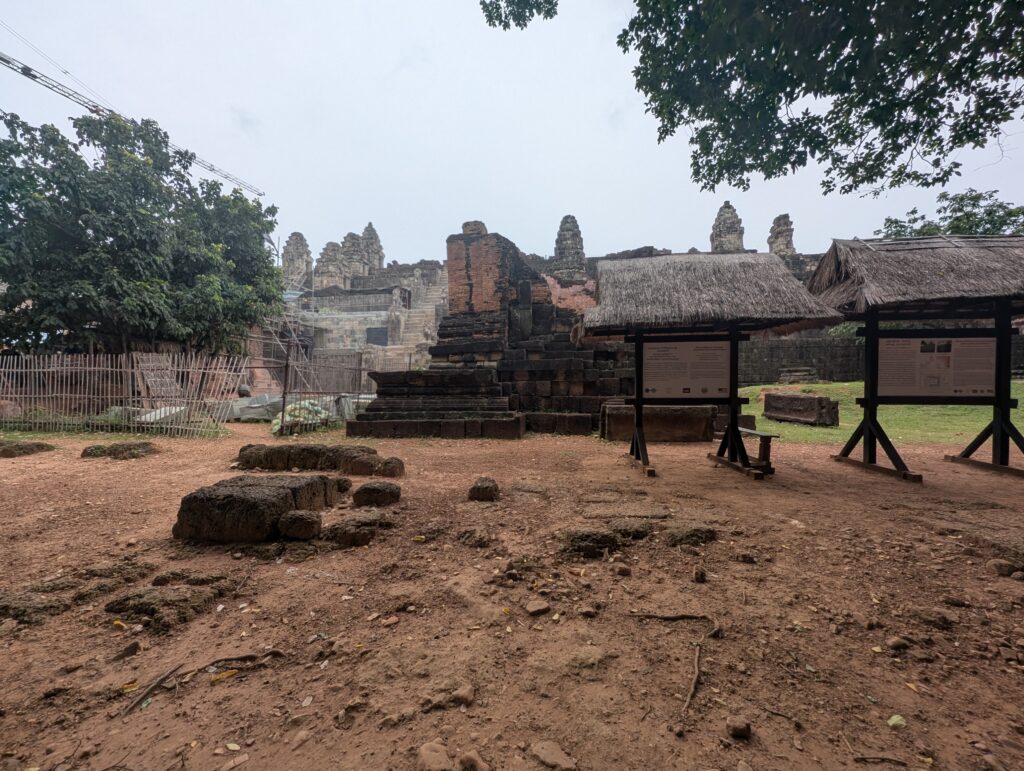
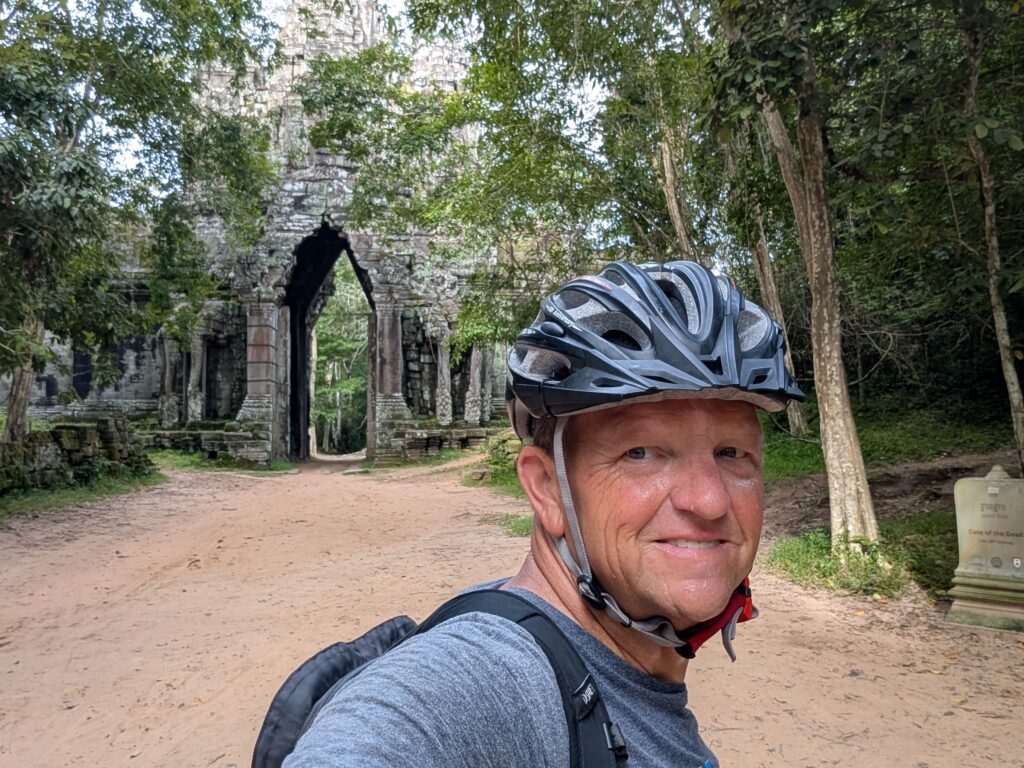
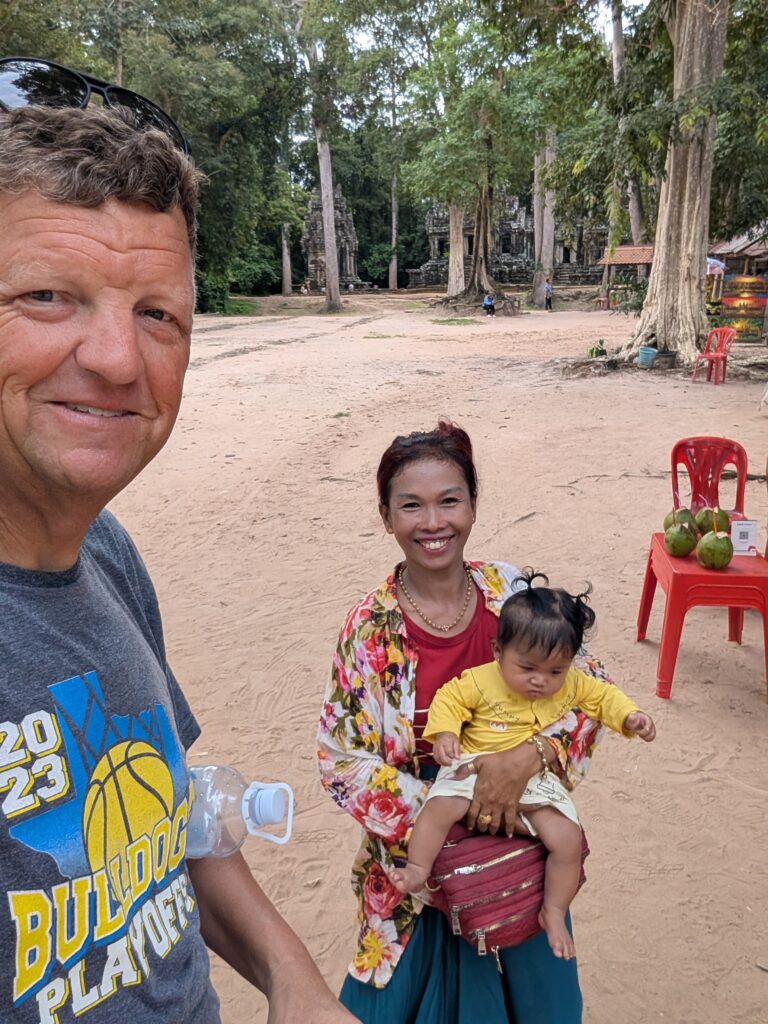
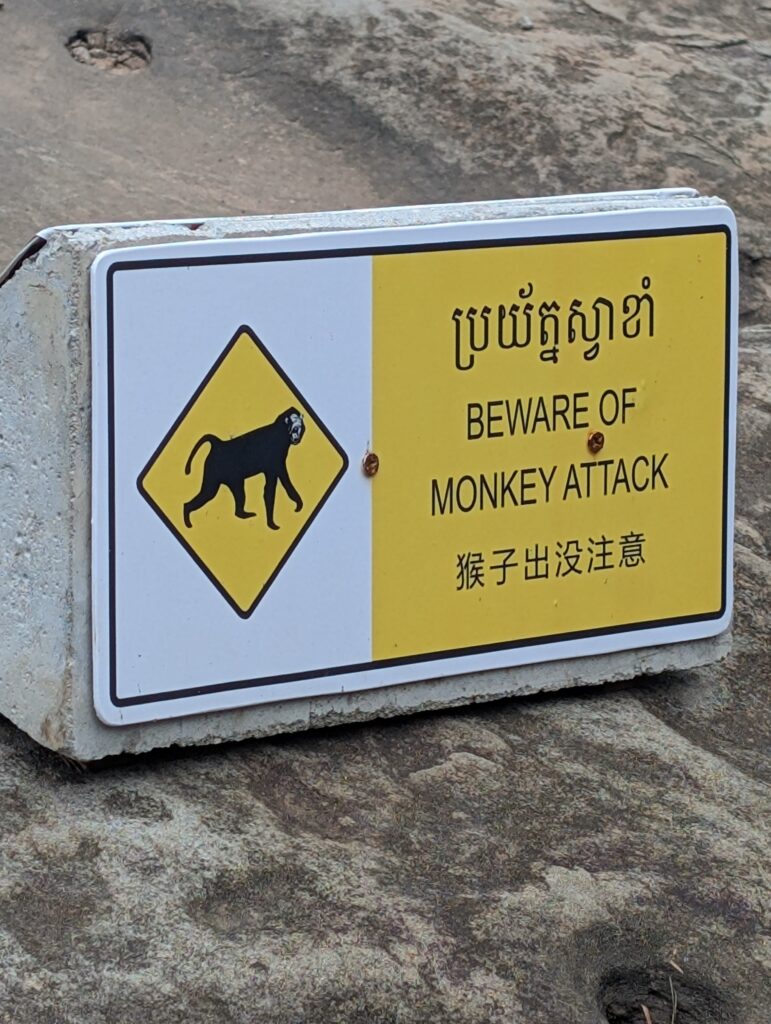
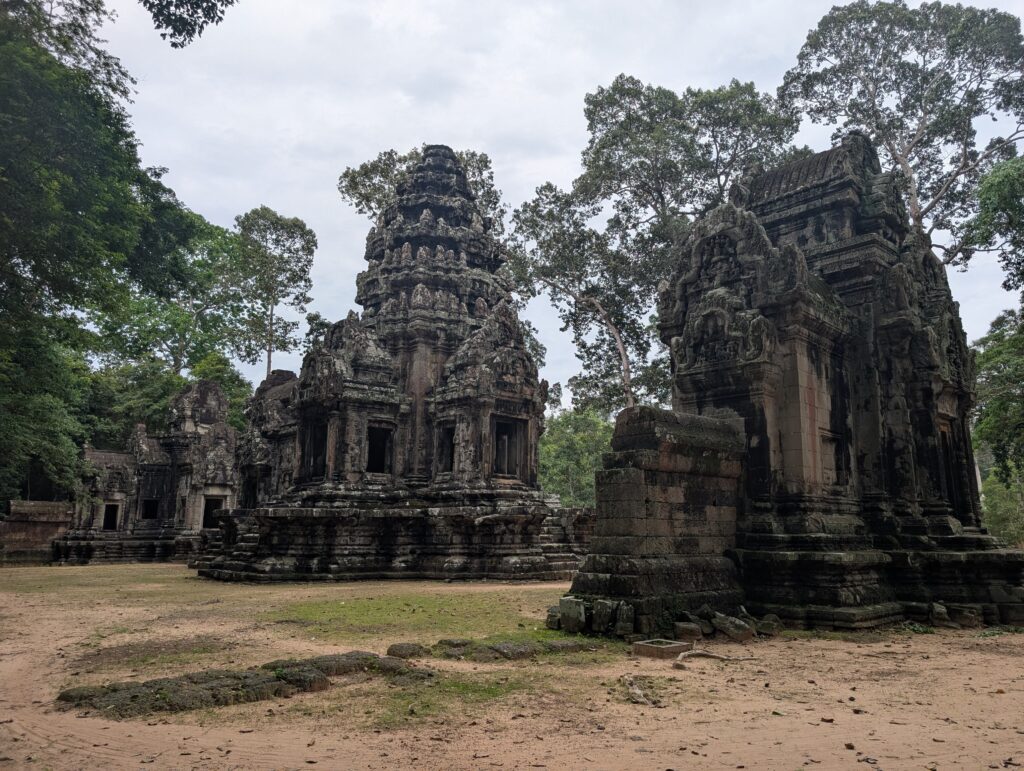
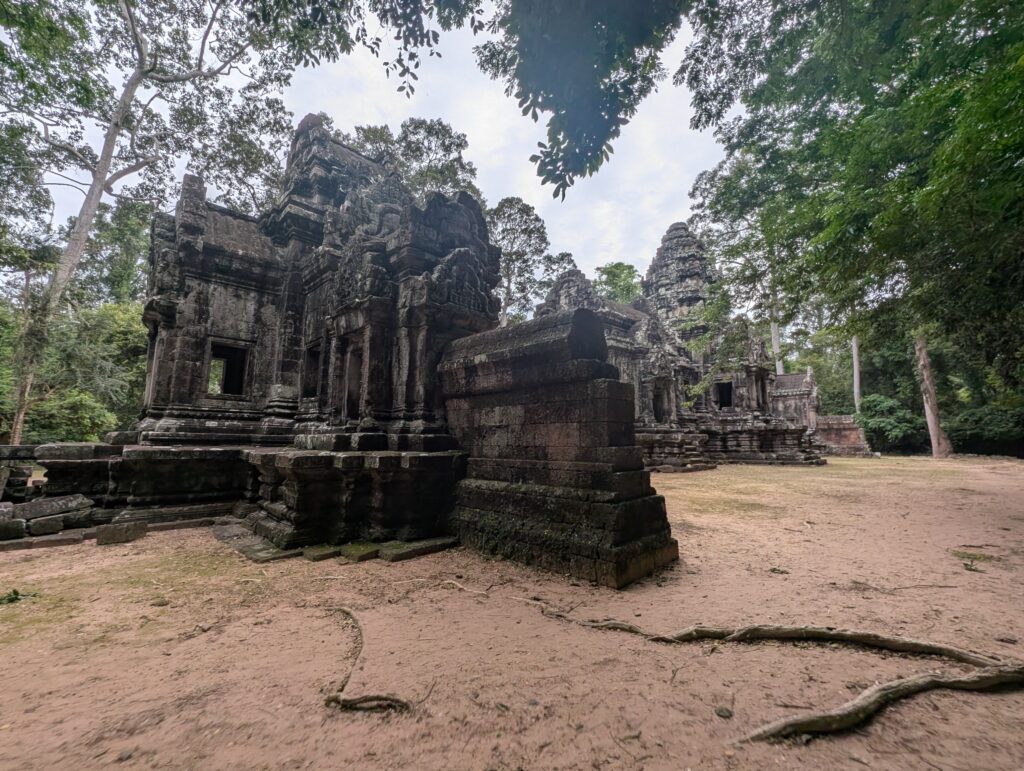
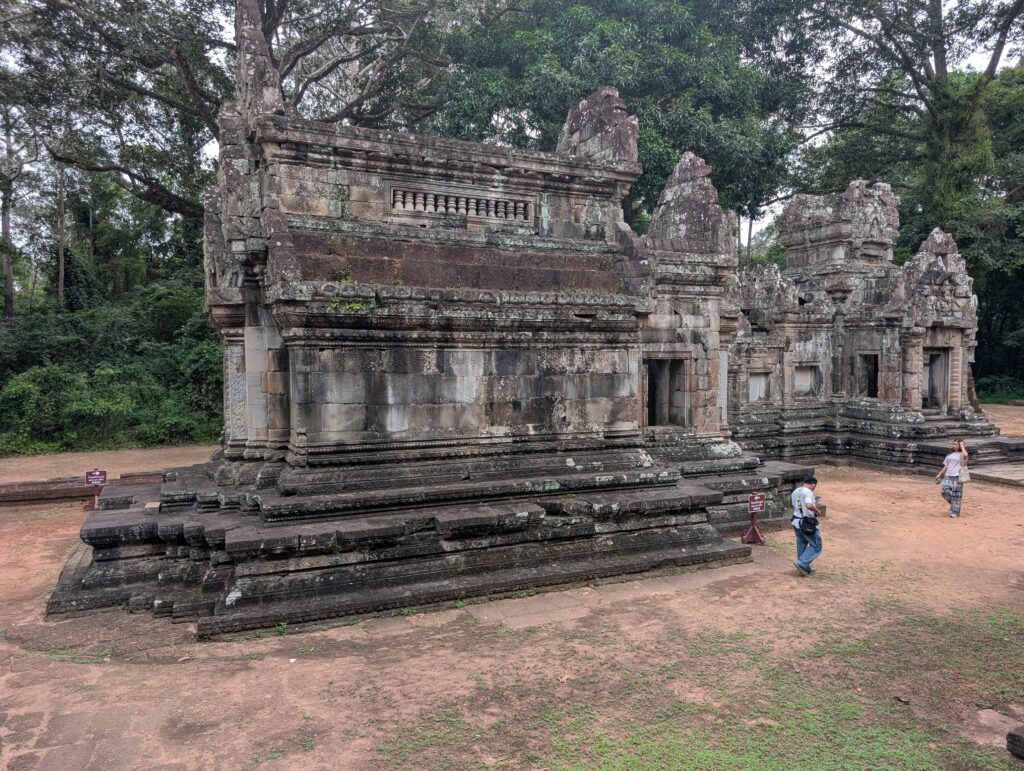
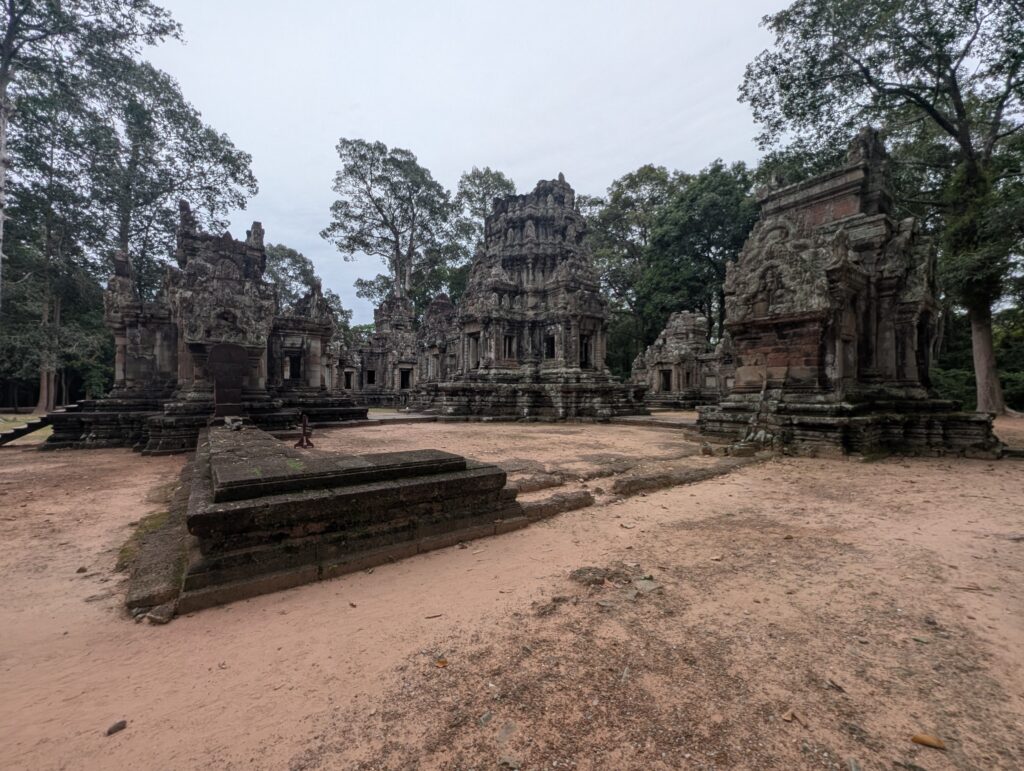
I determined by looking at the map that I could go the opposite direction on the small loop and see the rest of the temples on it, and then pick up the rest of the large loop from there. I had already seen the temples on the circuit segments that overlapped. This would be a longer course, but I could do it if I started early enough. It turned out to be a very long day. I saw about 12 temples of varying size. I was gone over 12 hours and put more than 30 miles on the bike.
I began at Prasat Krevan, then went to Banteay Kdei. Ta Prohm was next. It has numerous giant strangler figs with roots engulfing many of the buildings. This is the temple used for Angelina Jolie’s scene in Tomb Raider where she falls into the tomb. I hit Ta Keo before lunch, which put me right near the place I had met Srey Yon’s family the day before. I decided to swing by their stand to see if they were selling meals as well as just snacks and drinks. She said they didn’t have anything, but told me to sit down and she’d find something. She hopped on a motorbike, went to buy ingredients, cooked them, and then we all ate lunch together – between customers again, of course. This worked out nicely, as they provided good company and a nice lunch (something I could use as opposed to a painting or souvenir), and gave me the chance to pay them something nice for it. I made sure and paid more than lunch for three would have cost in a restaurant there. It was a delicious lunch with three different Khmer specialties and some rice. I could tell these people were struggling financially, though they don’t complain about it. They’re hustlers, though. They would make good money plying their trade in the U.S.A.
All of that took a bit longer than I had intended to spend on lunch, but it was worth it for the conversation and interaction. Next, I visited Baphuon, then the Royal Palace, the Terrace of the Elephants, and the Terrace of the Leper King. I then left the Angkor Tom complex and headed to Preah Khan. After that, I stopped at Prasat Kroi Ko, Neak Pean, Ta Som, East Mebon, and finally Pre Rup, before rolling back into Siem Reap just as night fell. It was an exhausting but fulfilling day. I capped it off by walking across the street. I was so hungry, I ordered two plates of food and a mango smoothie. I tried Pork Char Kruoeng, which is meat marinated in fish sauce and served with stir fried bell peppers, white onions, garlic, and lemongrass. It was a nice dish.
(Continued)
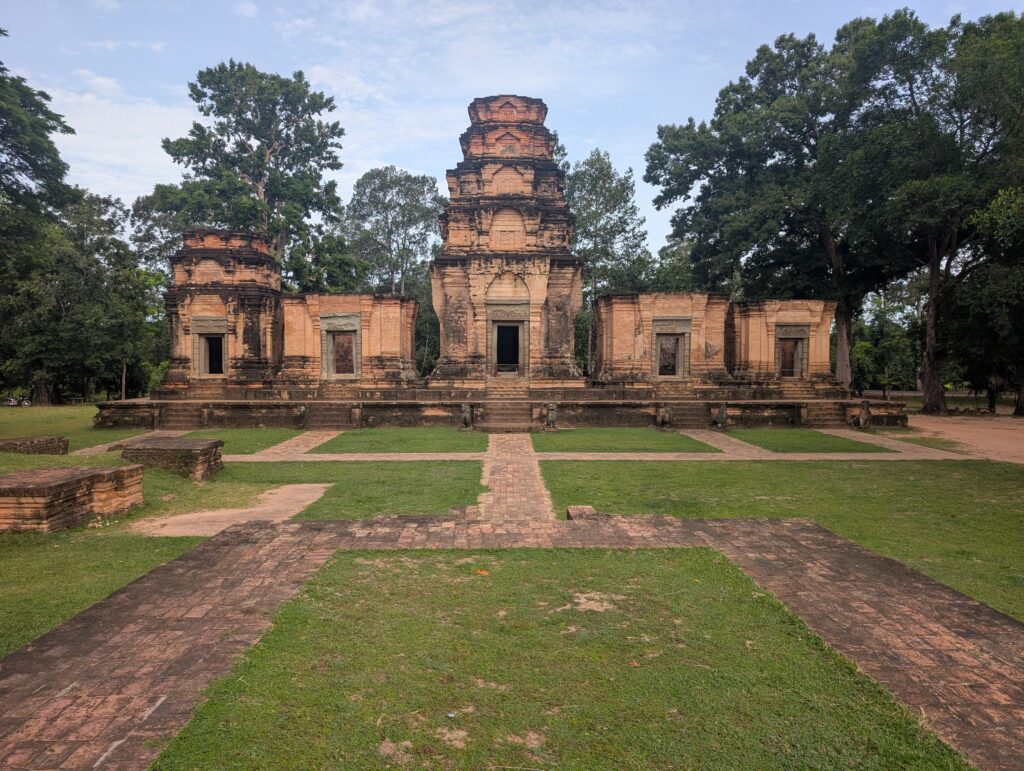
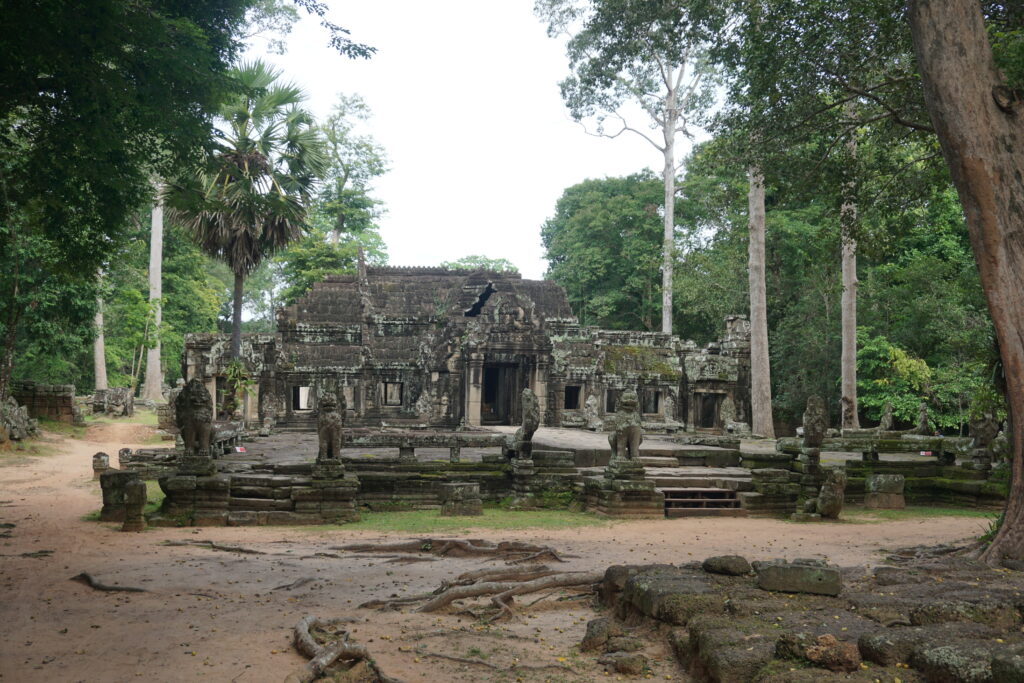
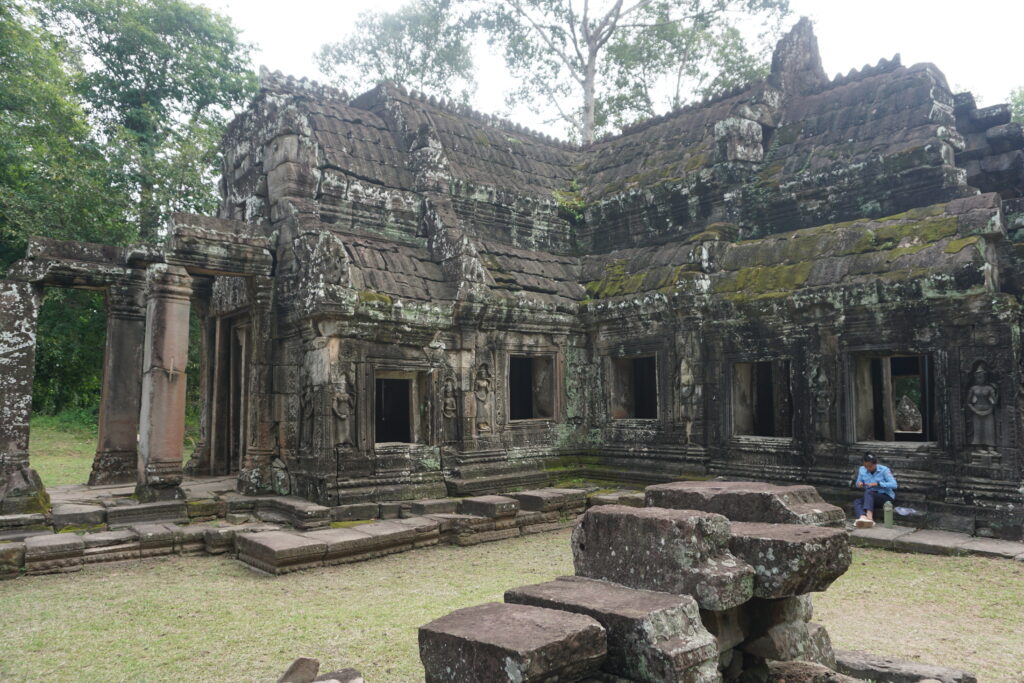
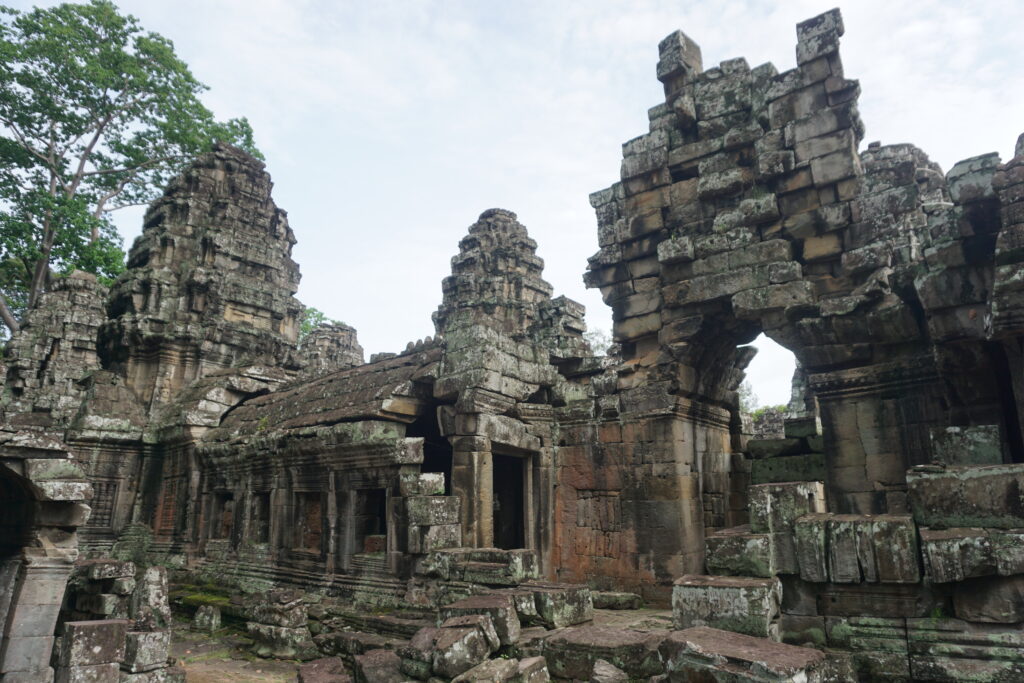
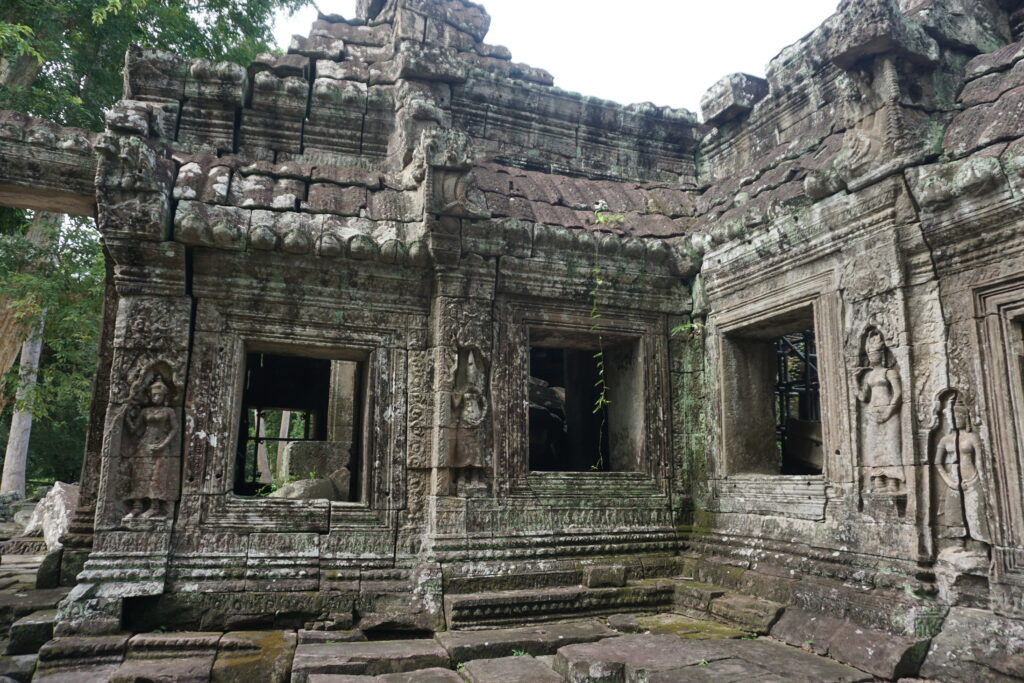
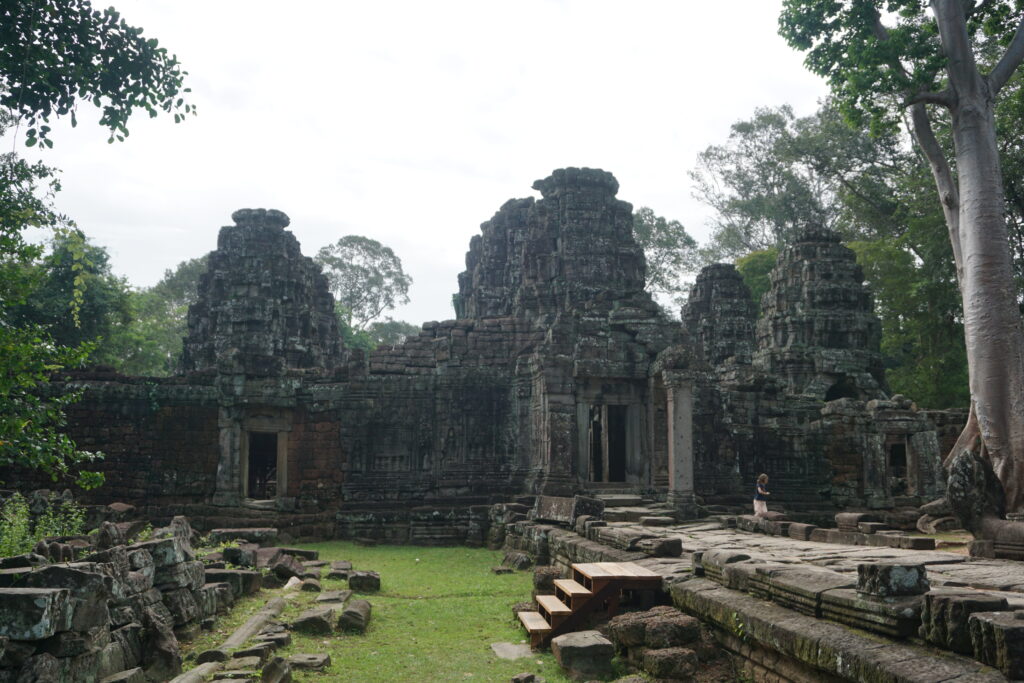
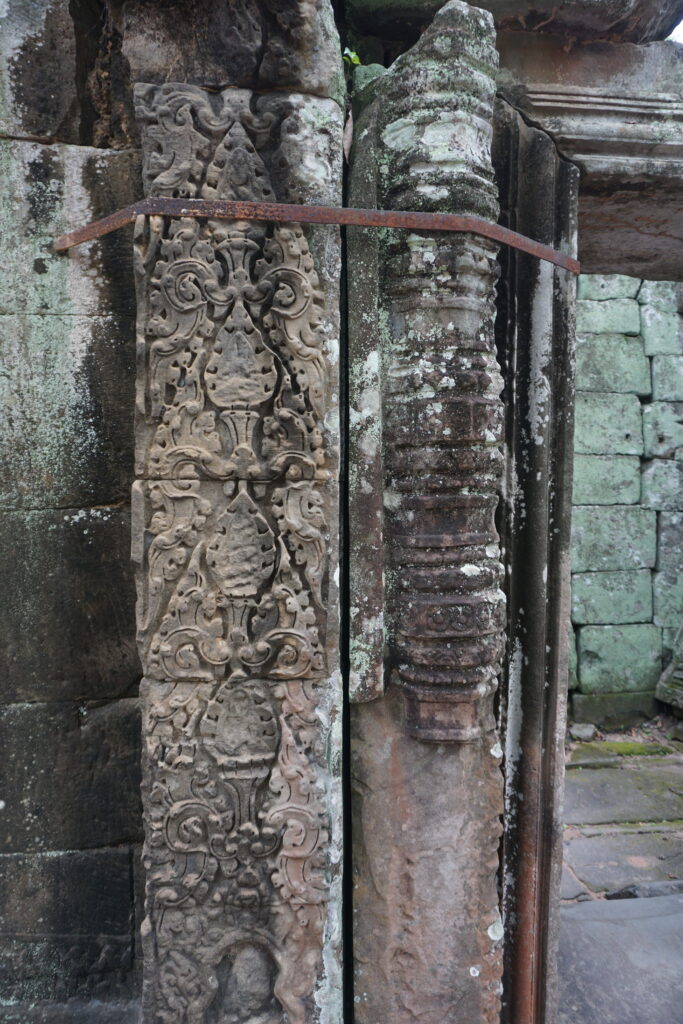
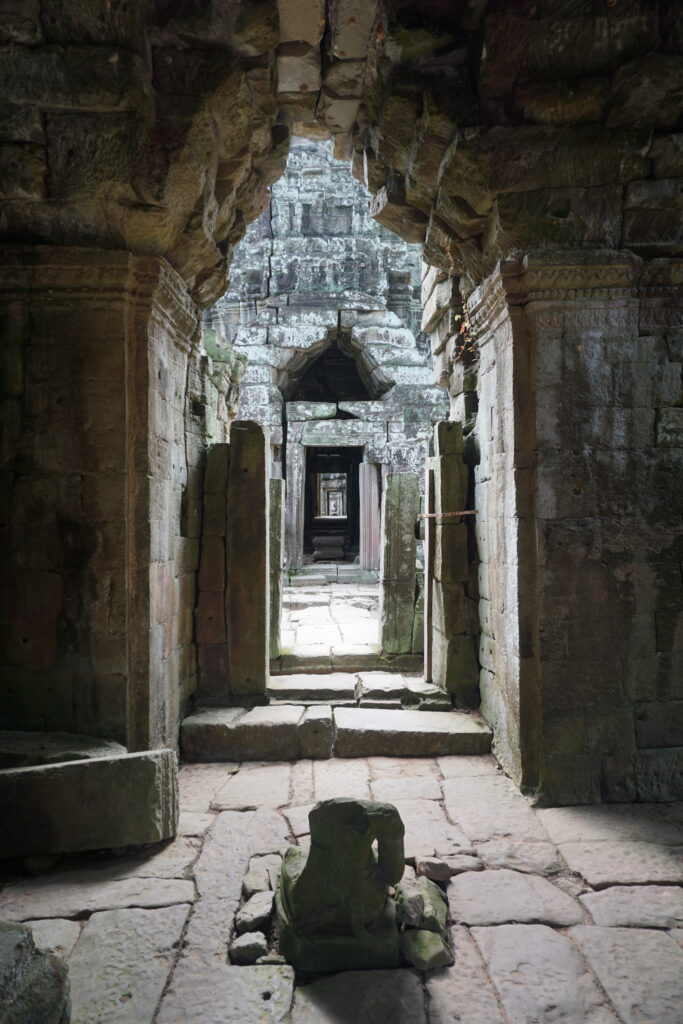
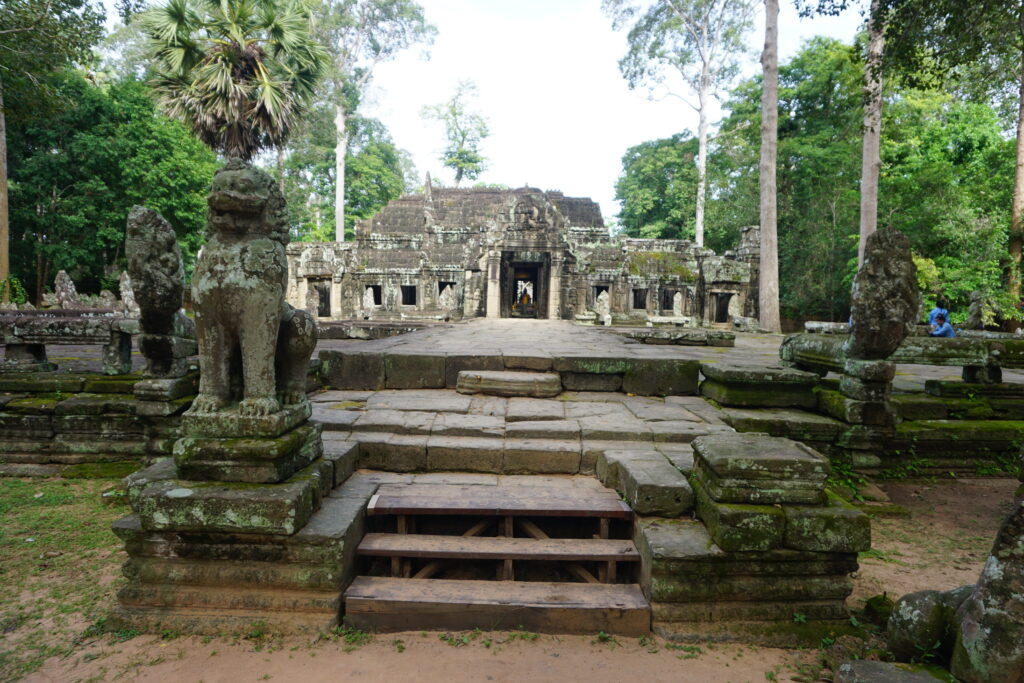
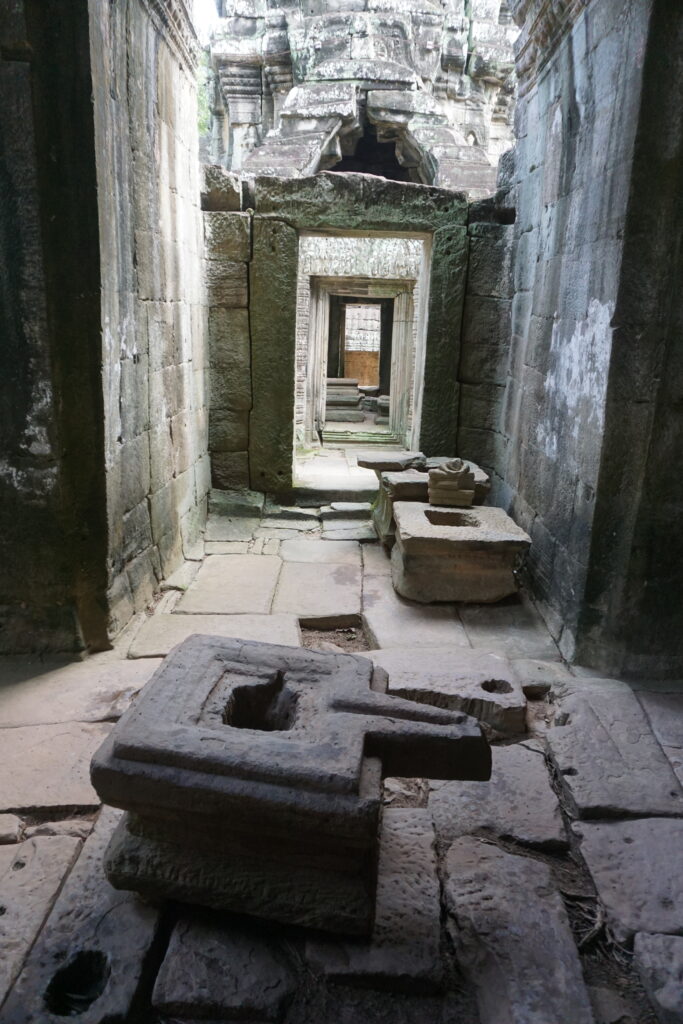
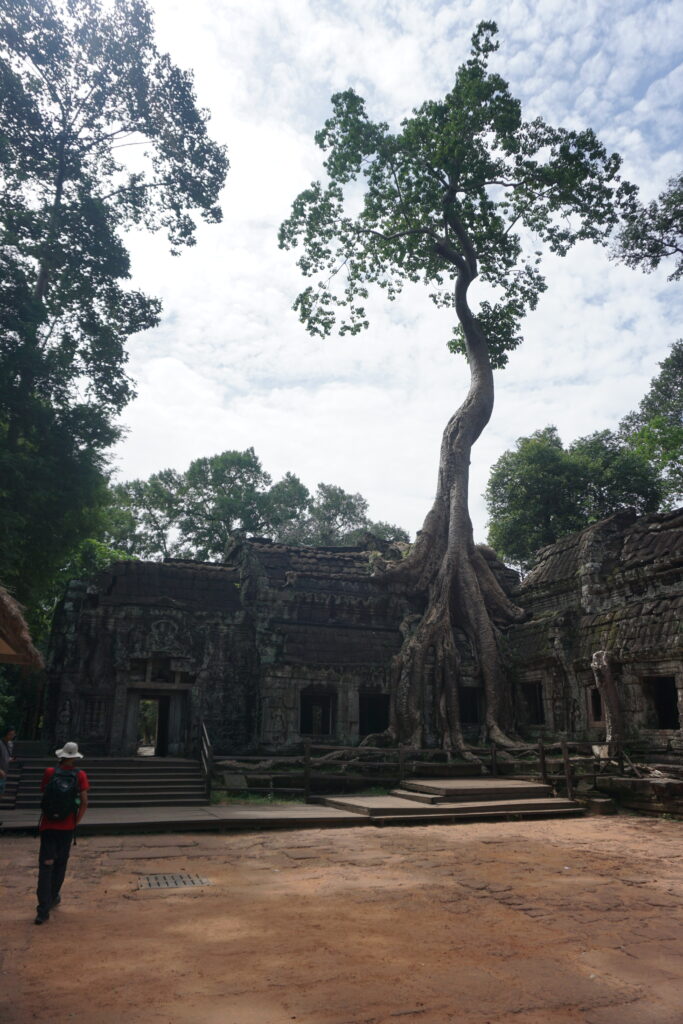
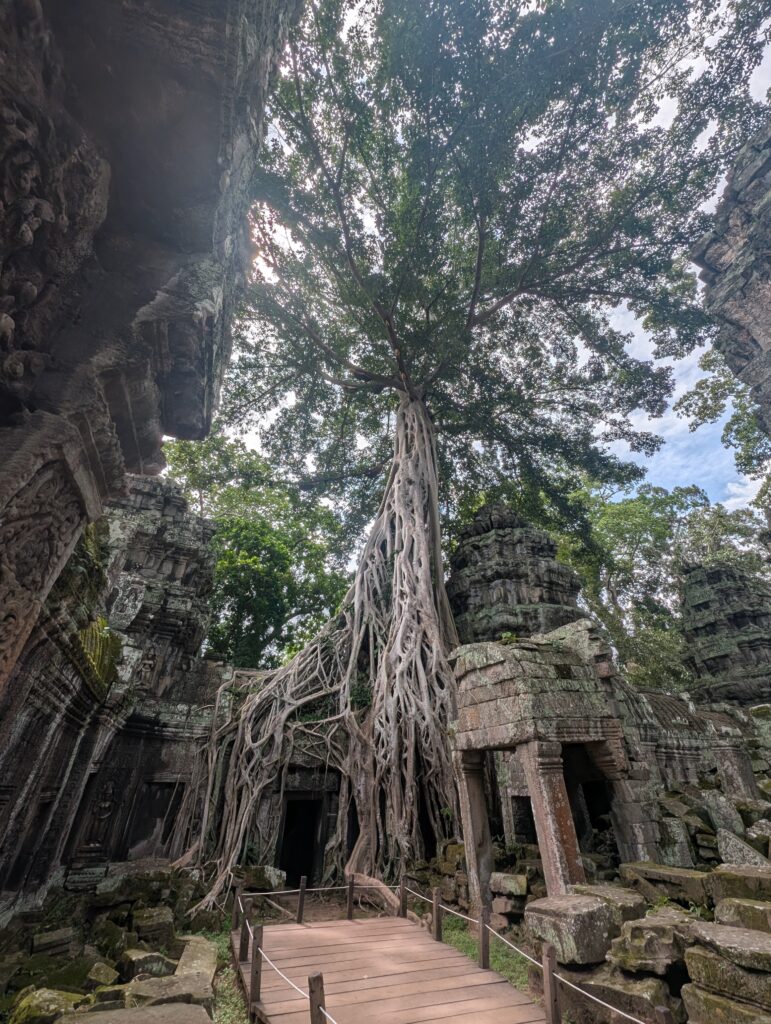
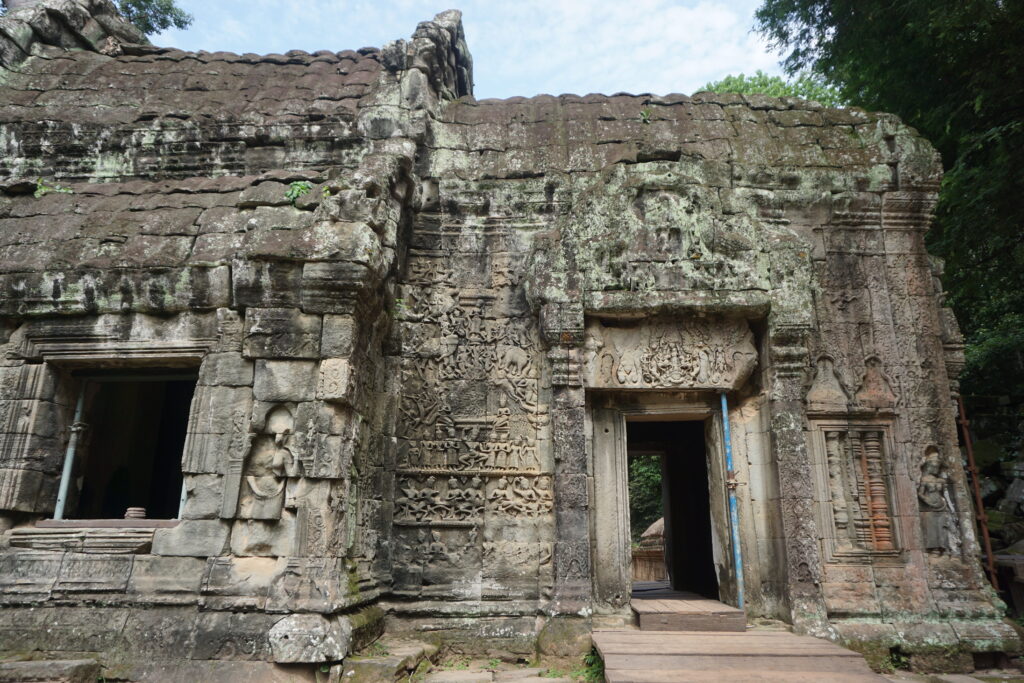
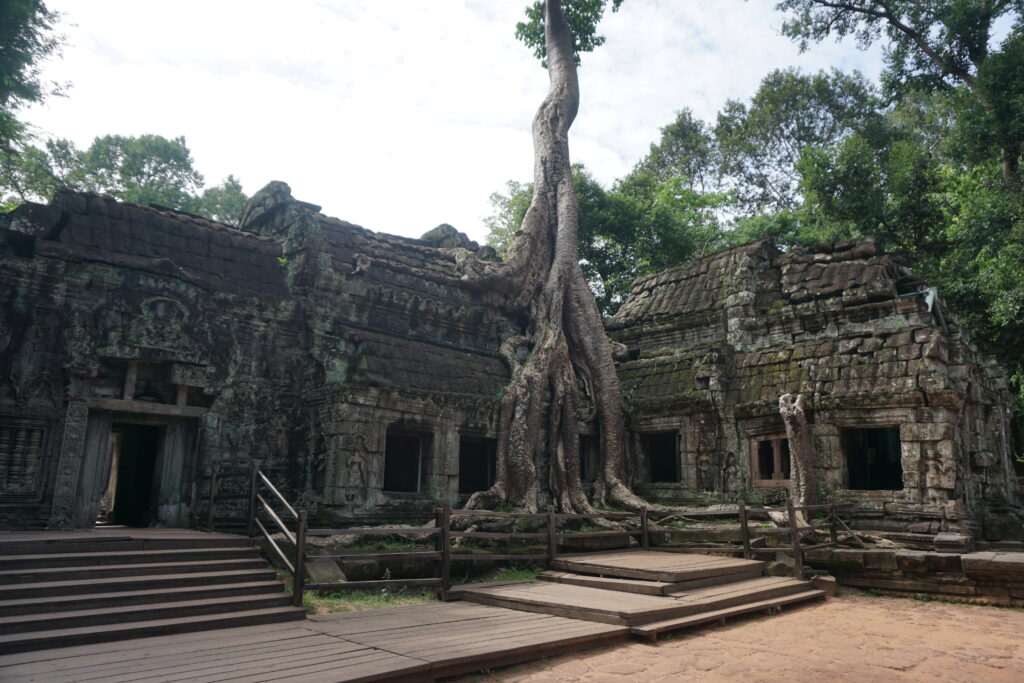
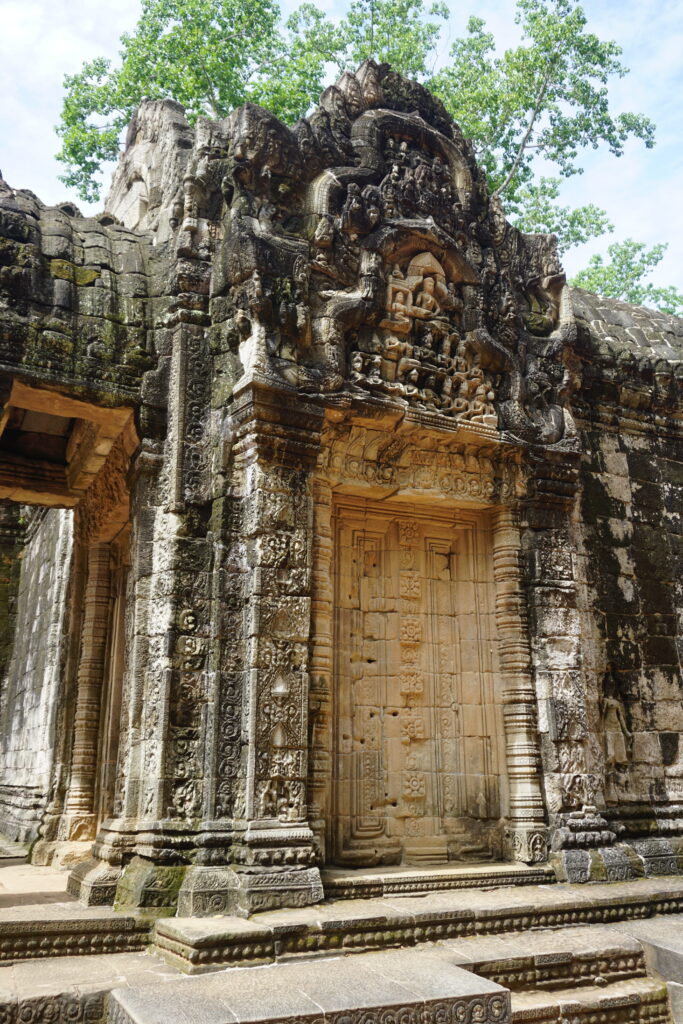
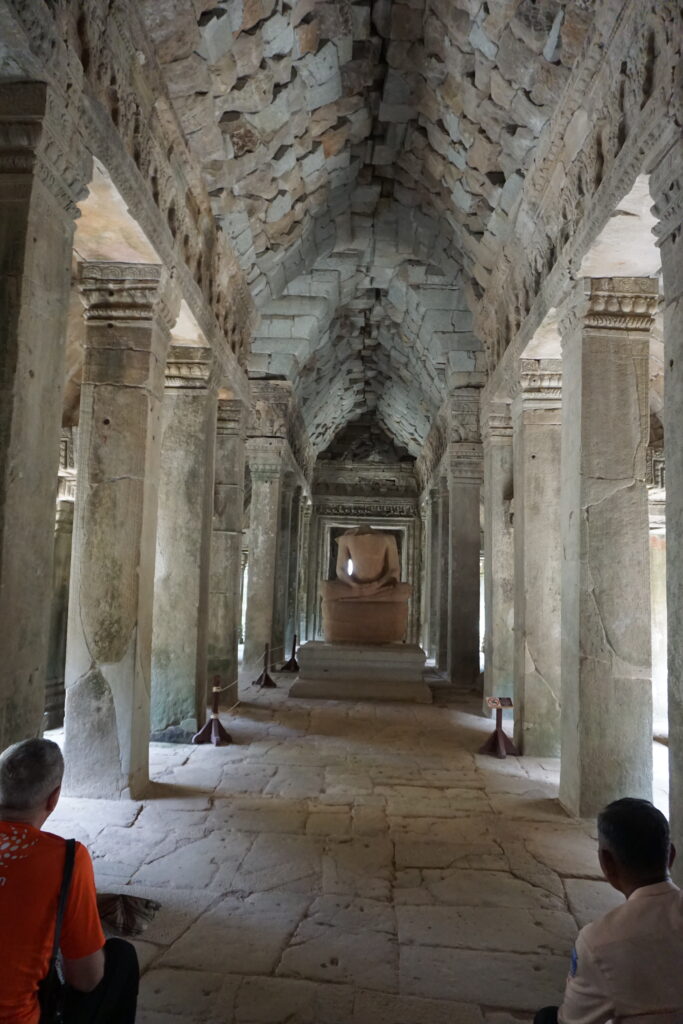
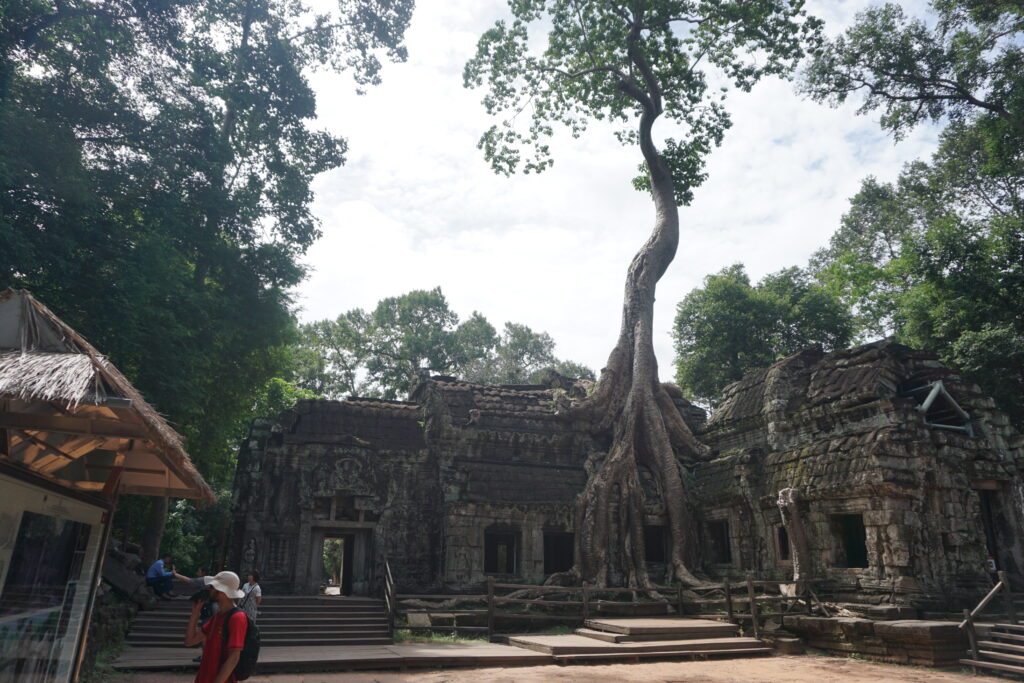
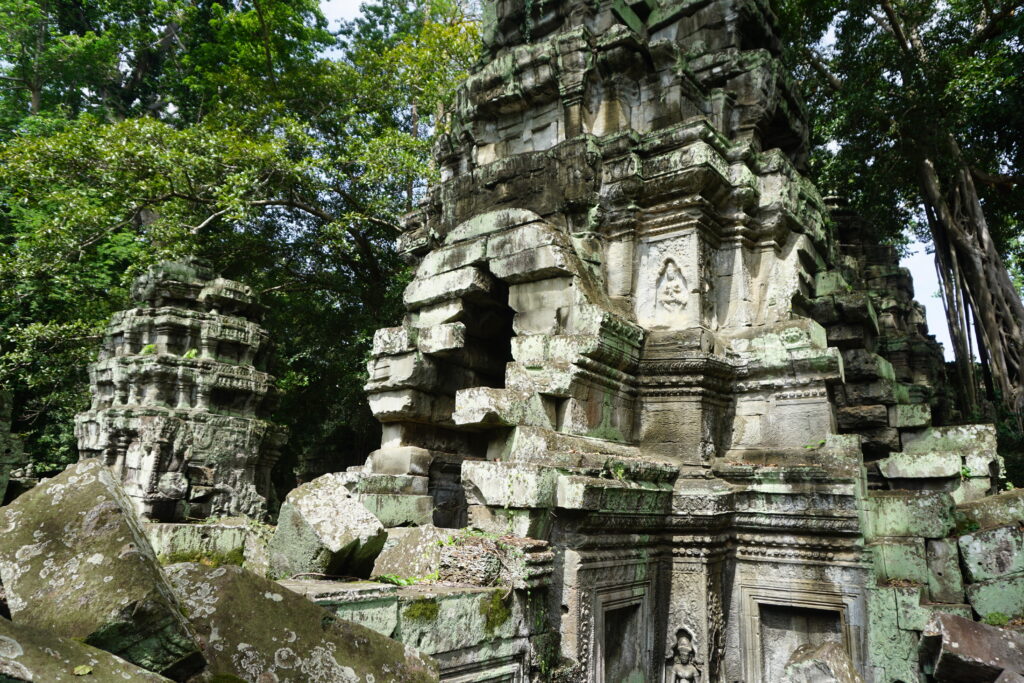
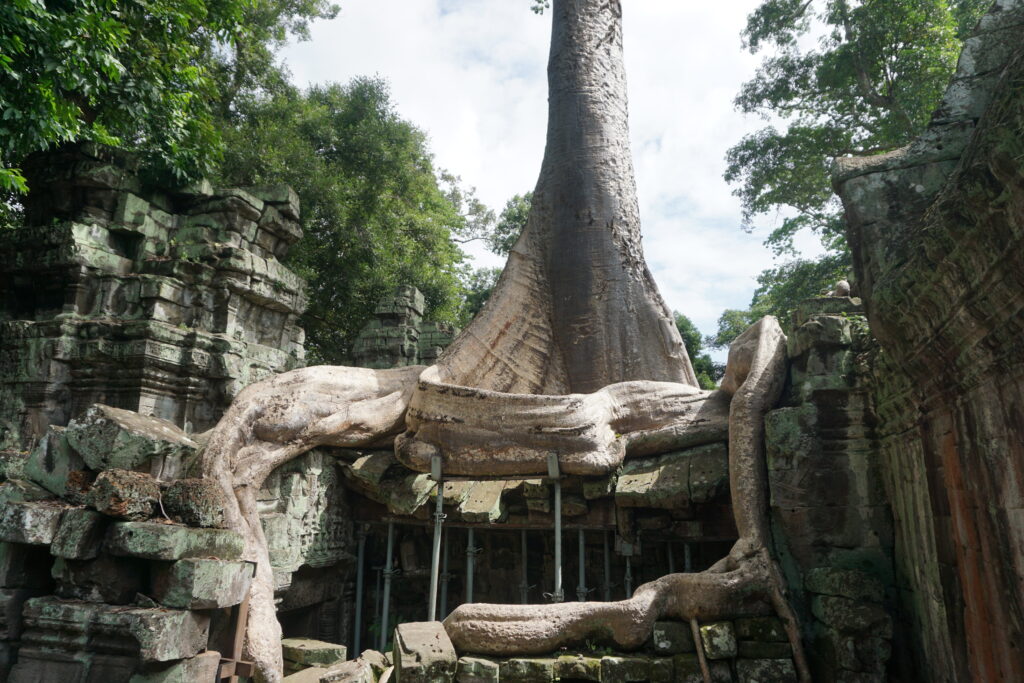
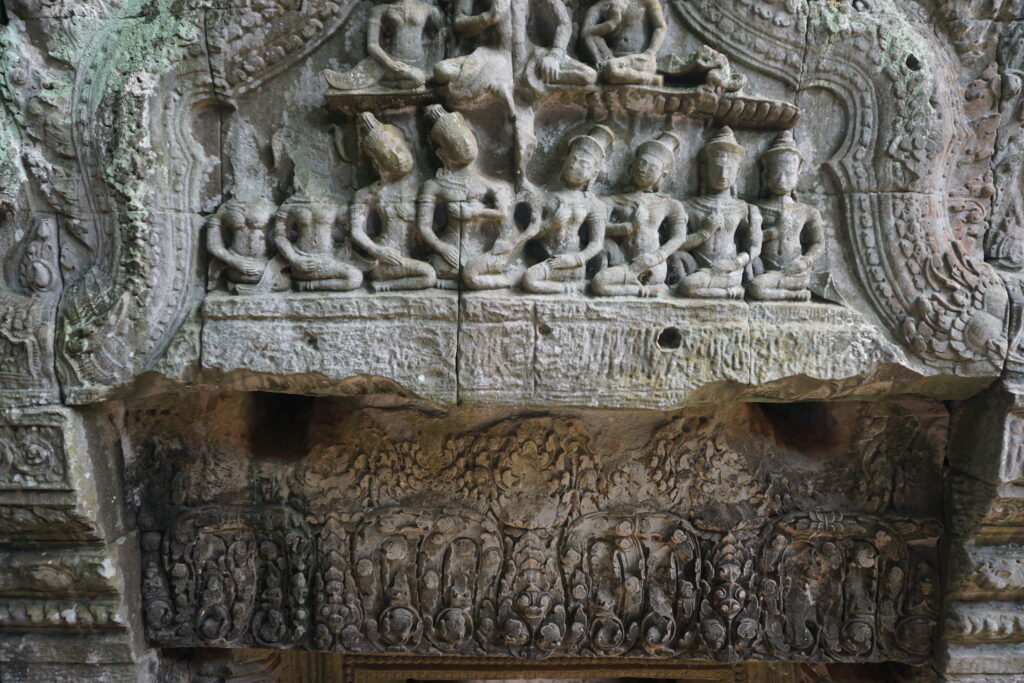
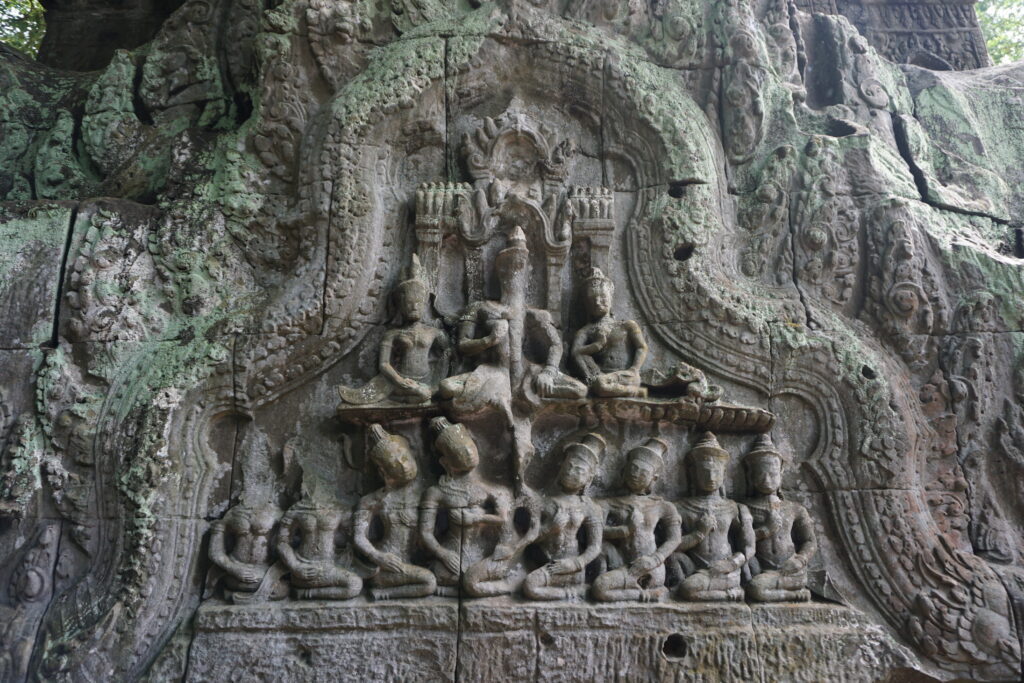
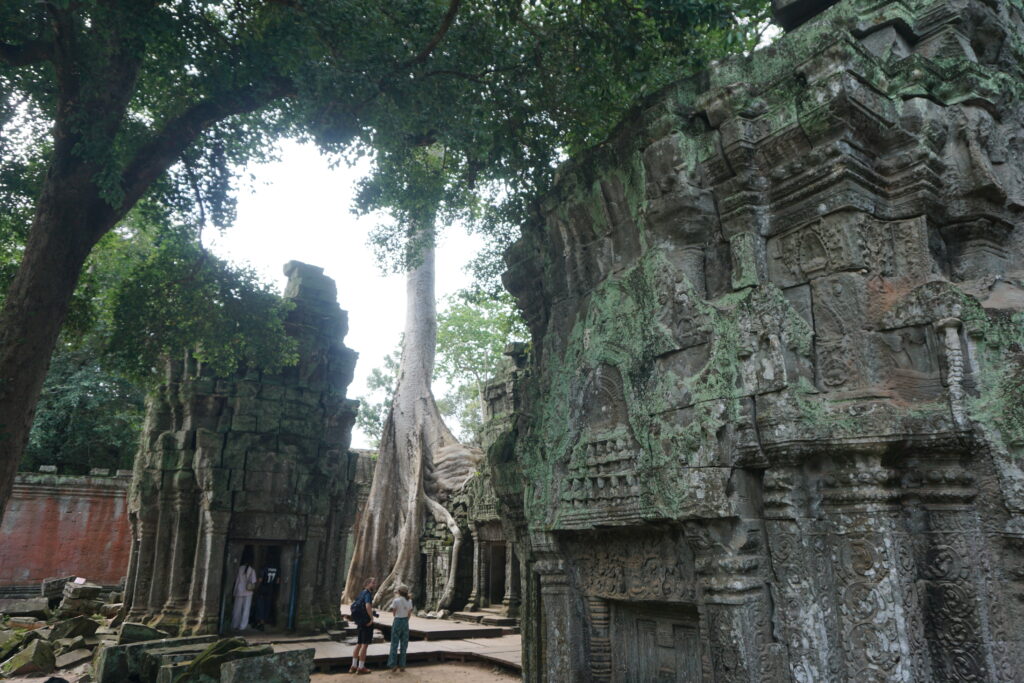
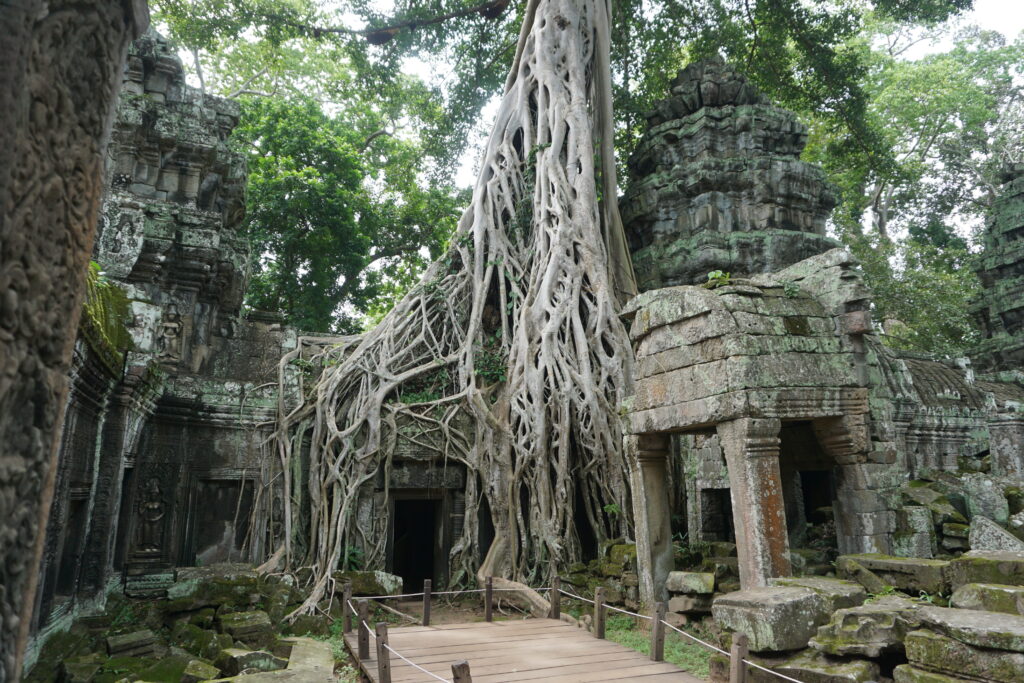
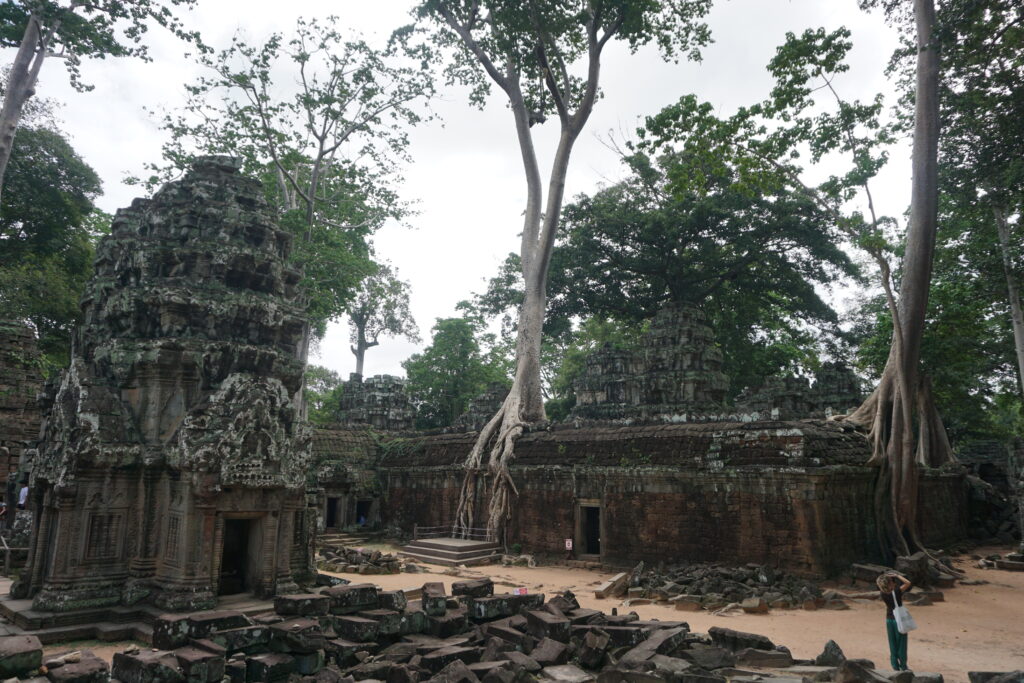
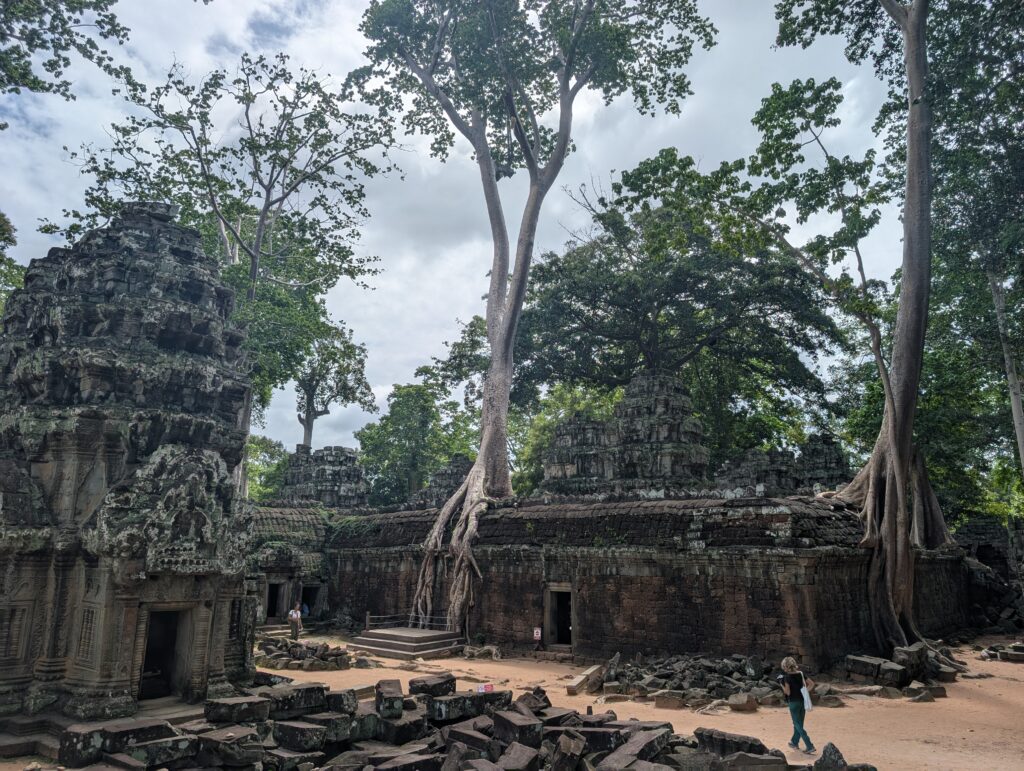
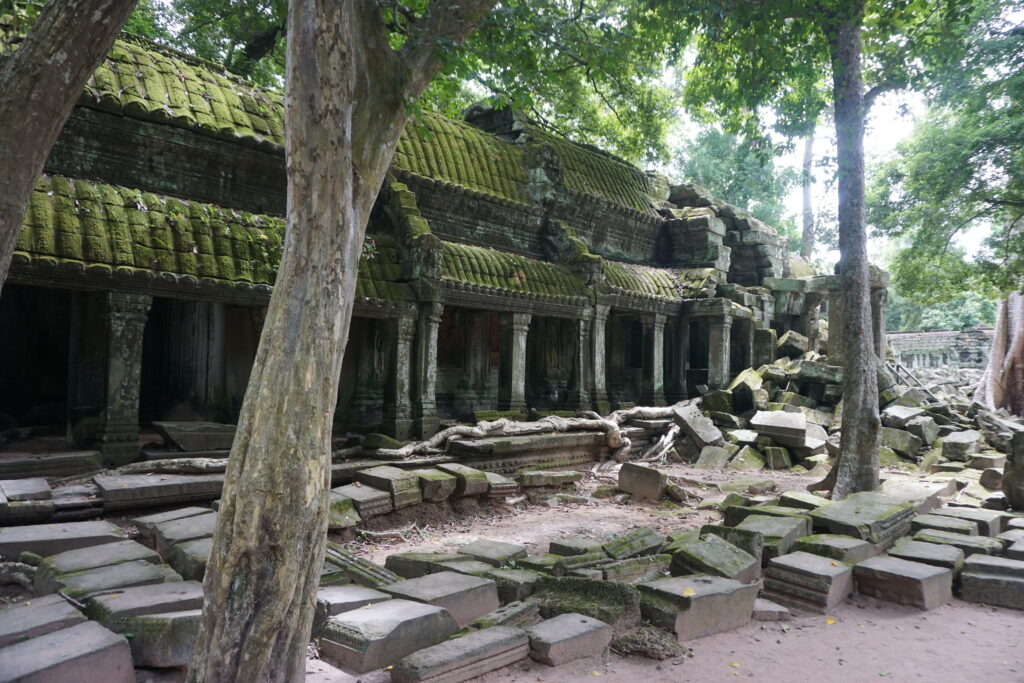
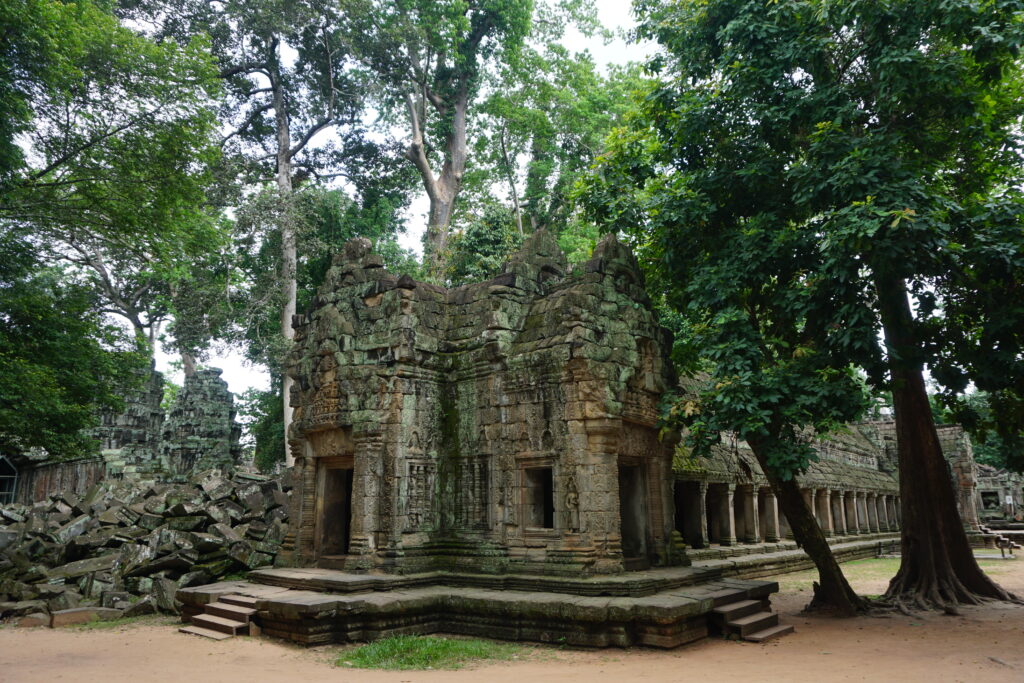
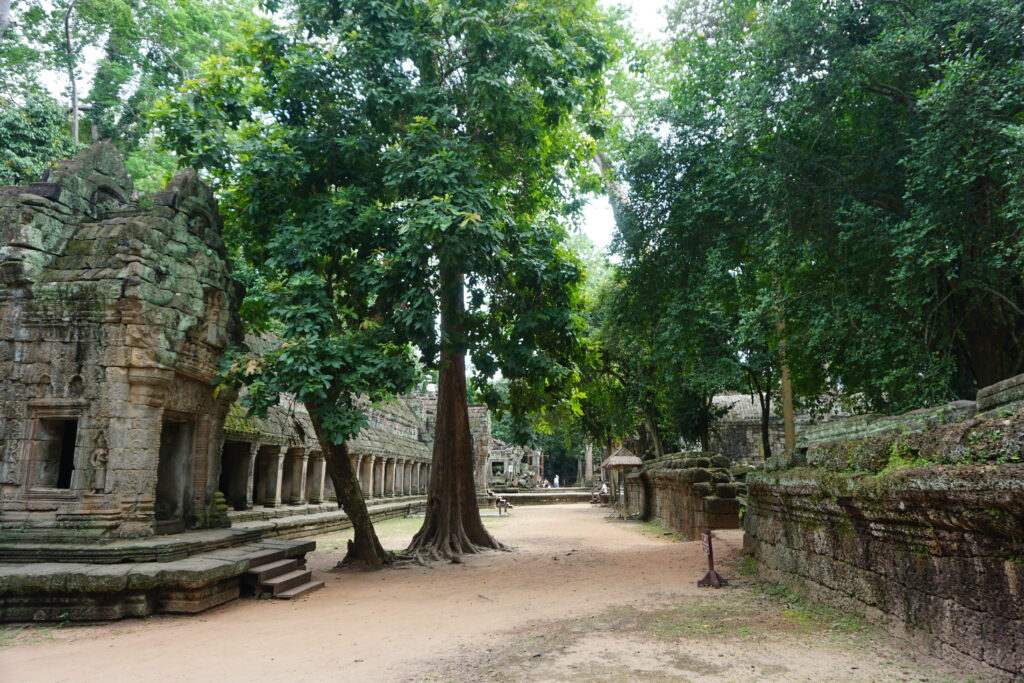
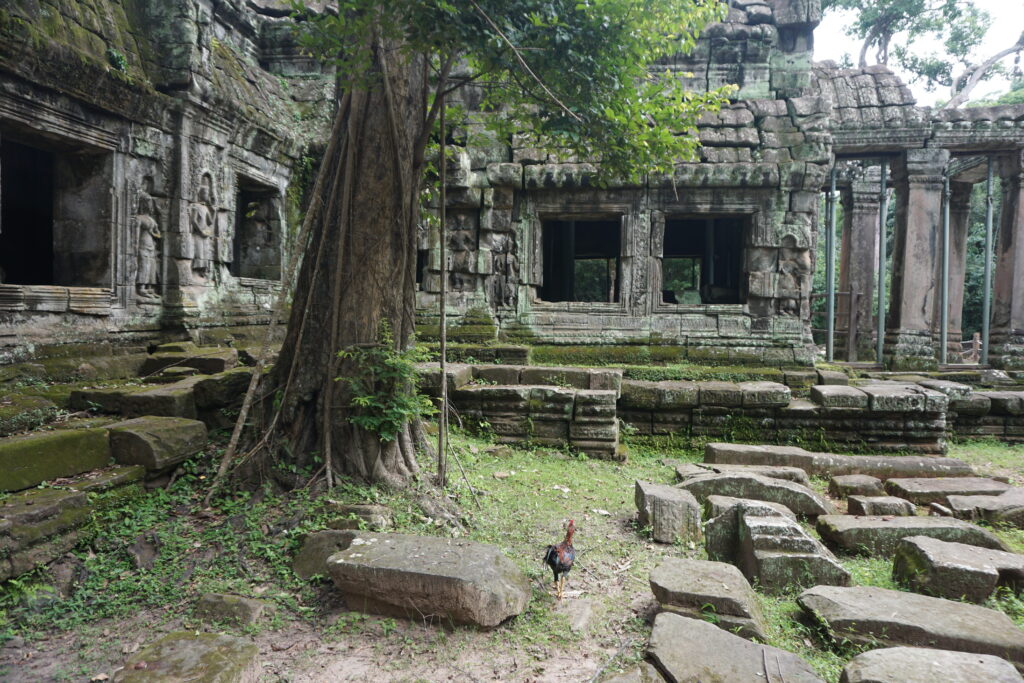
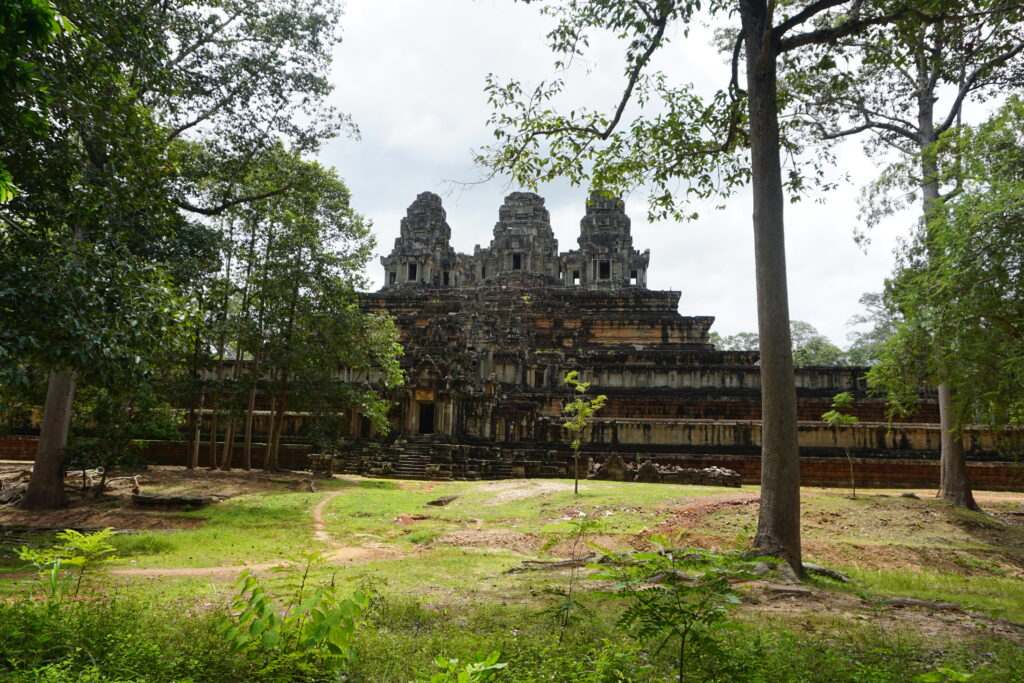
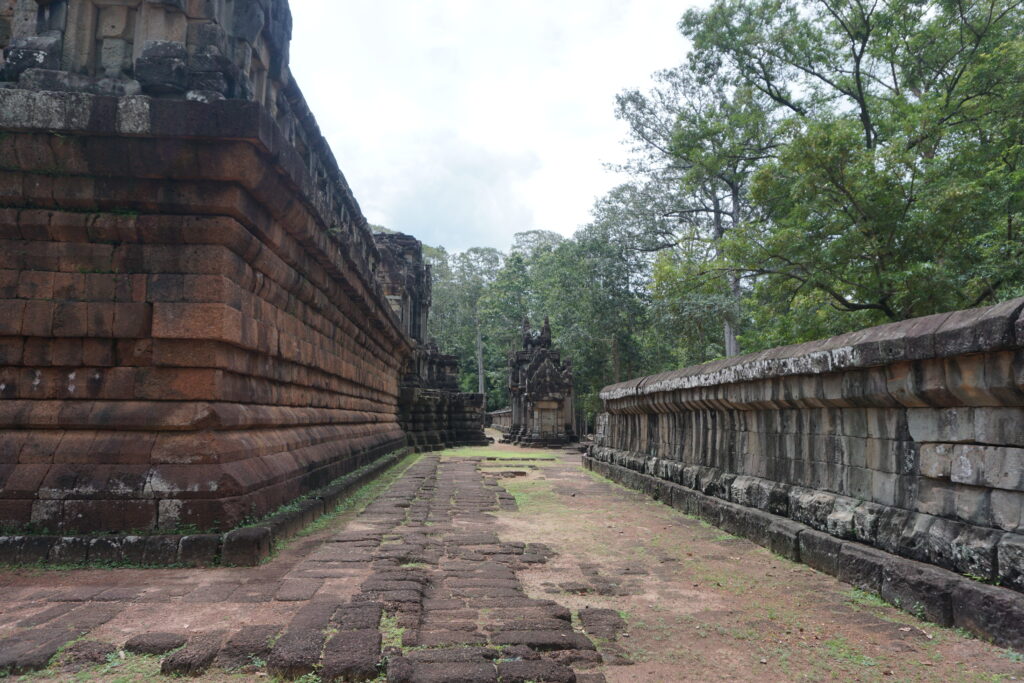
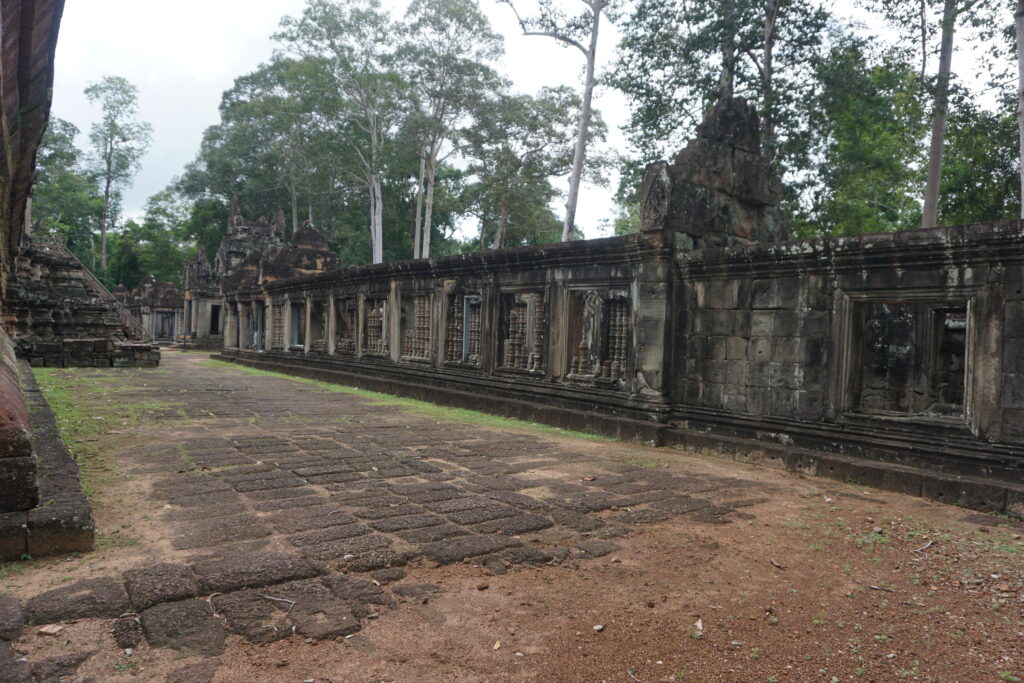
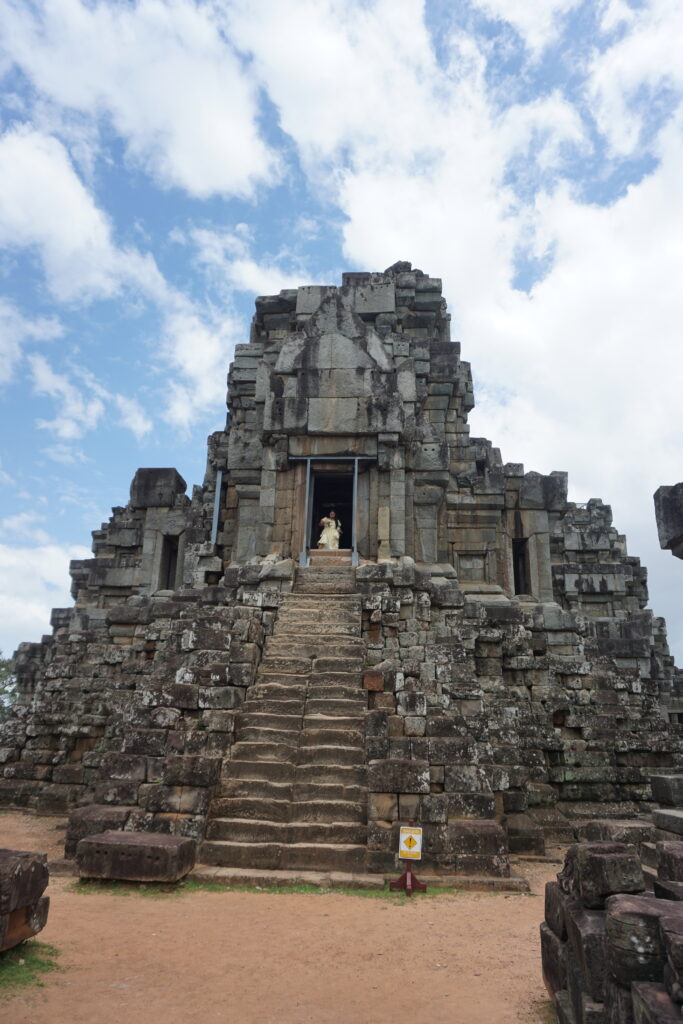
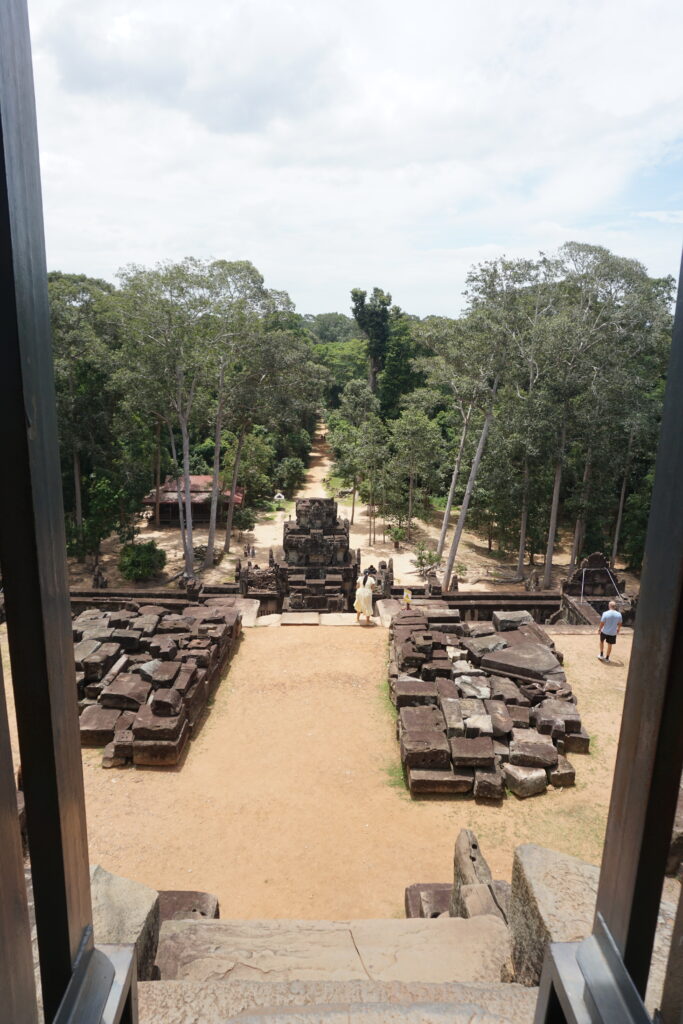
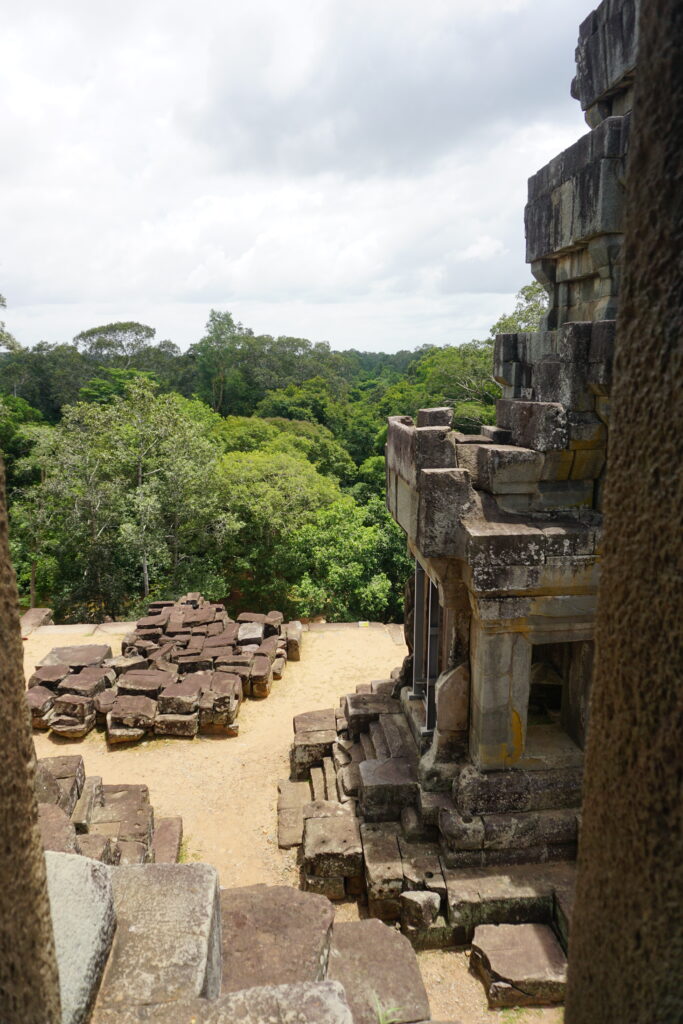
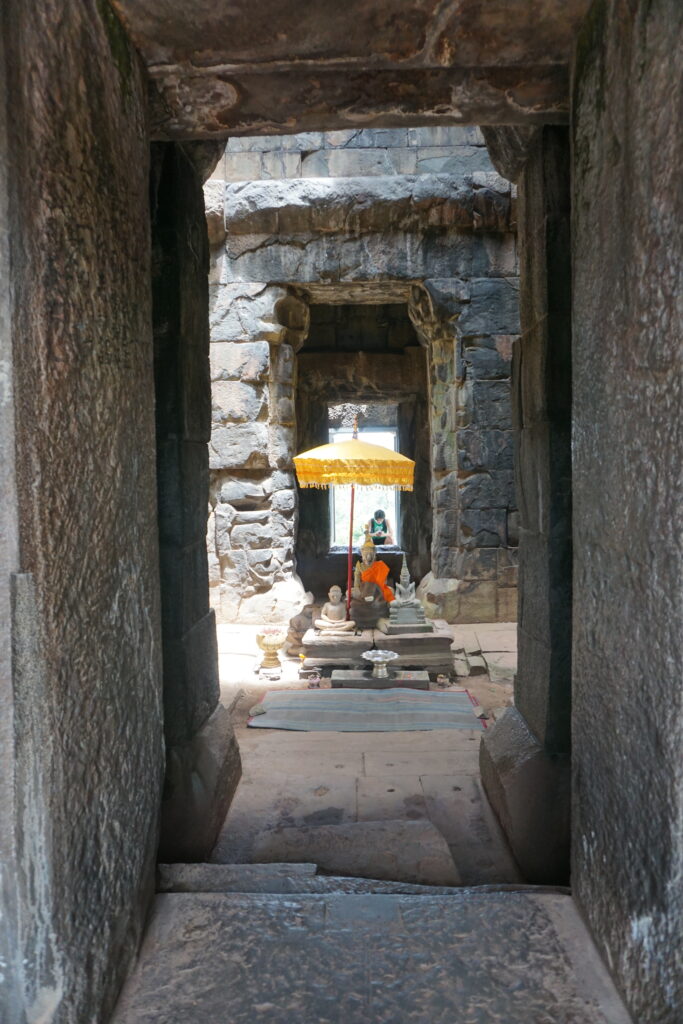

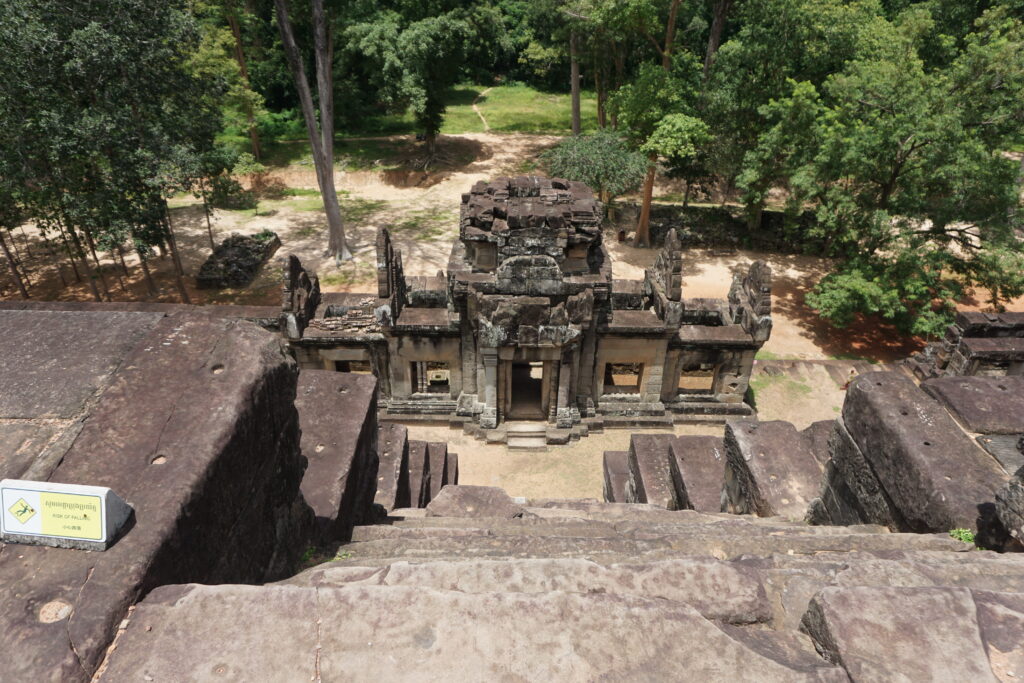
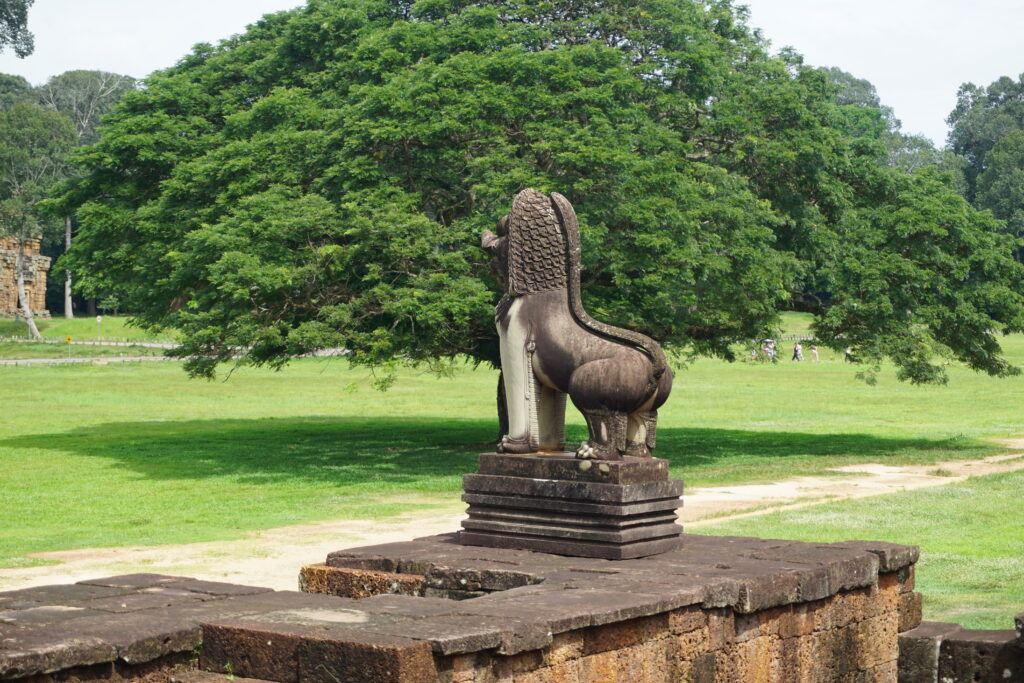
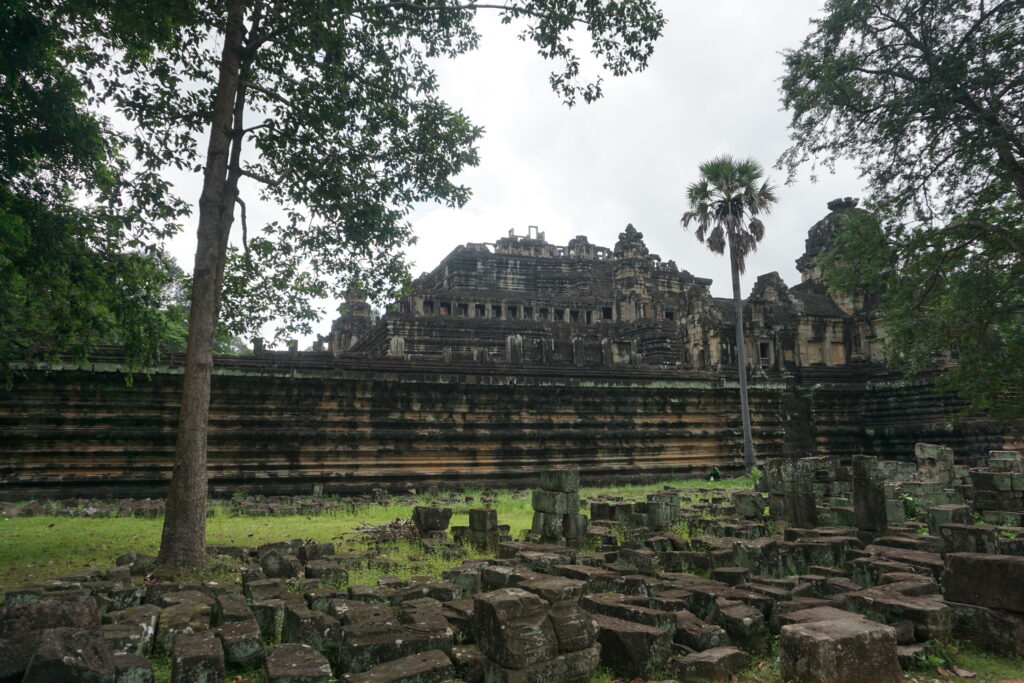
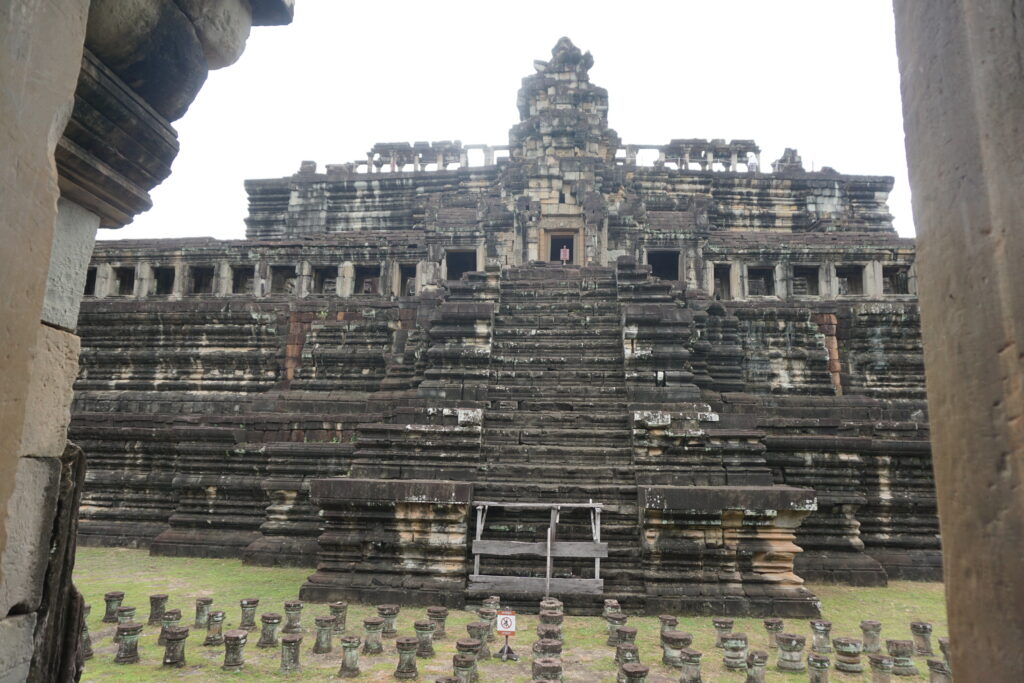
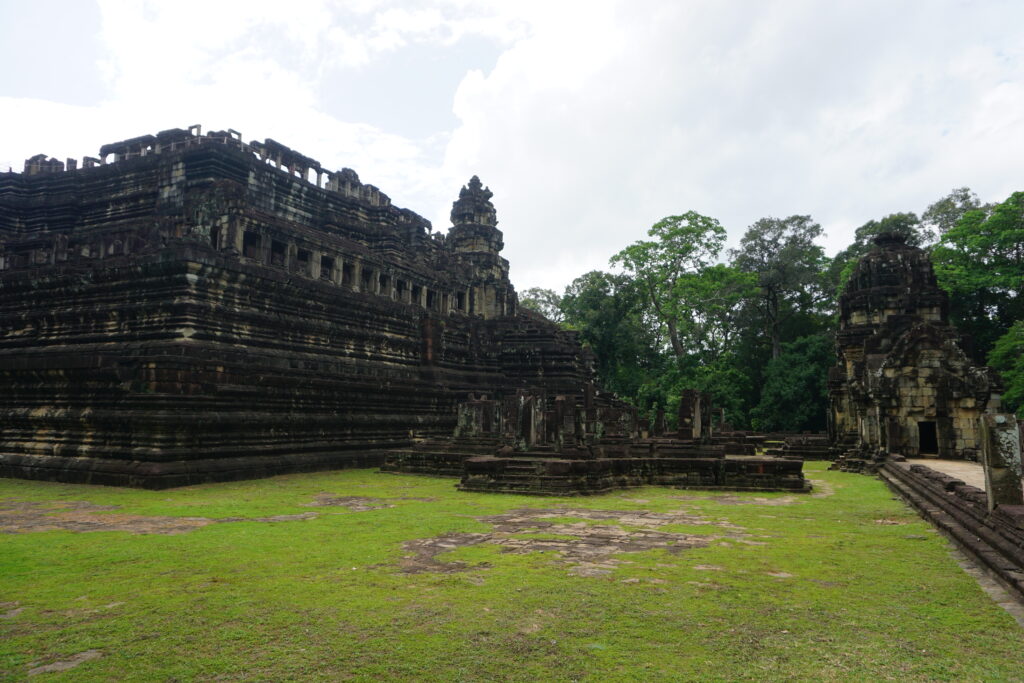
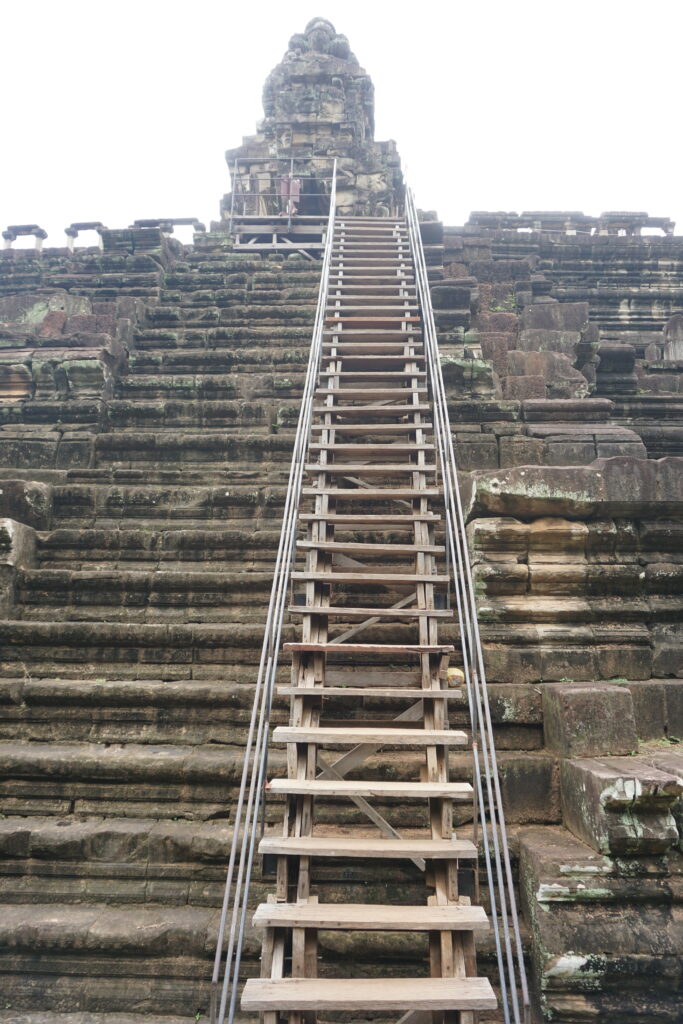
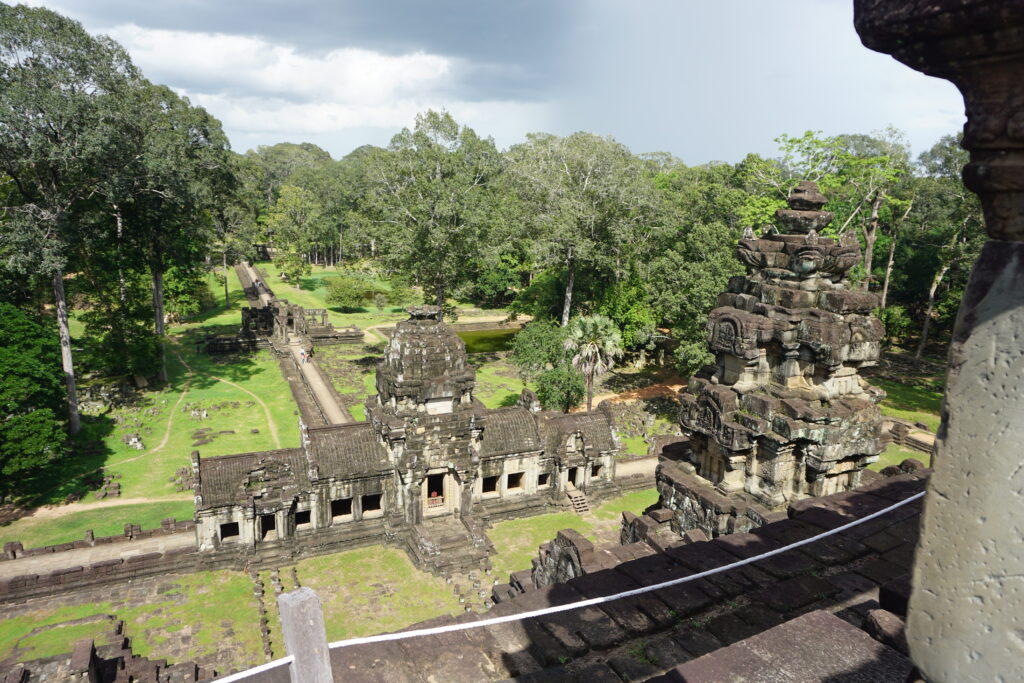
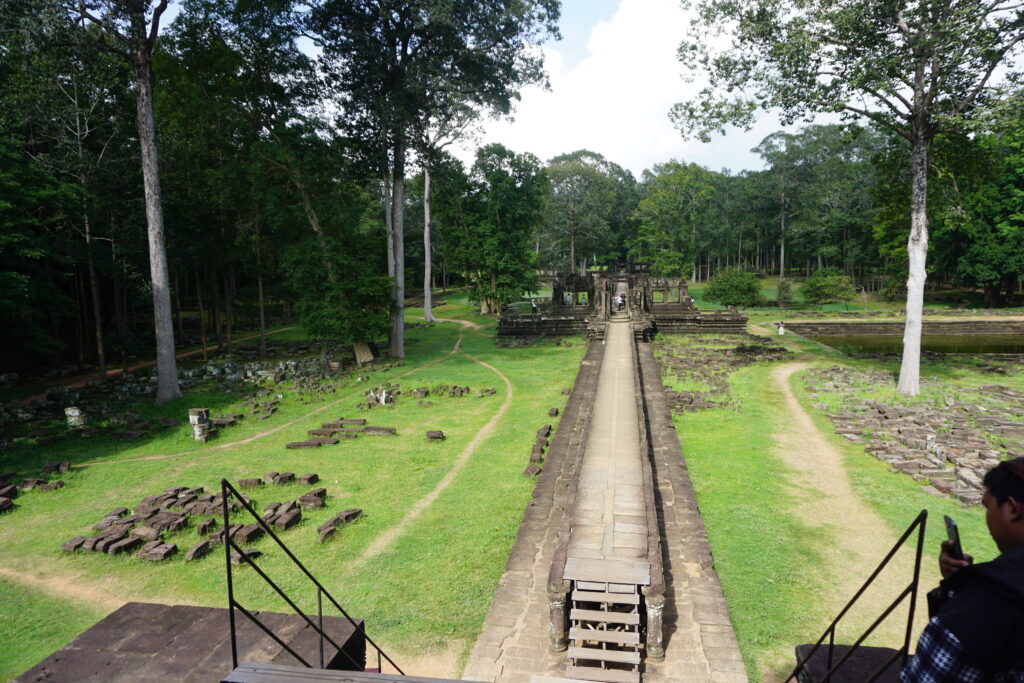
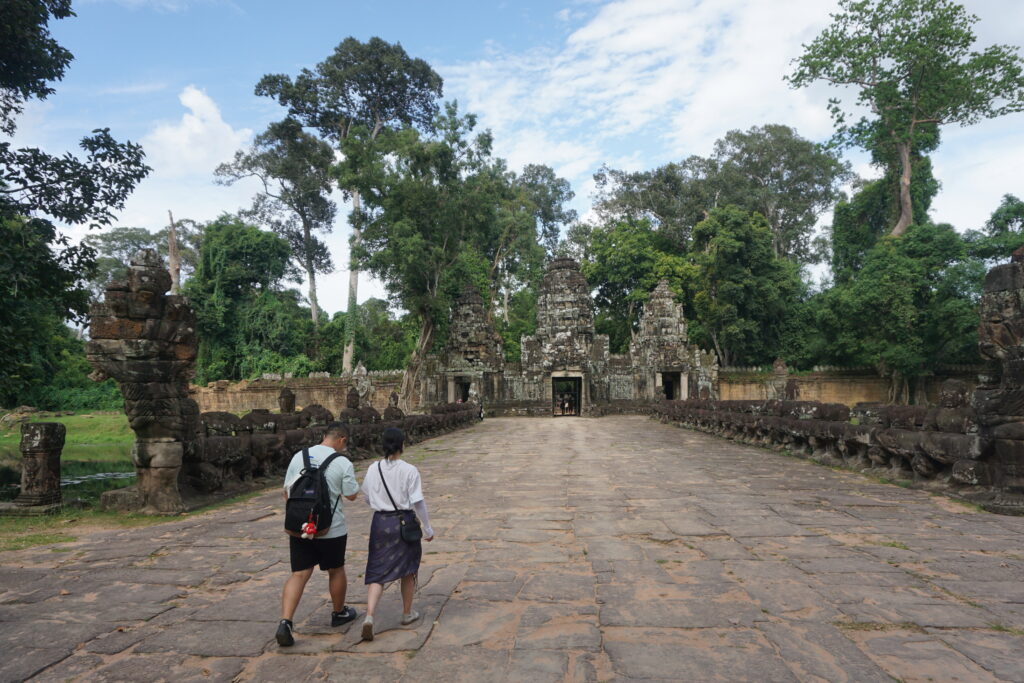
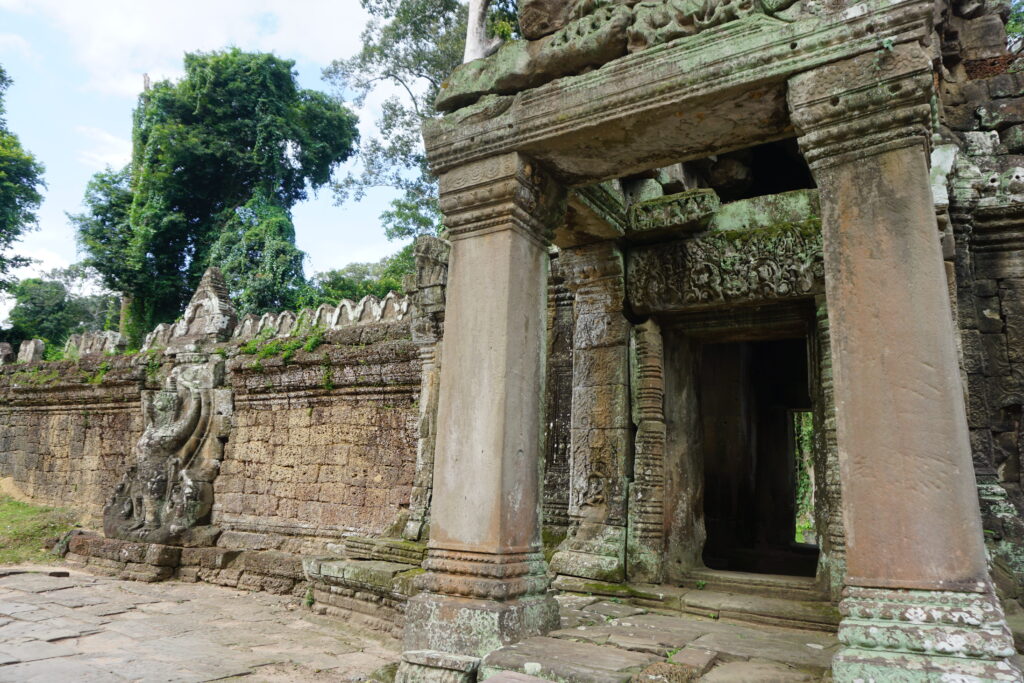
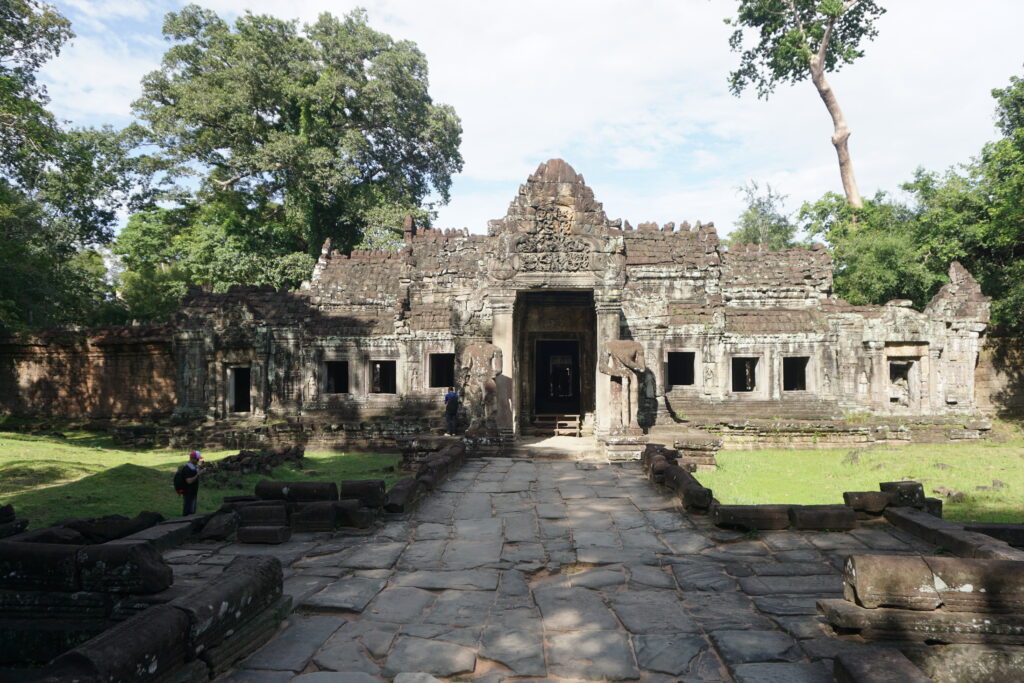
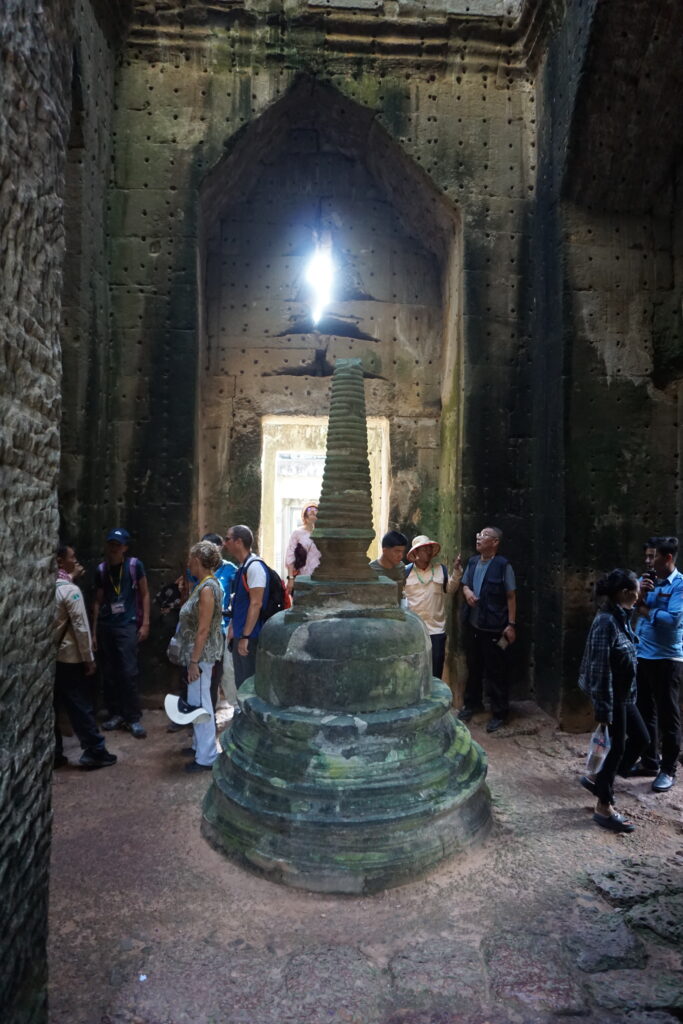
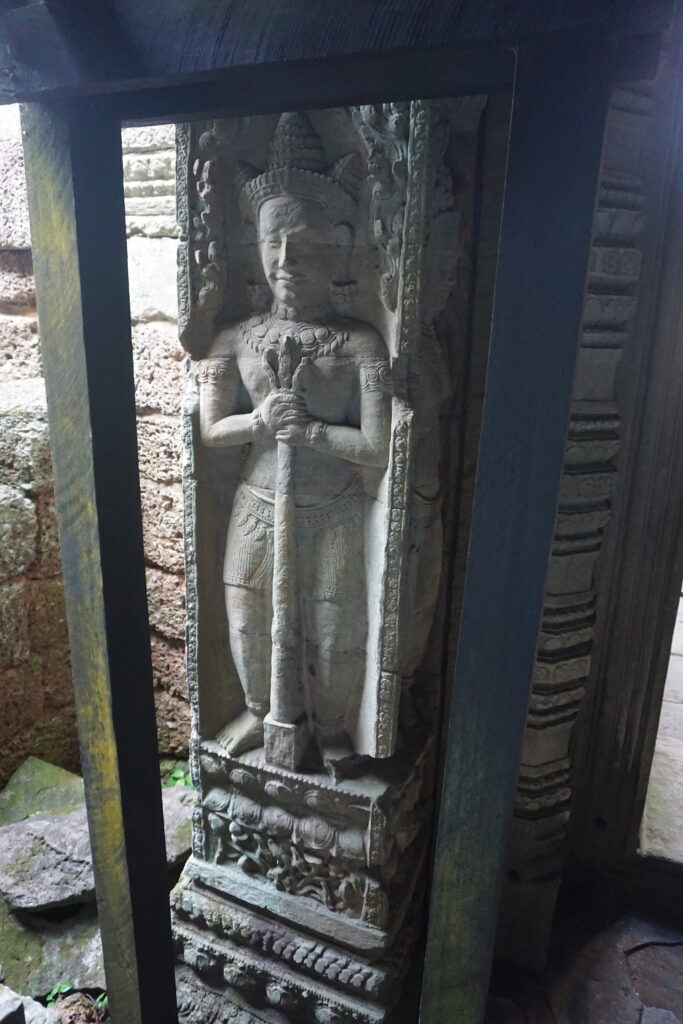
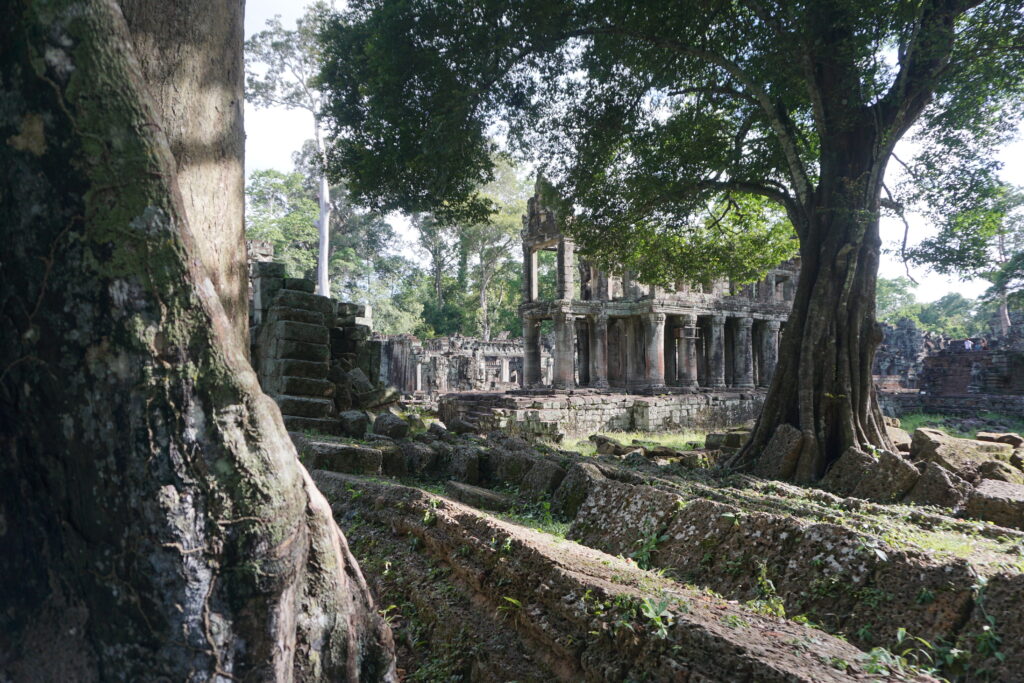
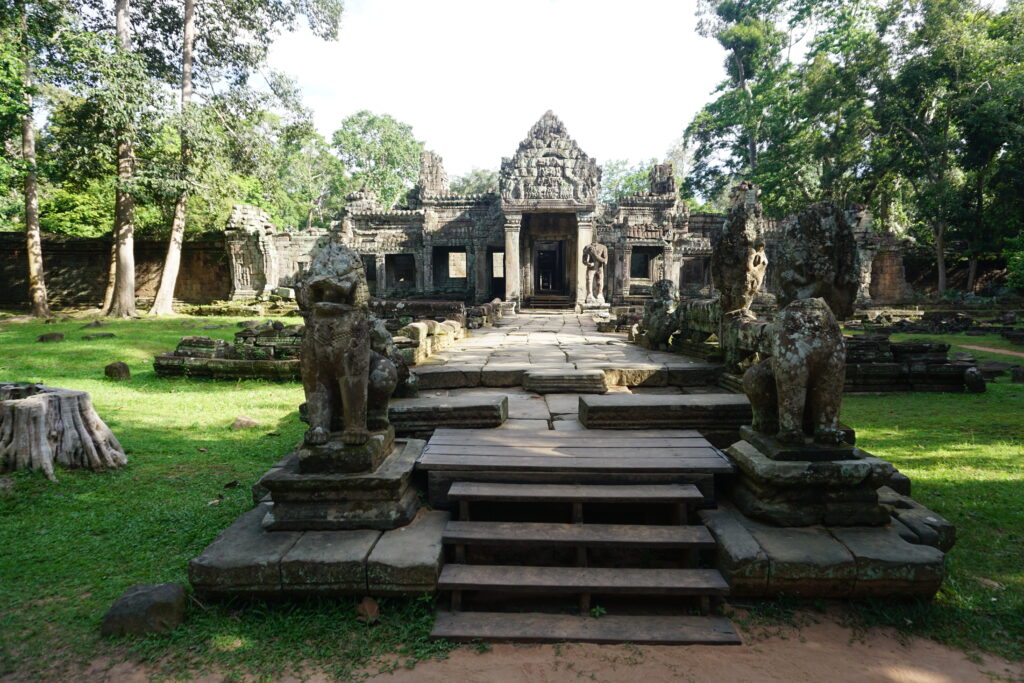
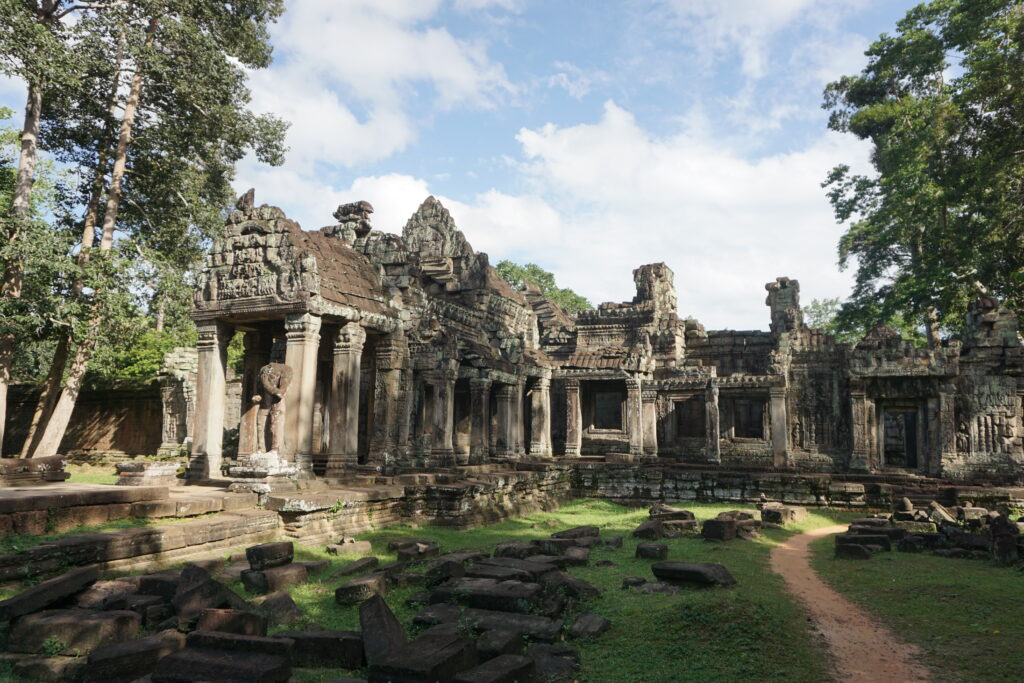

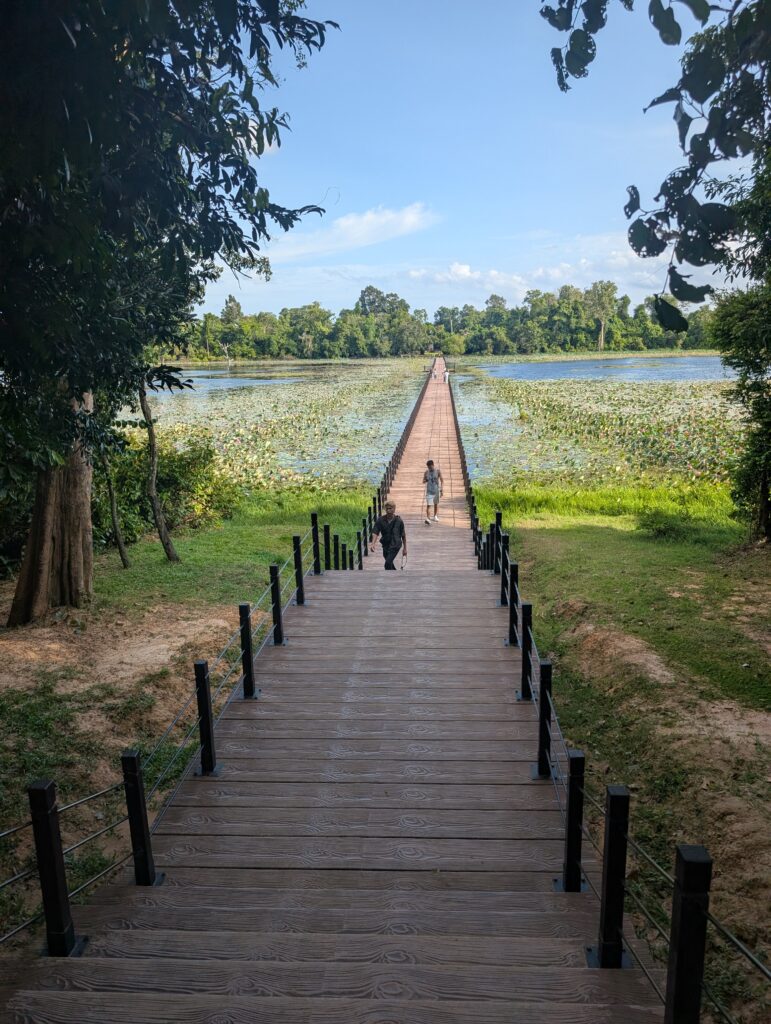
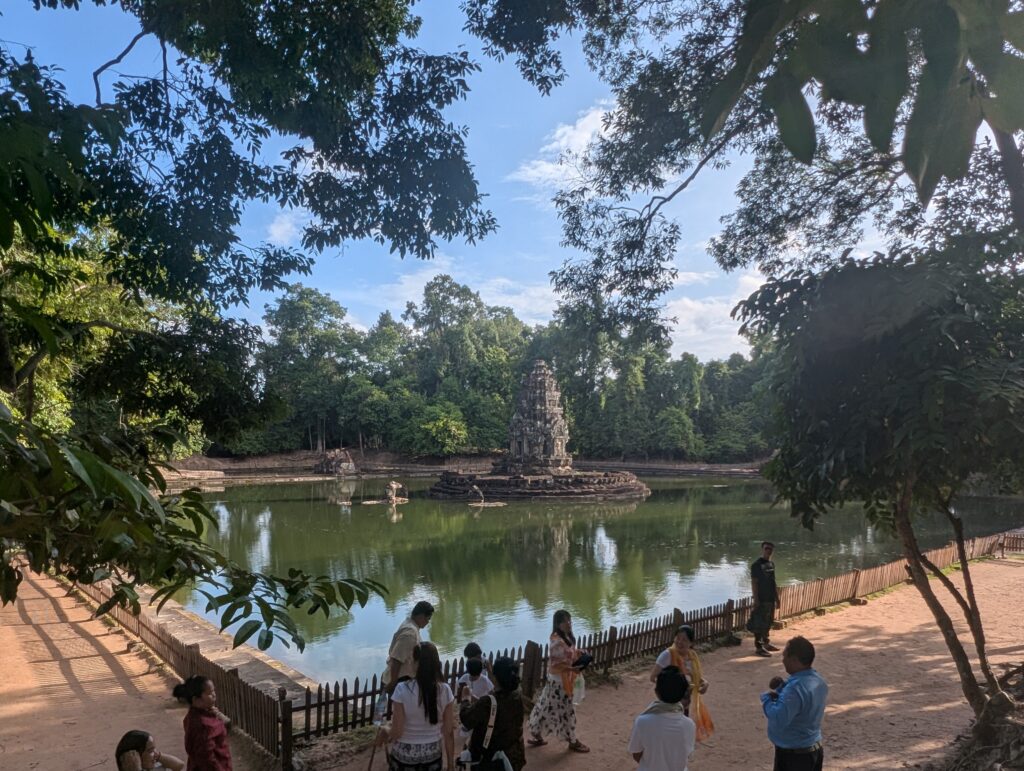
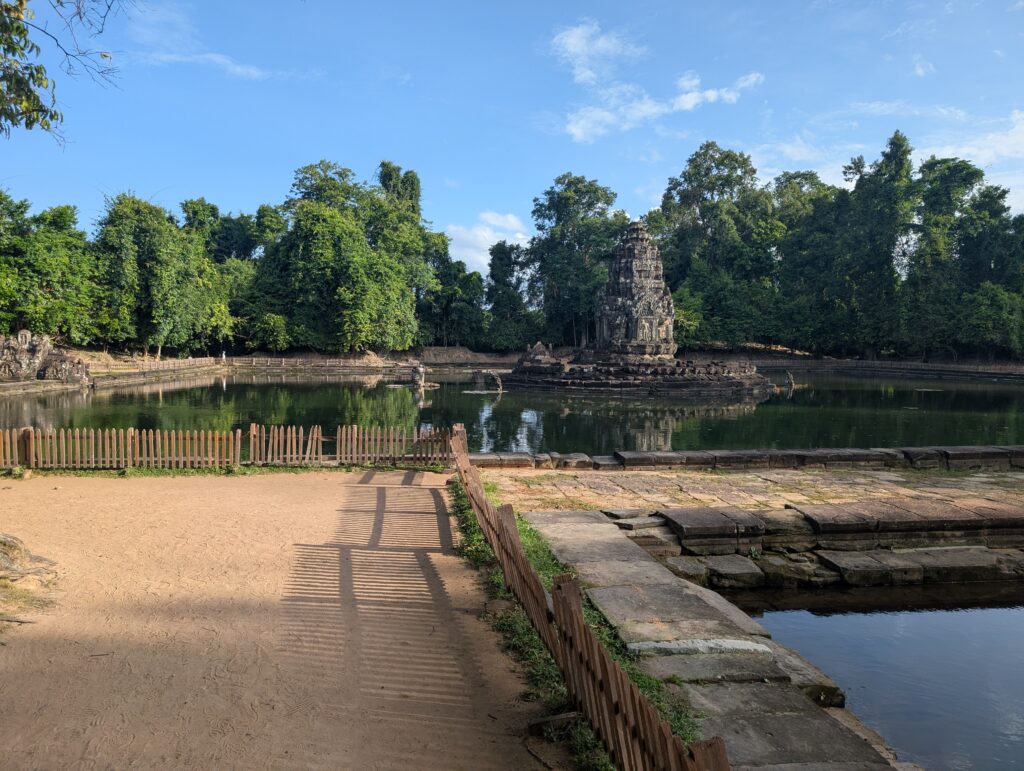


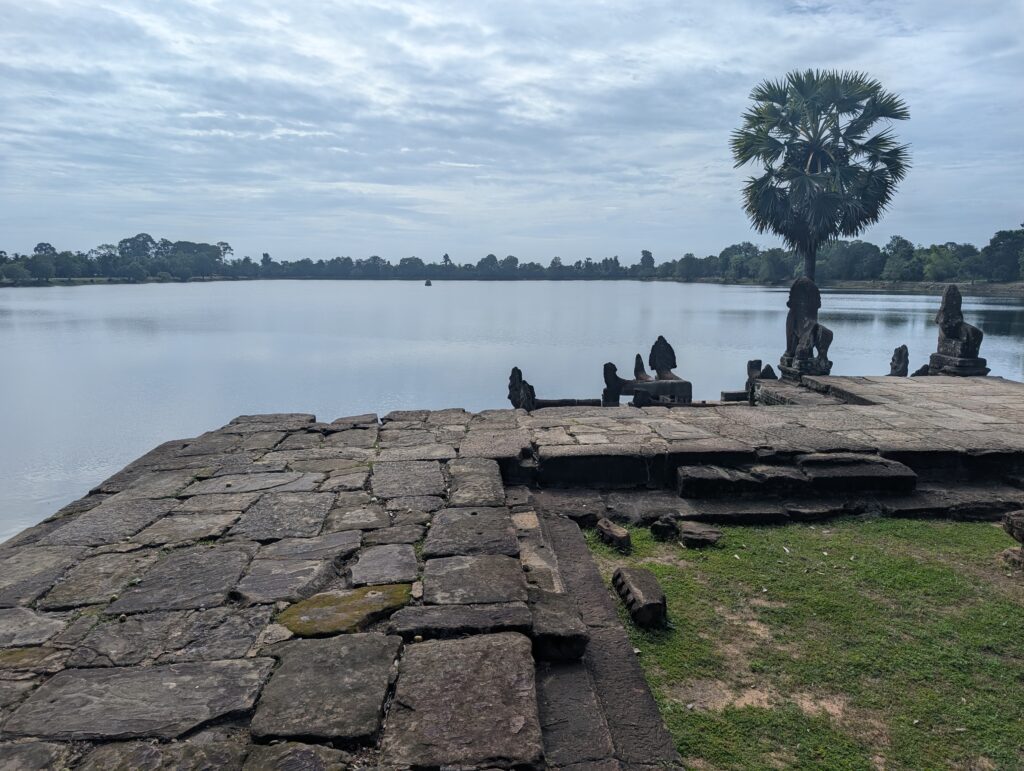
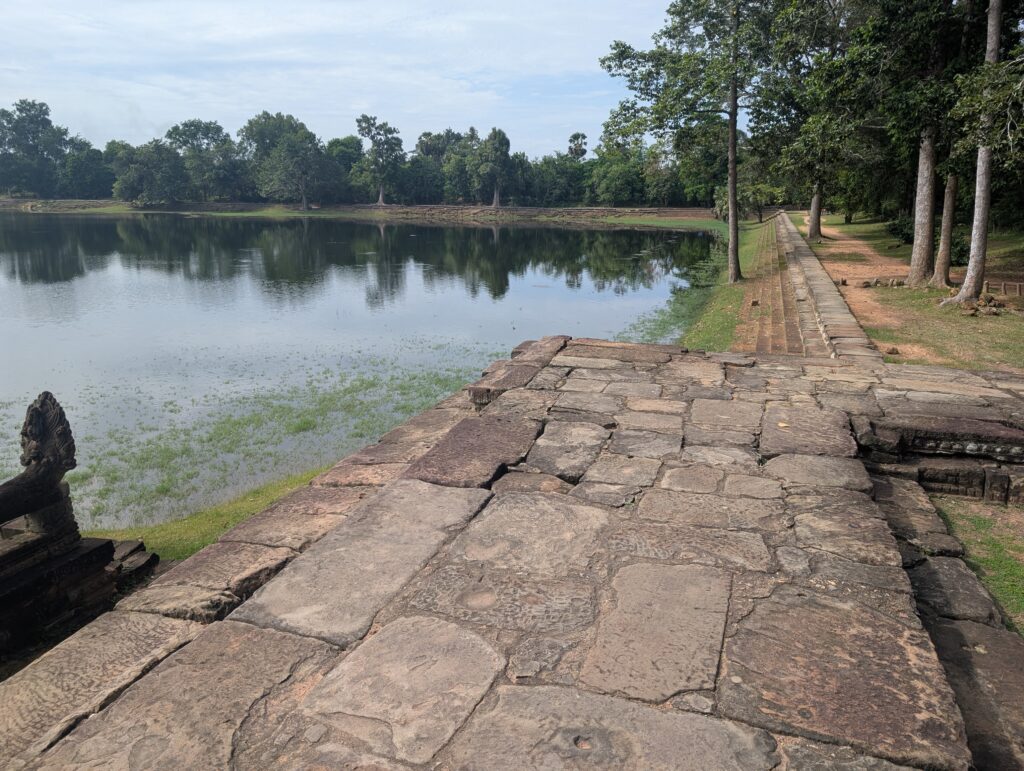
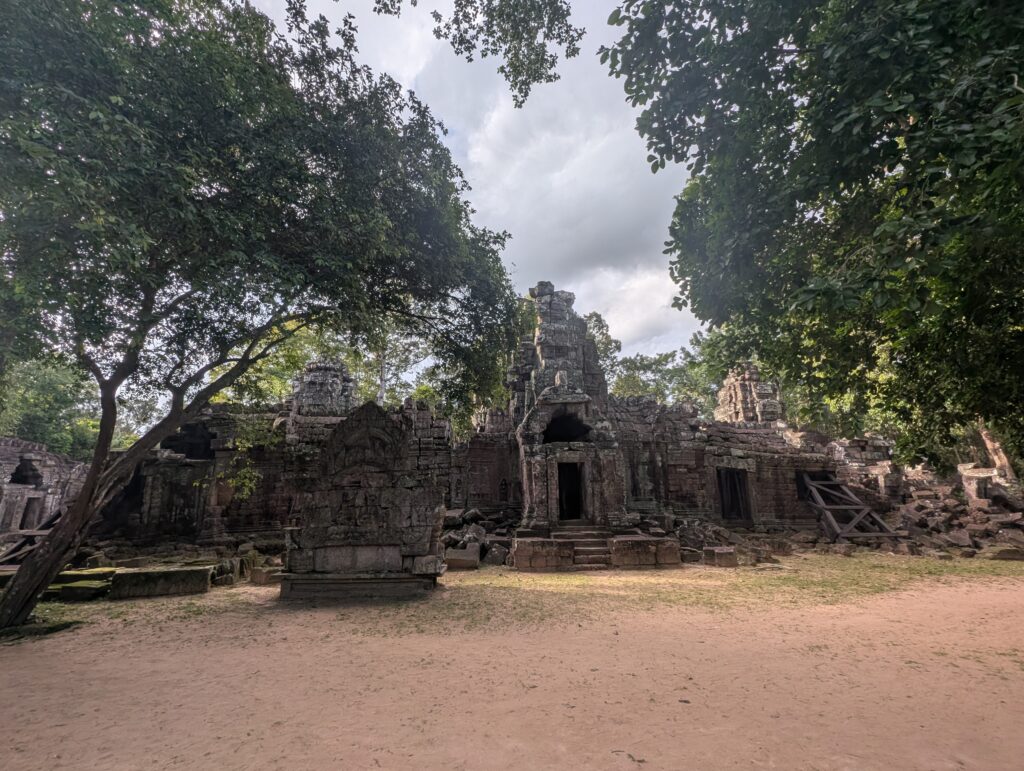
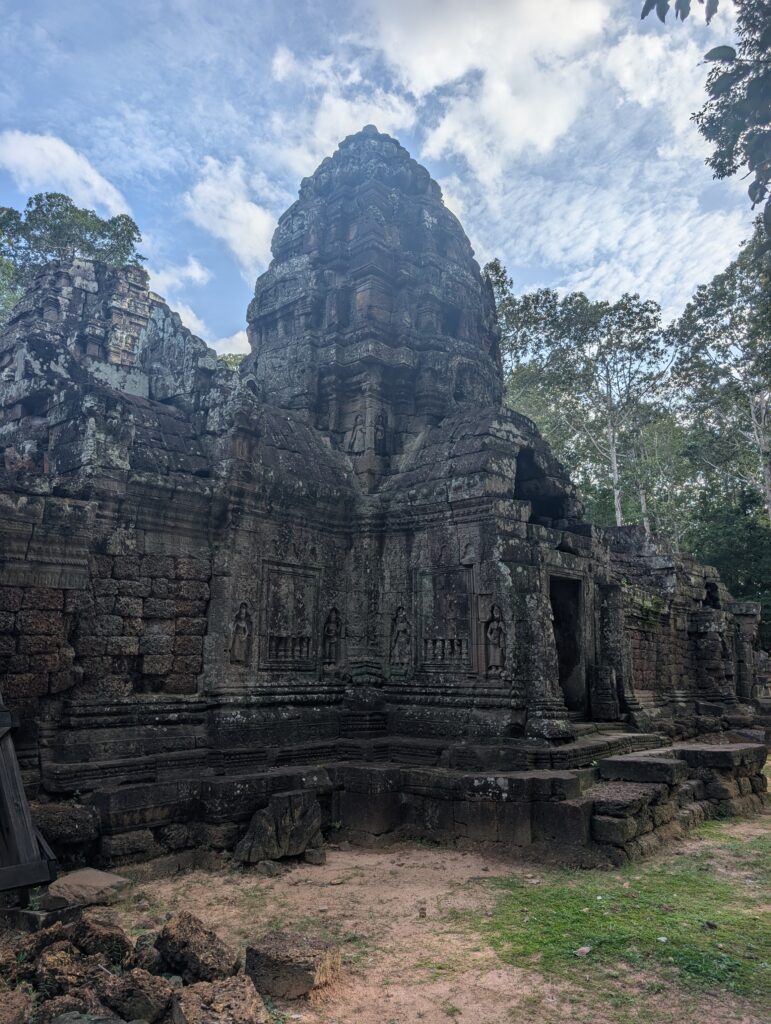
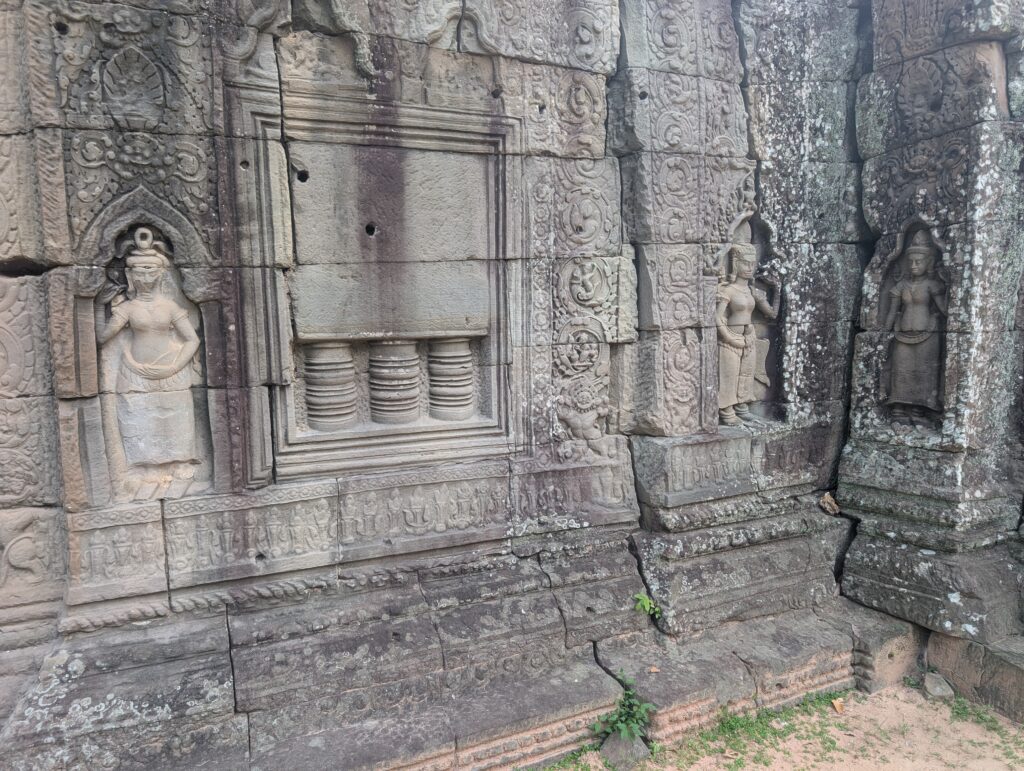
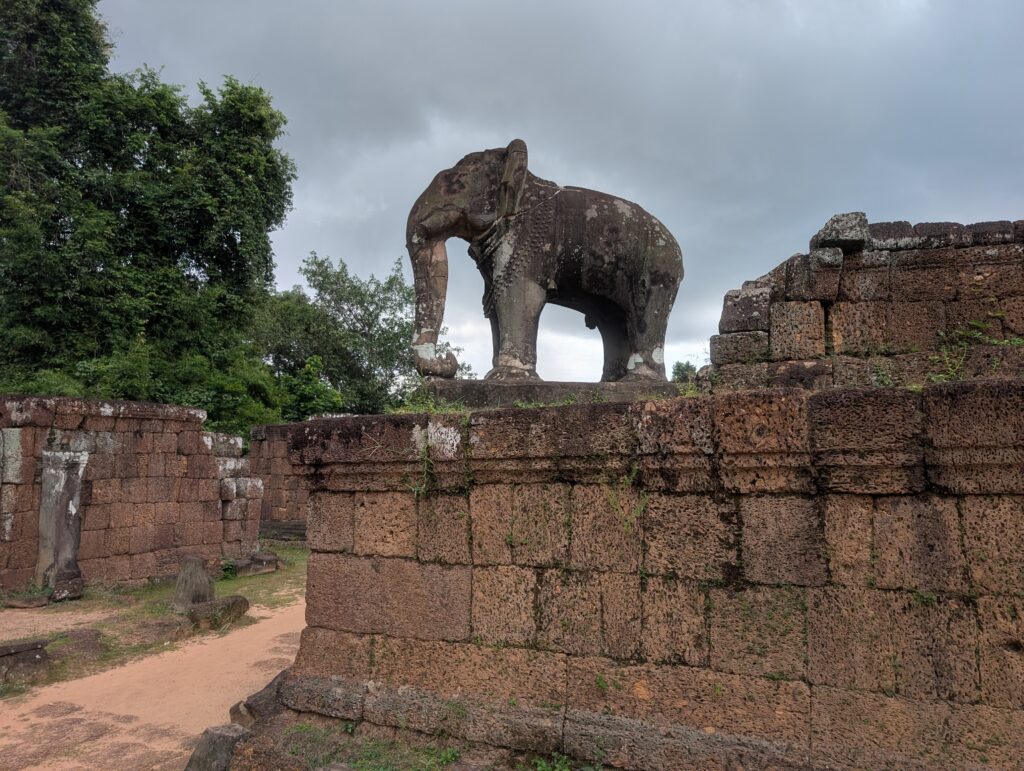
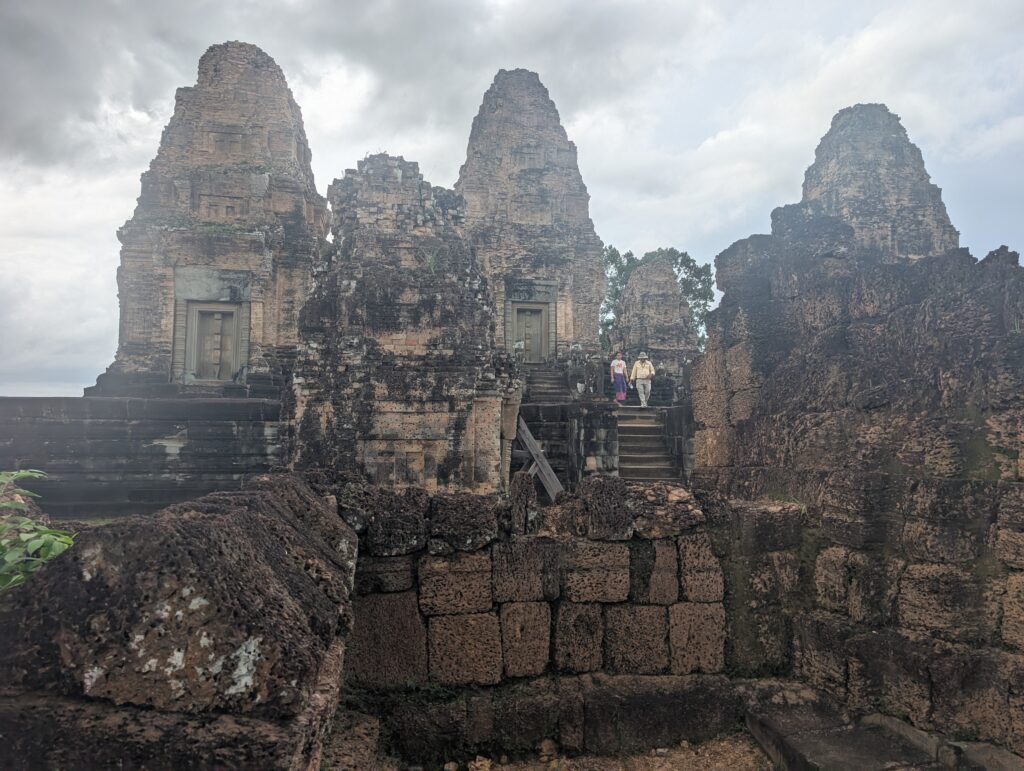
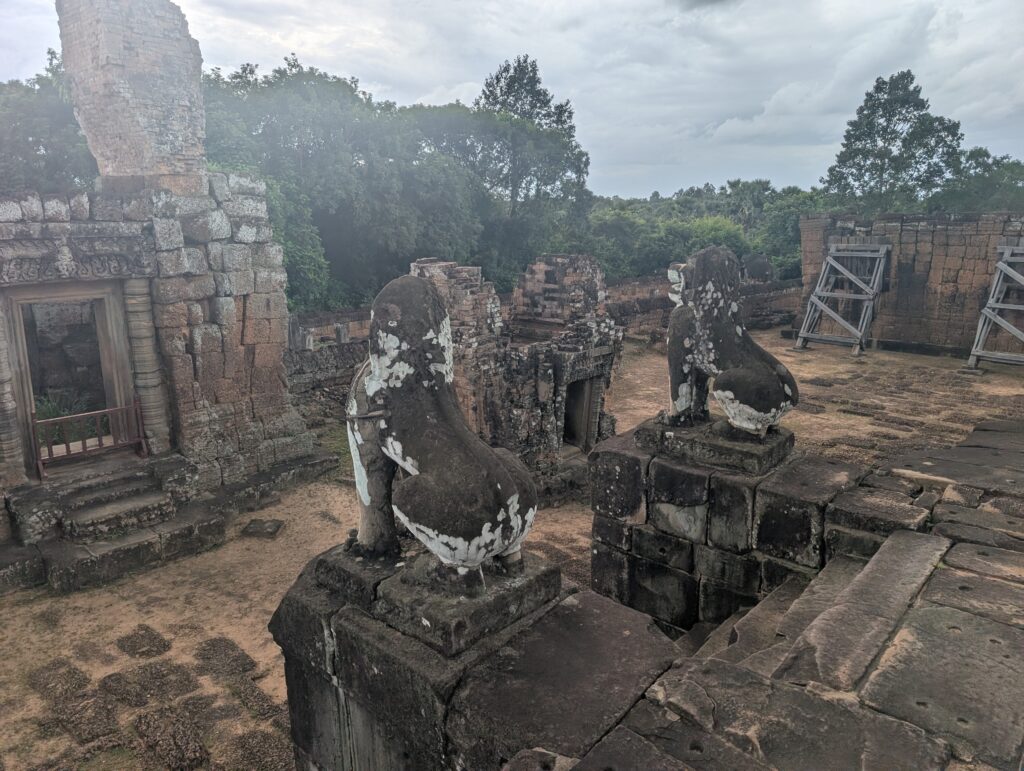
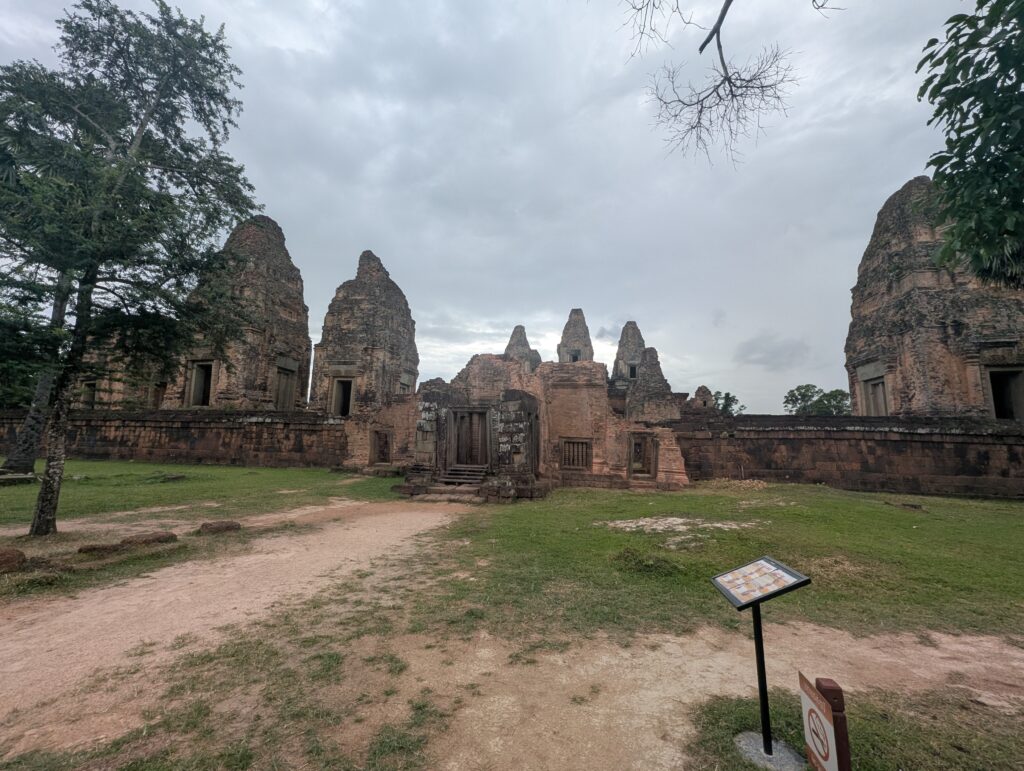
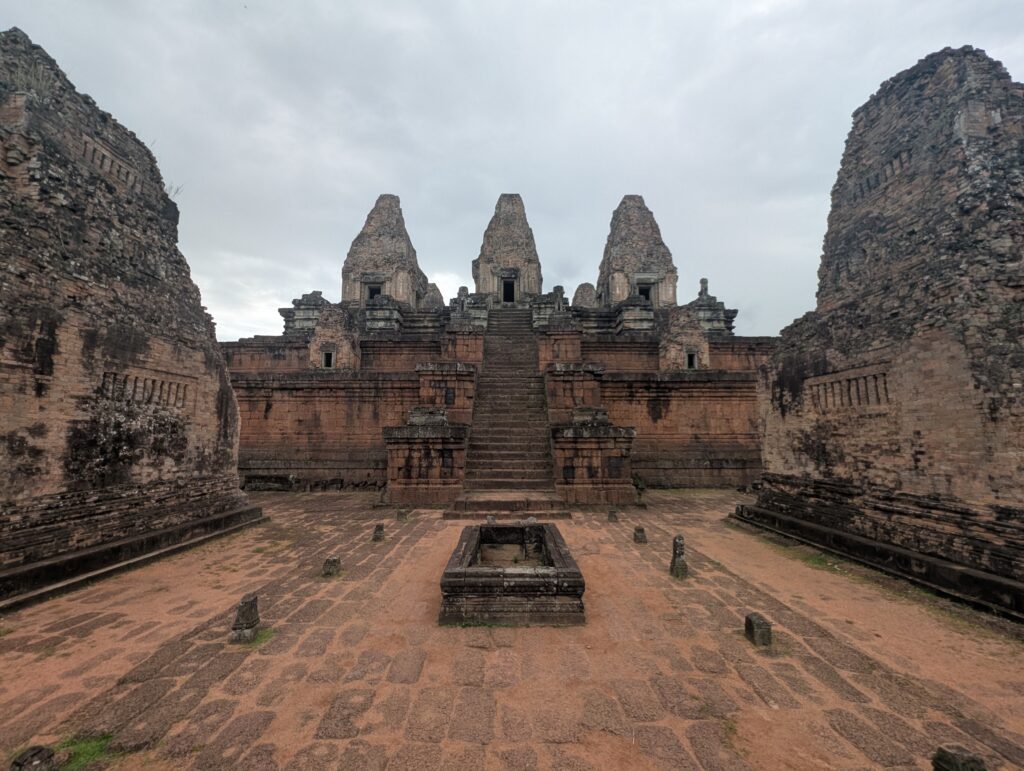
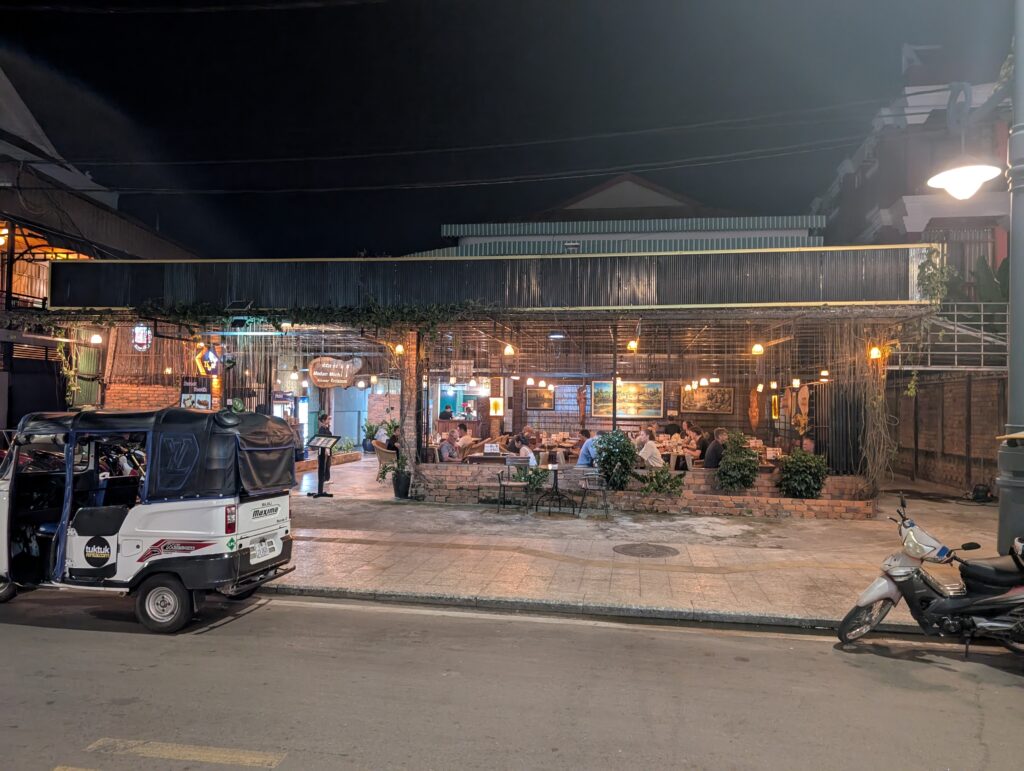
I did not have a very early start Thursday, either, contrary to my best laid plans. I stuck with my program anyway. My idea was to ride out about ten miles east of town, off of the main circuits, to a pocket of three or four other temples. The roads out there were rougher, and often had big bumps and loose sand. In many cases, there had once been a road, but now there was just a snaking six inch wide packed path that motorbikes followed. Trash was dumped here and there. It reminded me of the unpaved part of the Santa Fe Grade between Dos Palos and Los Banos, California – a bad road through alkali and rice fields littered with trash. The main difference was that the trash was smaller in Cambodia, reflecting the poverty. There weren’t many appliances or pieces of furniture. That, and there were no duck clubs in Cambodia.
The temples were nice and secluded so far from town and the normal tourist circuit. They were small, and didn’t take too long to visit. Bakong was the first, and most impressive. After visiting that one, it was lunch time. I relaxed and ate some more lok lak while swilling a giant water. I had again expended all of my water. A funeral procession passed as I ate my meal. A large crowd of people went before and after a big casket on a palanquin. Some people carried a black banner with some Khmer writing in the far front. Not too far behind was a food cart. It didn’t look like all that somber an affair. School children in uniform joined. Occasionally, someone dropped out of line to grab something from the restaurant, a drink or a quick bite. Music was playing, and there was a police escort. It was interesting and different, for sure.
I made brief stops at Preah Ko and Lolei Temples before opting to set off cross country on the bike for one last hurrah at the main temple before my three day pass expired. I knew the ride might be slow. As it turned out, most of the time, I was riding down rice levees, around skinny Brahma cows, and past children calling out “Hello, Goodbye” in English. I answered, “Suostei, Leihi” in Khmer. Some of the children were silent. Others swam in the rice water to get out of the heat. A few looked like they could have been on those “feed this child for a month with $1” advertisements. It was a different Cambodia than you see on Pub Street in Siem Reap, for sure.
While I was riding along on some stretch that used to be a road, a boy about Caleb’s age zoomed past me on a motorbike. In America, I guess he wouldn’t be allowed on such a machine unless he was out on a farm or ranch or something. The kid looked at me with a grin that seemed to scream, “I just stole something.” He was apparently so excited to rocket past this old American, laboring along on the mountain bike. It was hilarious, and I smiled inside the rest of the ride. I hope the experience brought him as much enjoyment as it looked like it did.
I made it back over to the main temple by 3:00, leaving myself a couple of hours to see the main attraction one more time. I soaked it all in. I took more pictures. I talked to another vendor family. Very few people were there in the Thursday afternoon heat. I came far short of seeing everything the Angkor Wat archaeological sites have to offer, but I felt satisfied I had gotten about as much use out of a three day pass as could be wrung out of it. It would be wiser to spend a couple more days here and do something else one or two days between huge temple runs.
I returned my bike. The bike store man was playing a friend some kind of Southeast Asian chess variant. It wasn’t chess like we know it, and it wasn’t even Chinese or Japanese chess, it was something altogether different. Right next door, was “My Little Cafe,” serving meals for about $3. I grabbed a couple of dishes once again. I slept well knowing I had done my best to see as much of Angkor Wat as I could in the time I had.
I was up early the next morning. I didn’t run, I had had enough exercise for the week. The motel got me a tuk tuk, and I was on a long, slow, sweaty bus ride to Phnom Penh to close out my time in Southeast Asia.
